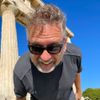Week 188: Cappadocia and Pammukale
An epic roadtrip with Sarah and Peter where we travel from Mytilini to Ayvalik, then Cappadocia, Pammukale and back to Ayvalik and Mytilini.
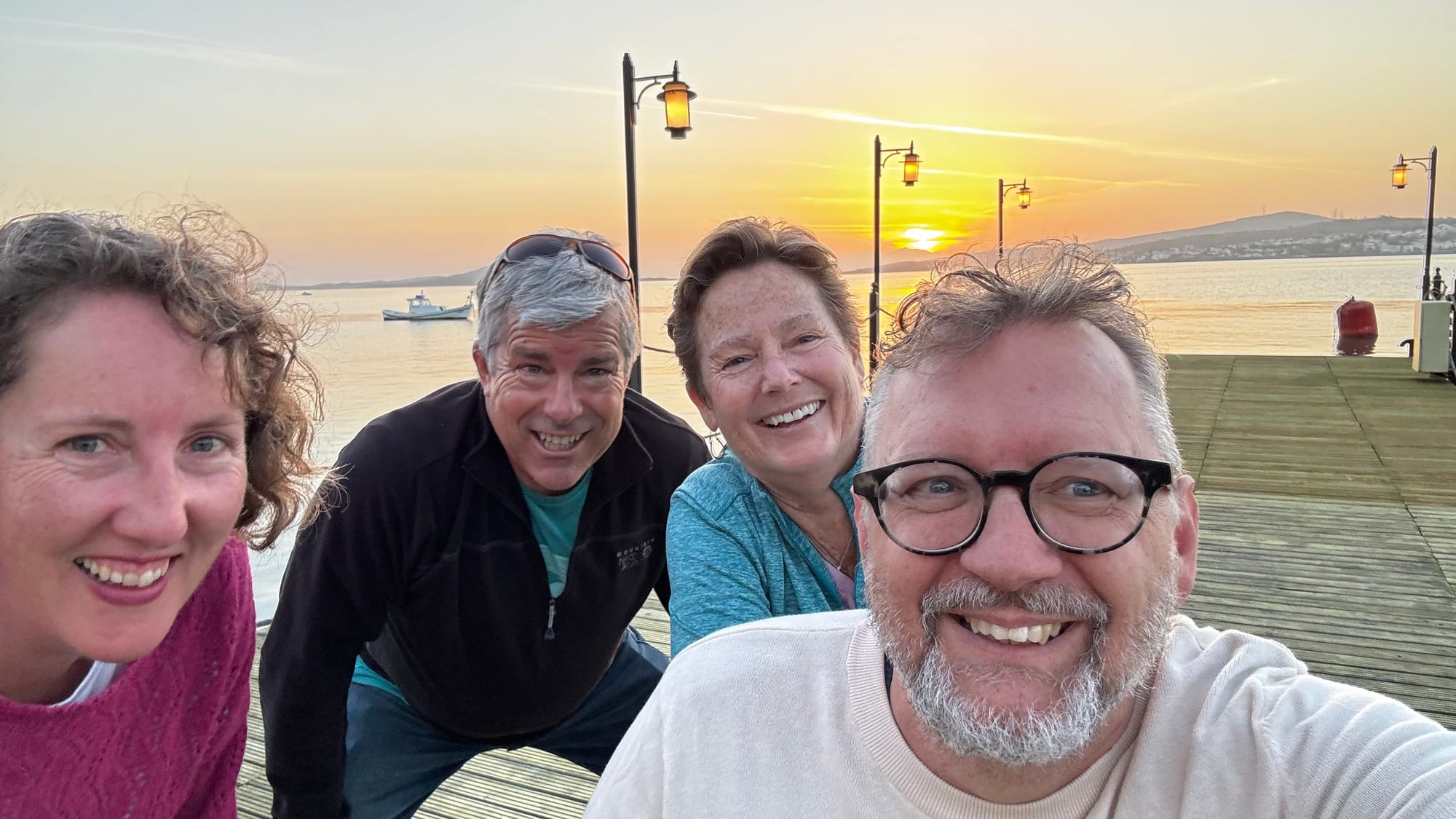
This week we've been on a road trip with Peter & Sarah from Flying Fish. It's been a long time since we've travelled with others, especially where we were not hosting, and it's been a lot of fun sharing our adventures together.
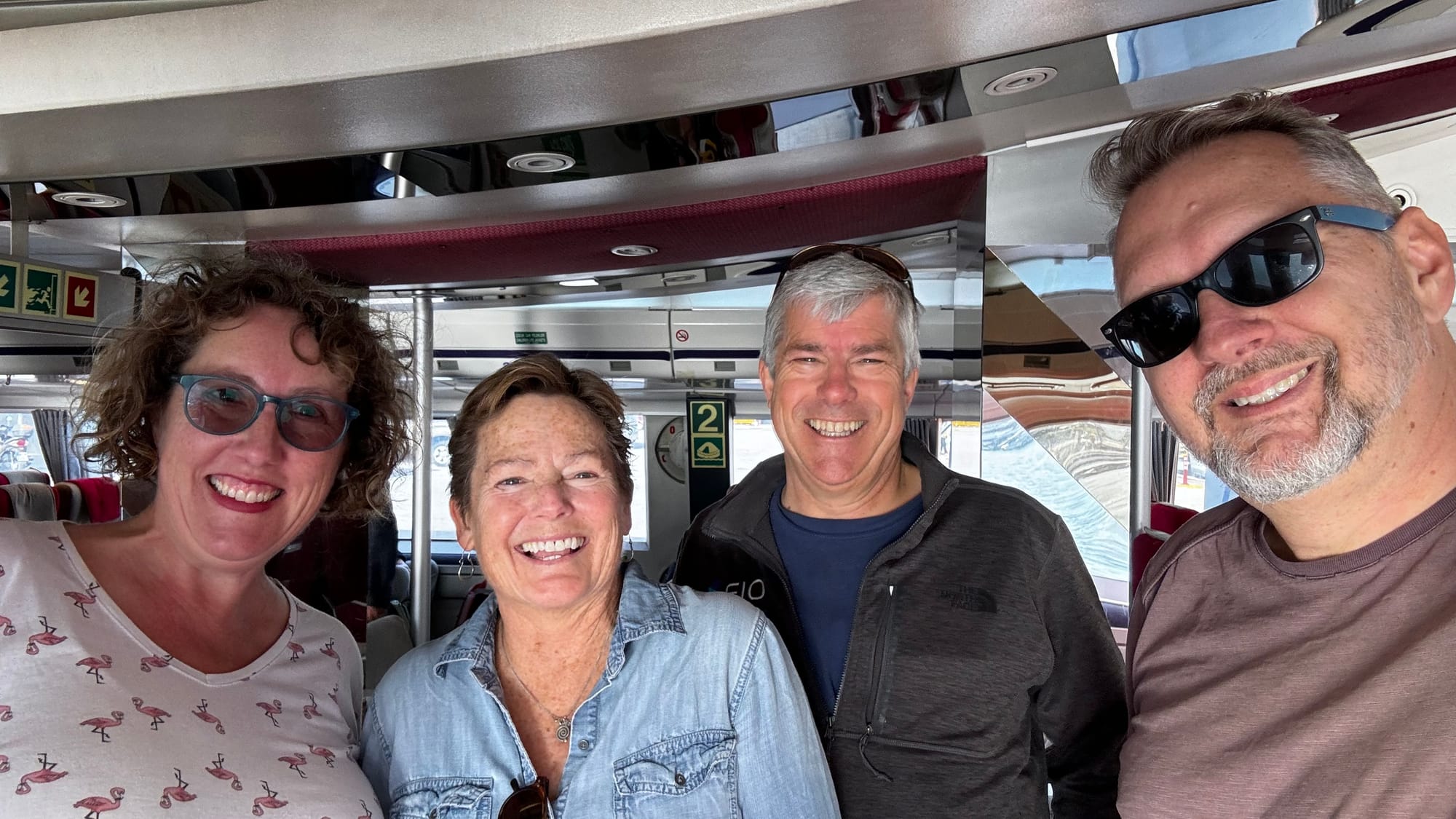
After crunching all the sums, we decided the best way to get to Cappadocia was to catch the ferry from Mytilini to Ayvalik, then hire a car from the nearest airport and drive. The ferry trip over was very easy – literally within 1hr 30 door to door, we were in Türkiye. It's a nice small port, so going through passport control is easy.
In Ayvalik, we tried to get Turkish lira out of what we thought was an ATM, only to be plugging in our PIN to a water dispensing machine that baulked at pushing out thousands of litres. Within 40 minutes, we were at the airport, which was a very strange experience.
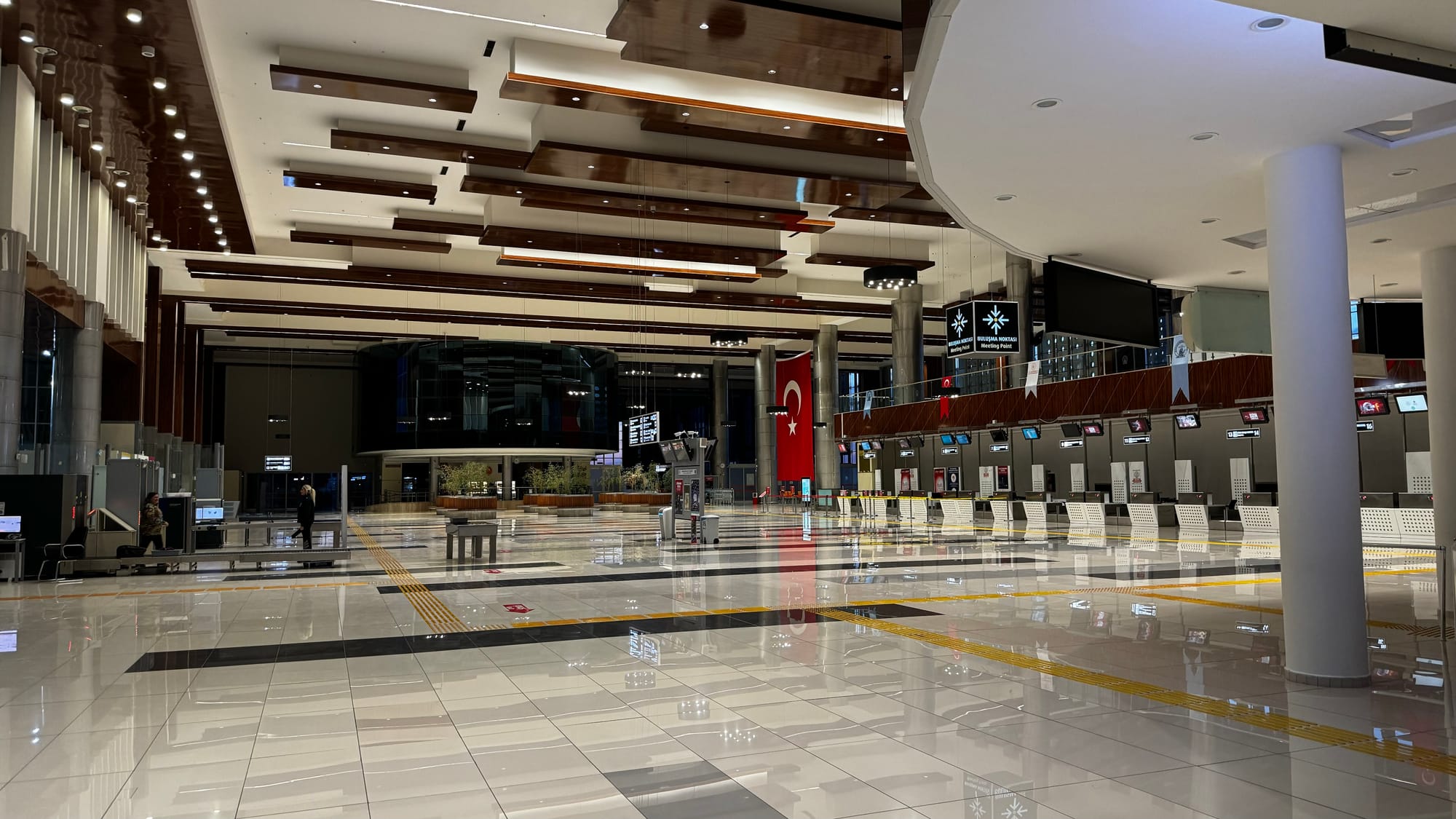
There was no one there! We were between flights, all the lights were off, and we weren't even sure we'd be able to get in to collect the rental car. Fortunately, security was on duty (we had to have our bags scanned and pass through a detector even to enter the airport), and we found our way to the car hire.
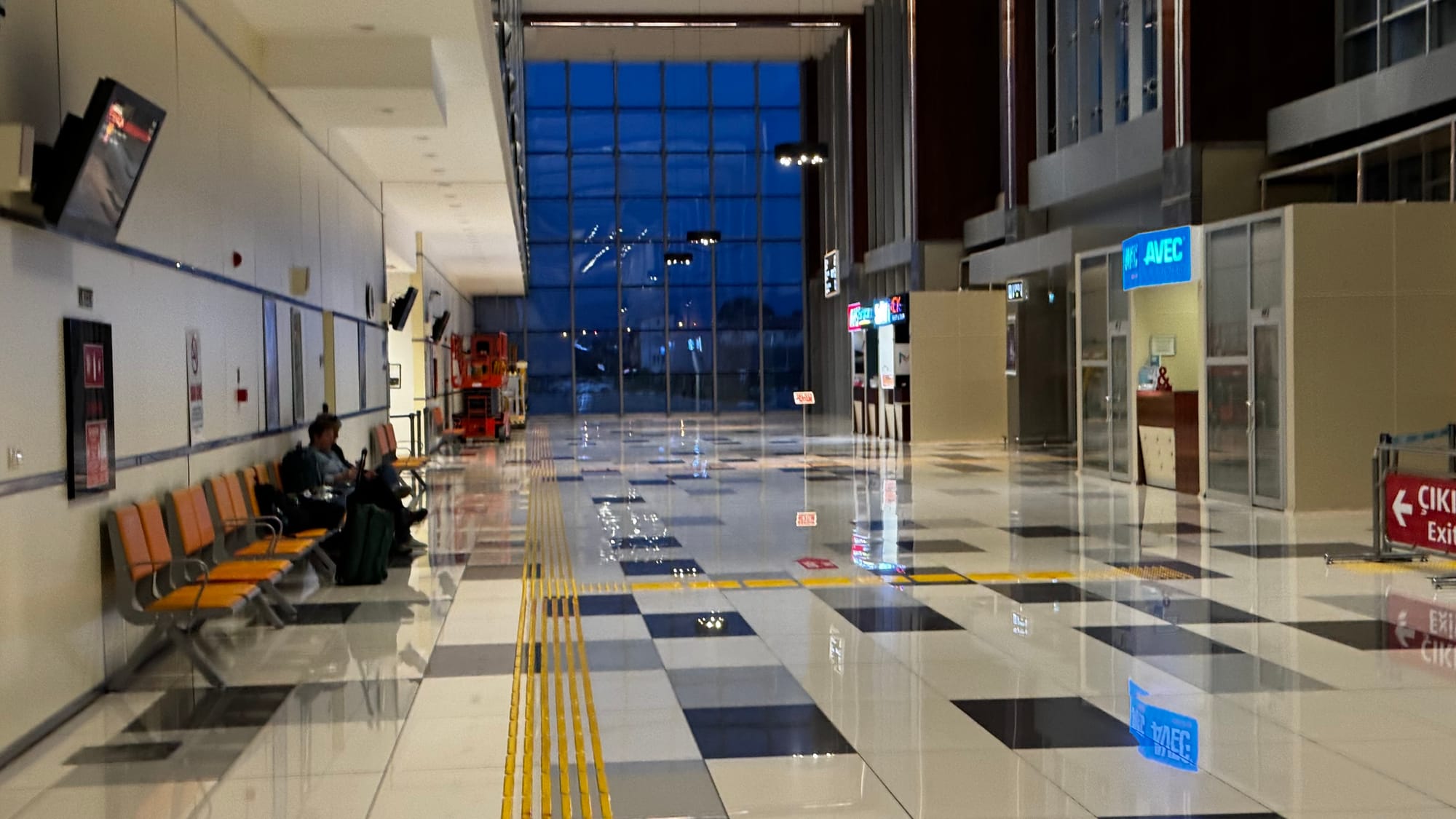
Unfortunately, I'd put the wrong time for collection, and there was no one at the desk, so we spoke to a different company. They gave us water and a hand sanitiser (not a mouthwash, Sarah; don't ask her how she knows that) and called them for us. Within thirty minutes, the car was collected, and we were on our way.
Despite the slight delays, we still made it to our first destination, Bursa, without a hitch. The roads in Türkiye are very good, many of them new, and aside from the occasional slow vehicle (a problem when the speed limit is 140), there were no difficulties at all.
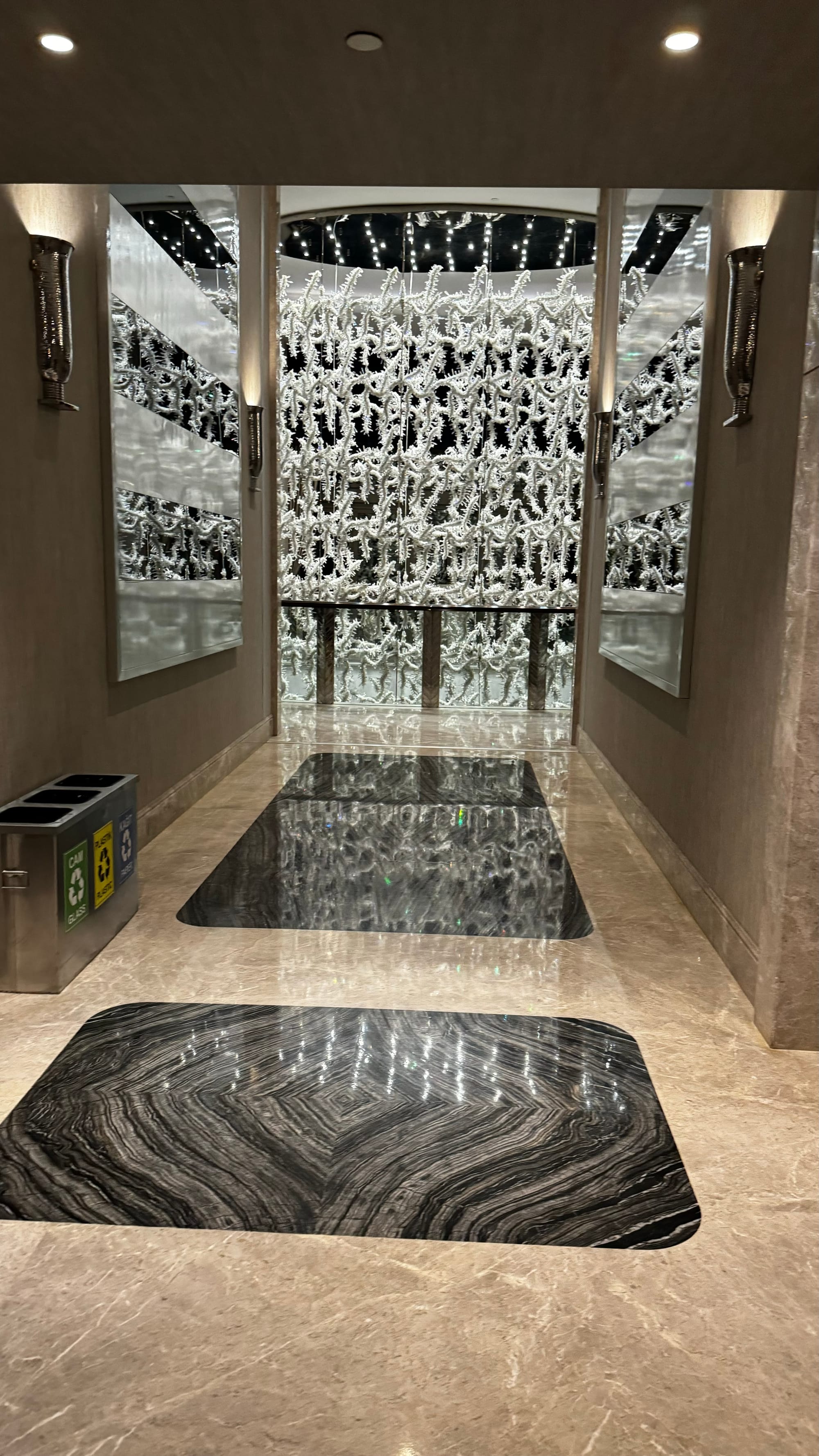
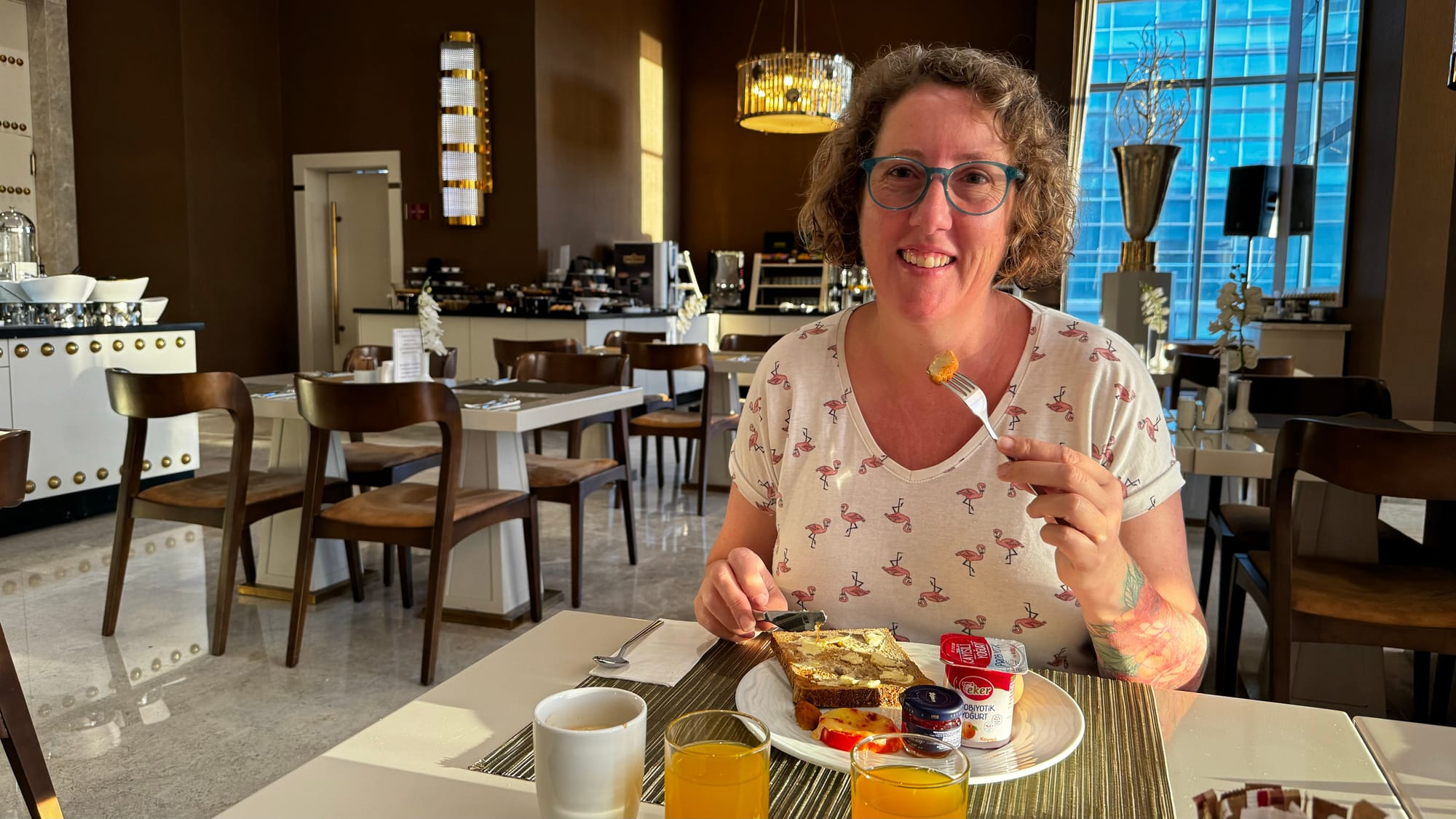
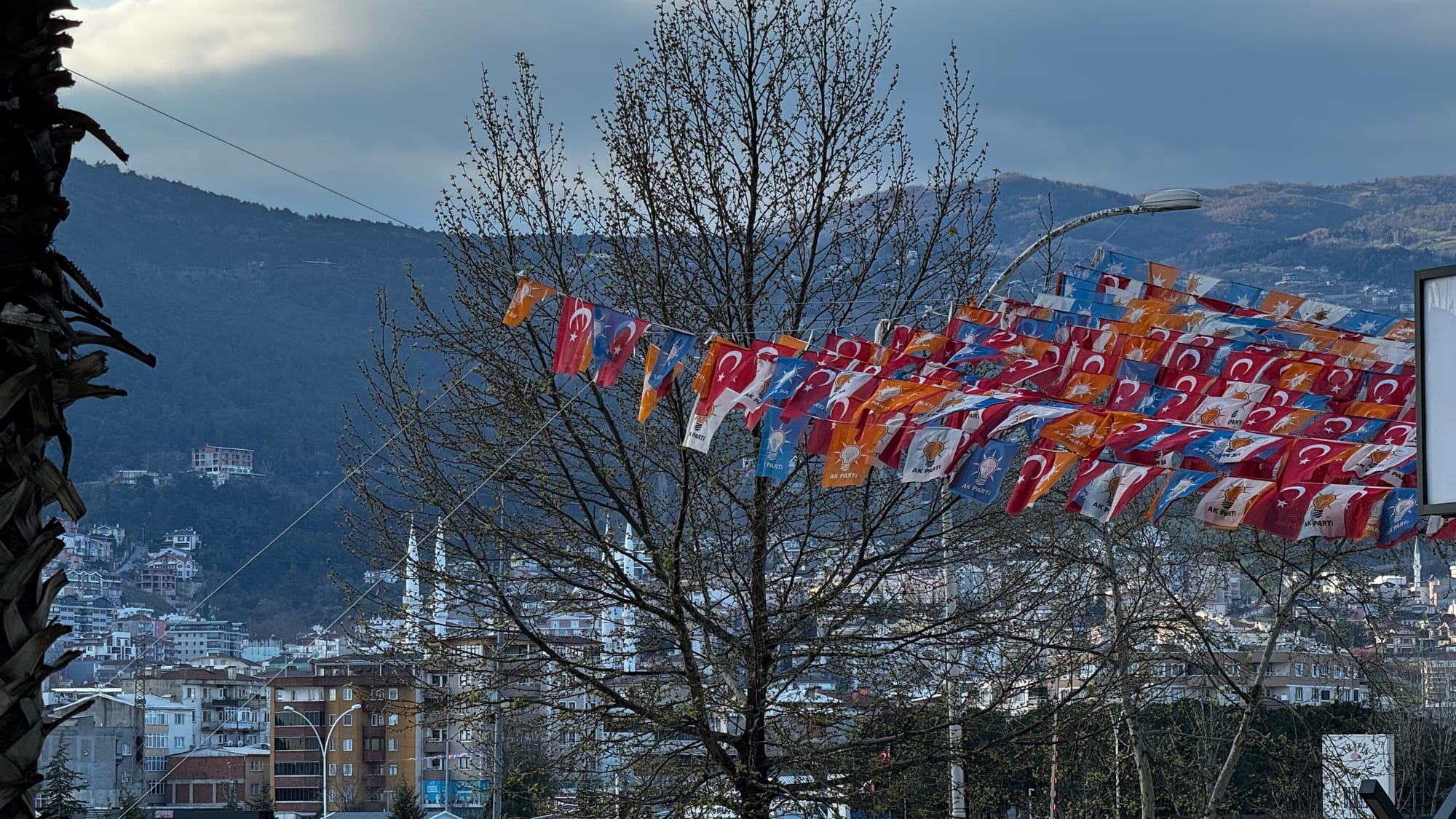
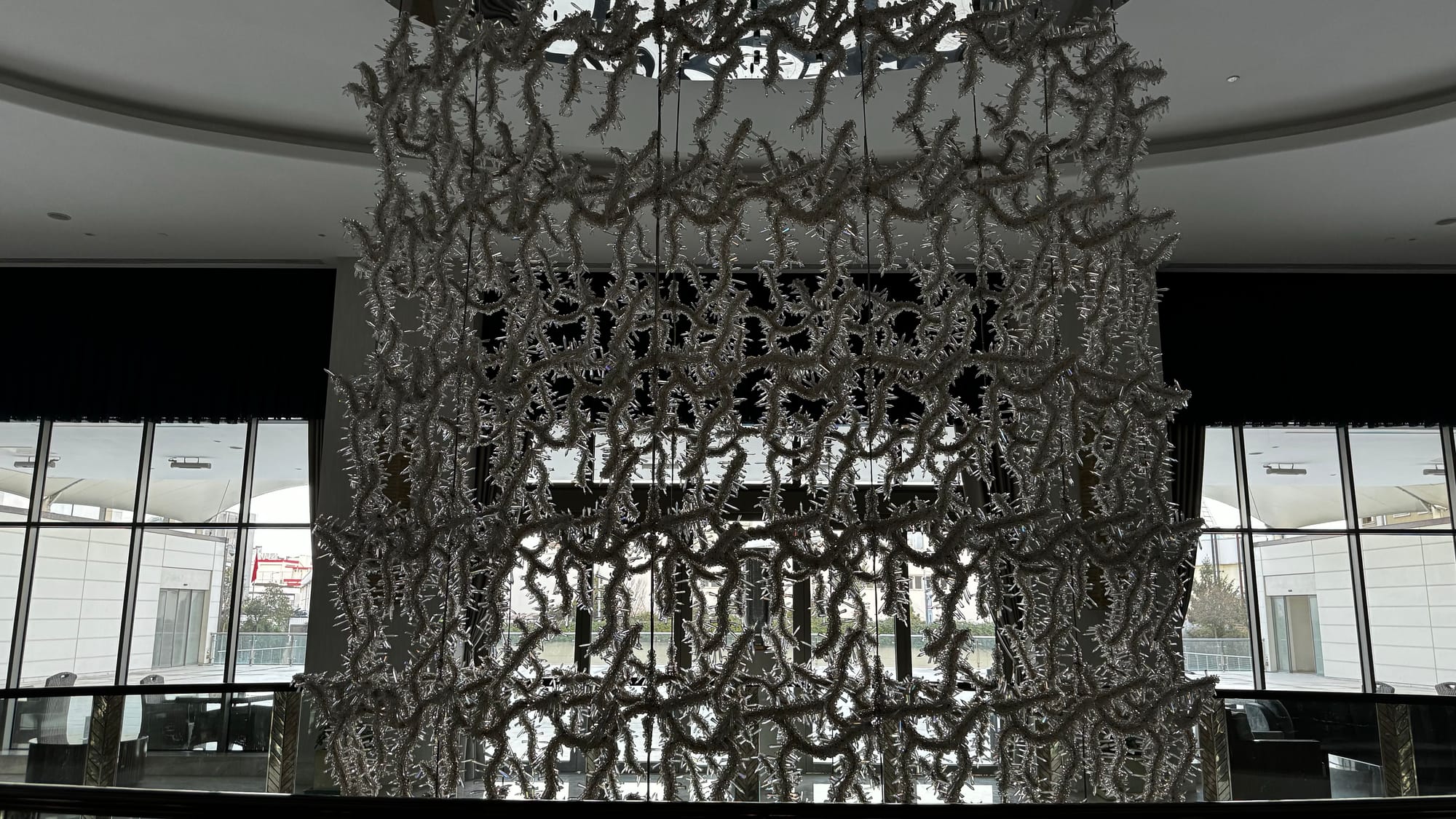
Bursa's glitzy hotel
Bursa was nothing like we expected. We chose it because it had a lot of hotels and was just the right distance to stop for the night. It turns out to be a HUGE city of over 3 million people! Türkiye is big and has a large population. The hotel was very blingy but comfortable, and we all collapsed in bed, ready for sleep after our late departure from Ayvalik (the ferry left at 17:00).
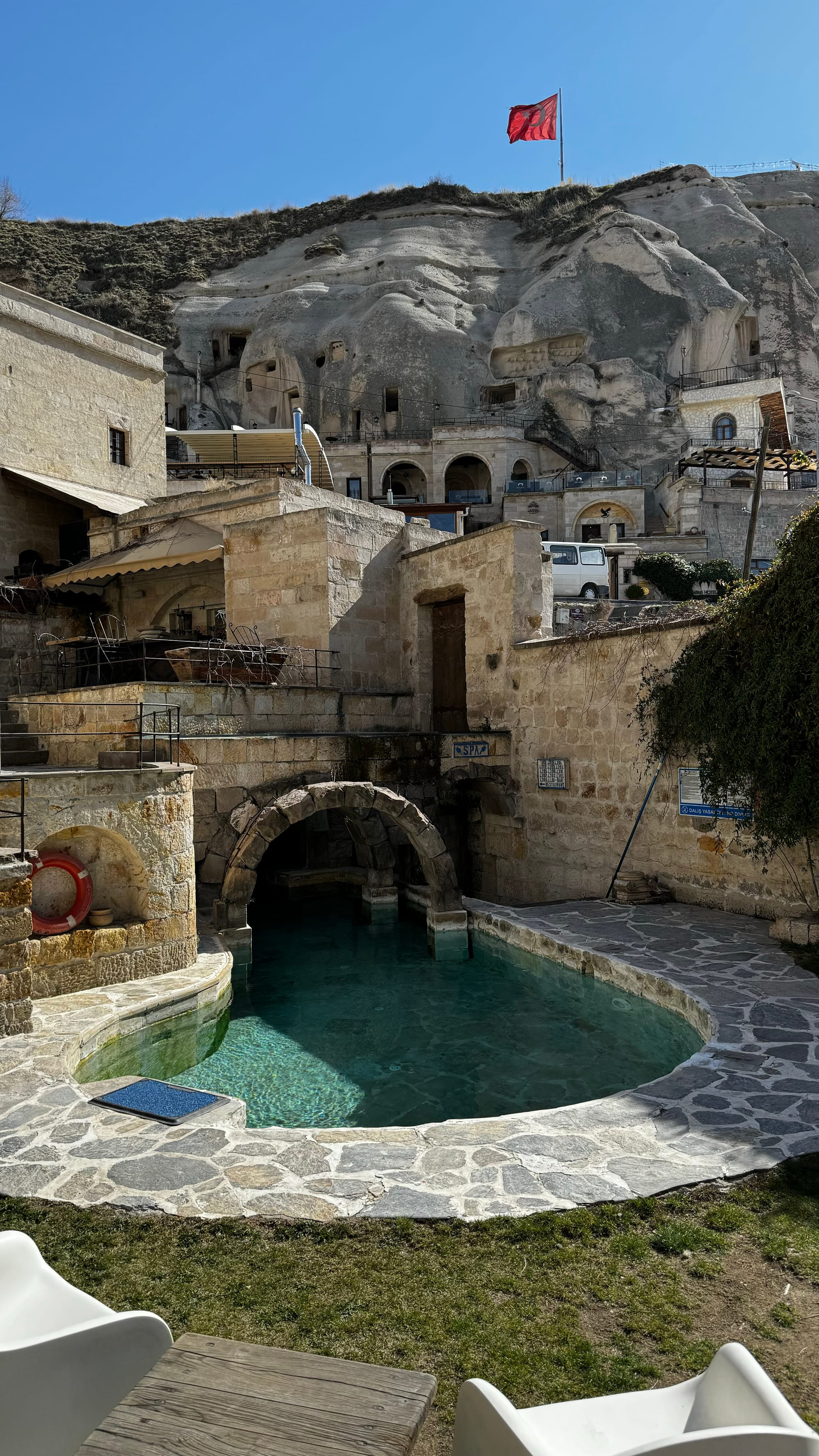
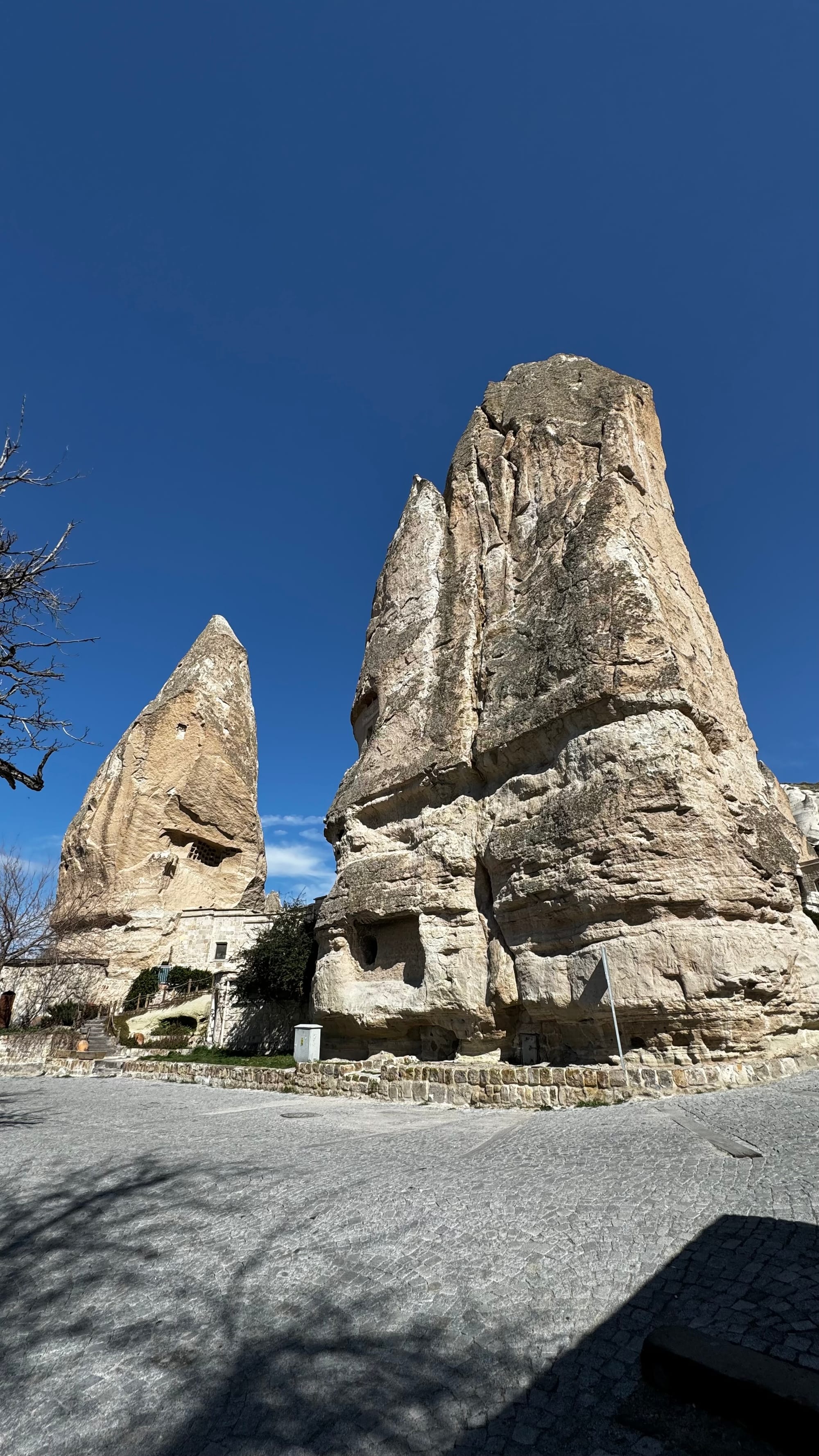
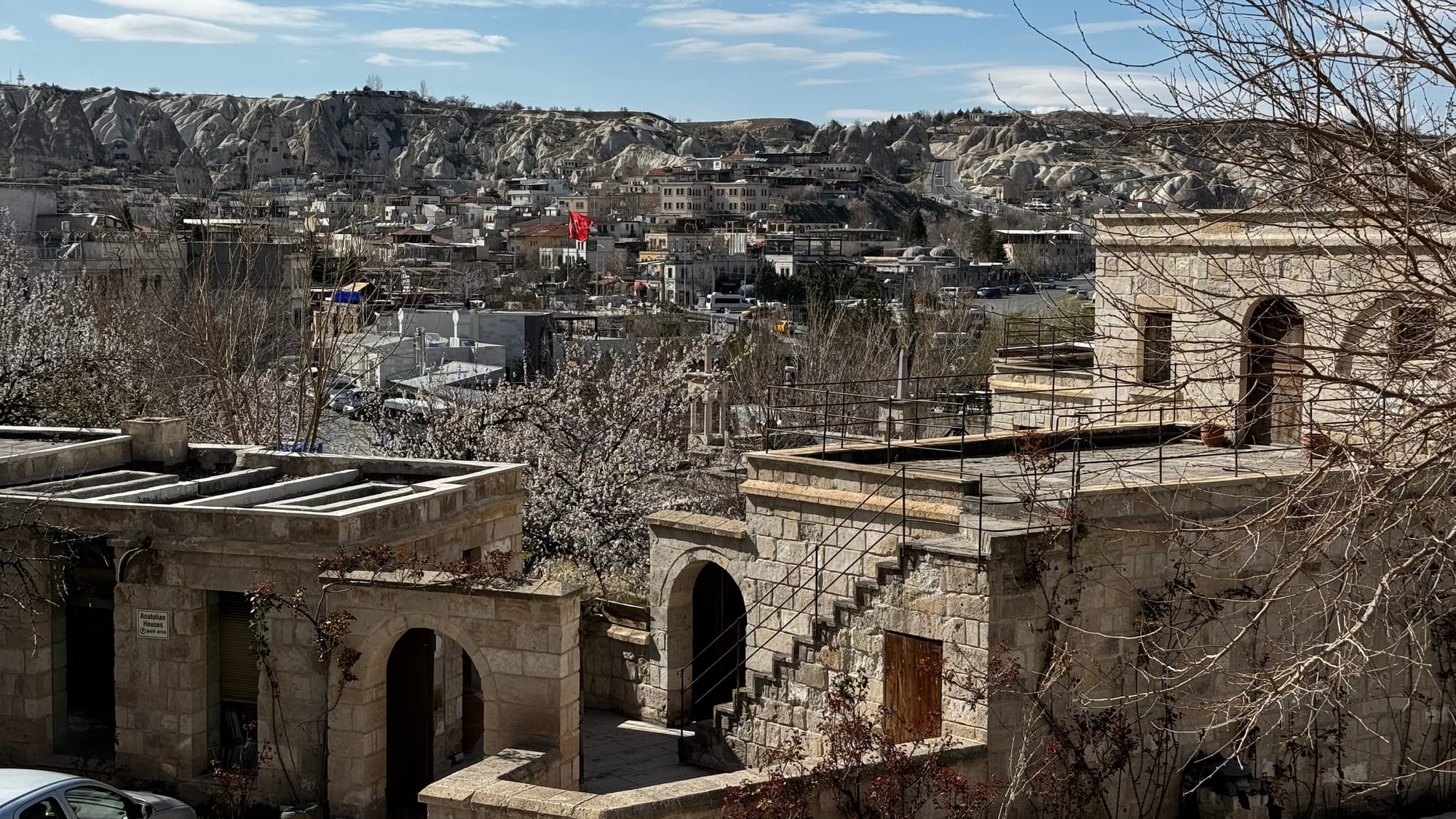
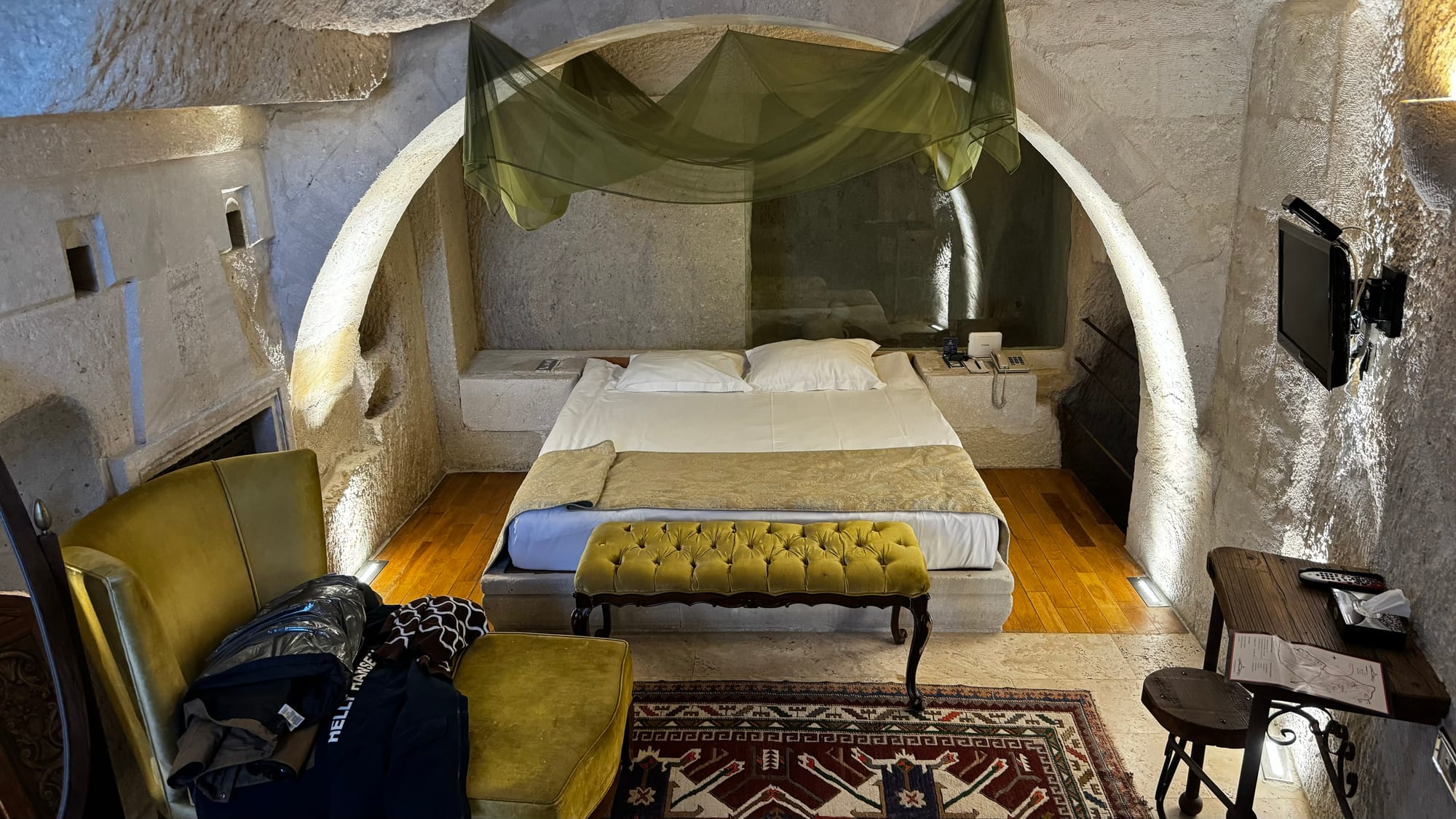
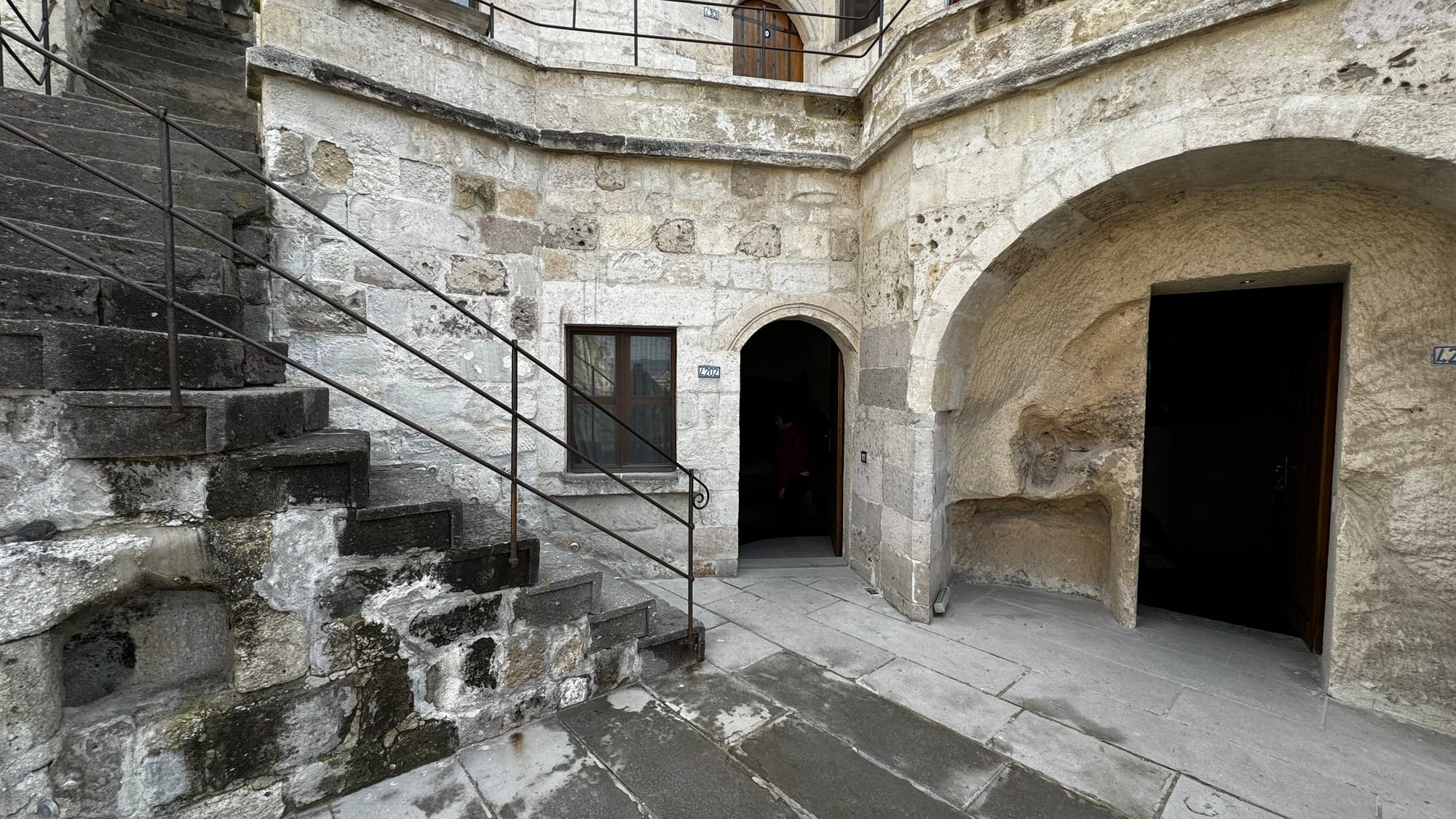
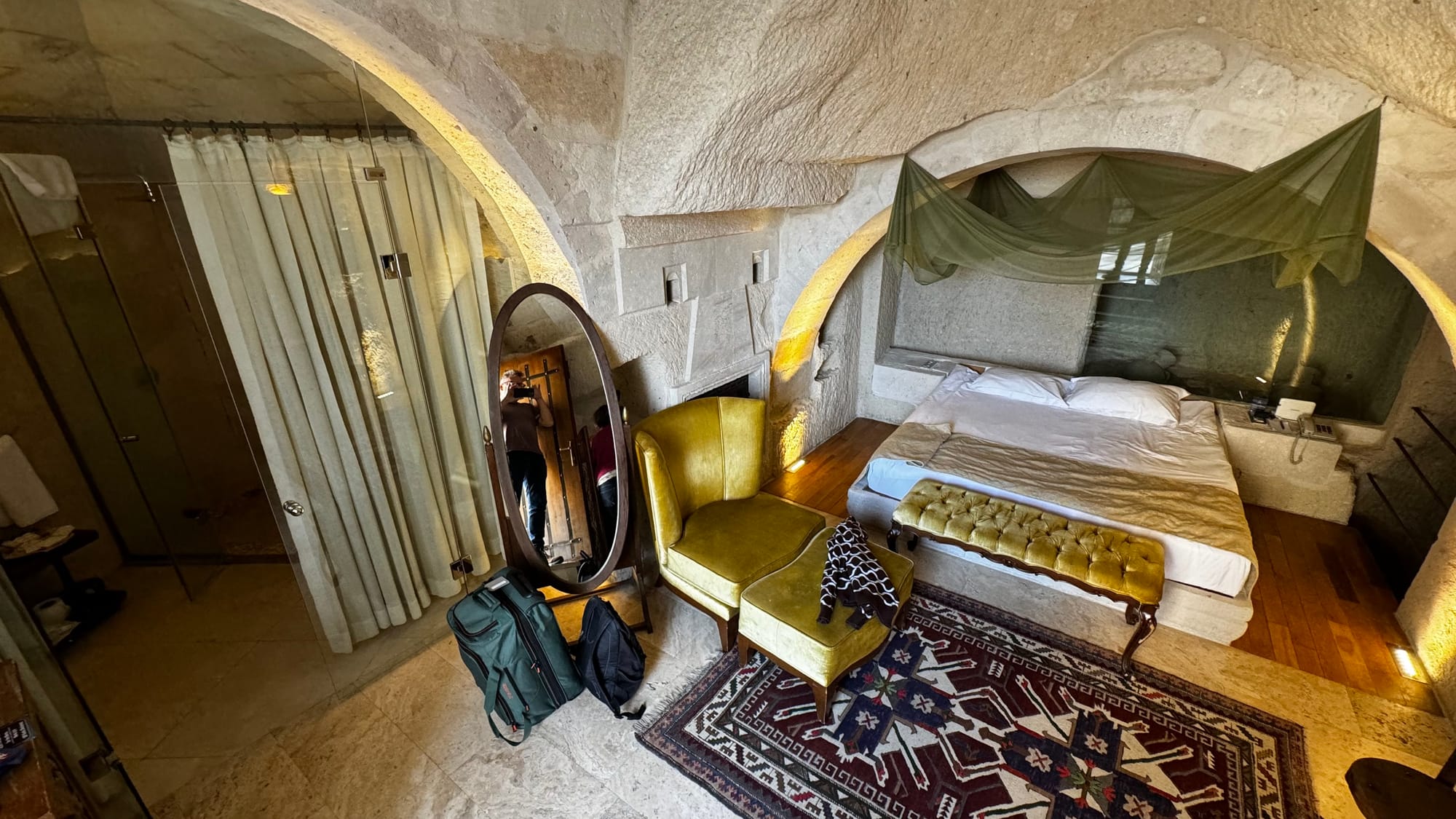
Scenes around the hotel, including our cave room.
On Monday, we drove straight to Göreme in Cappadocia. It took around 7.5 hours, and with three drivers (me, Sarah and Peter – Karina still hasn't replaced her licence), it was very easy. Our first impressions as we drove in were that we'd arrived somewhere special. The hotel was fairytale-like, split over multiple levels with a swimming pool and several of the rooms set back into the caves. Unfortunately it wasn't as clean as we'd like and was VERY warm inside the rooms – a shock after being used to the boat where it's basically outside temperature each evening. That aside, it didn't dampen our enthusiasm for the experience.
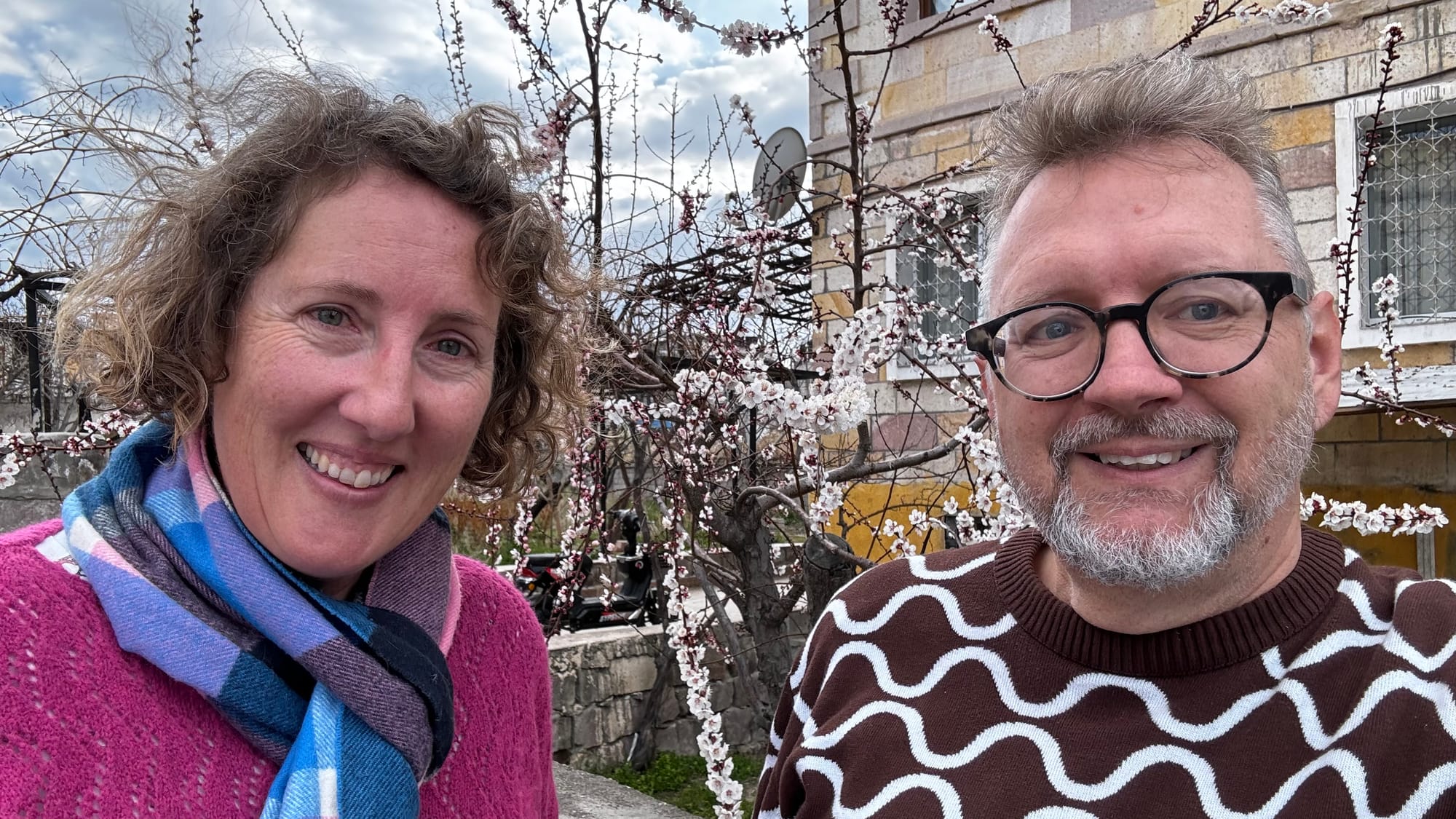
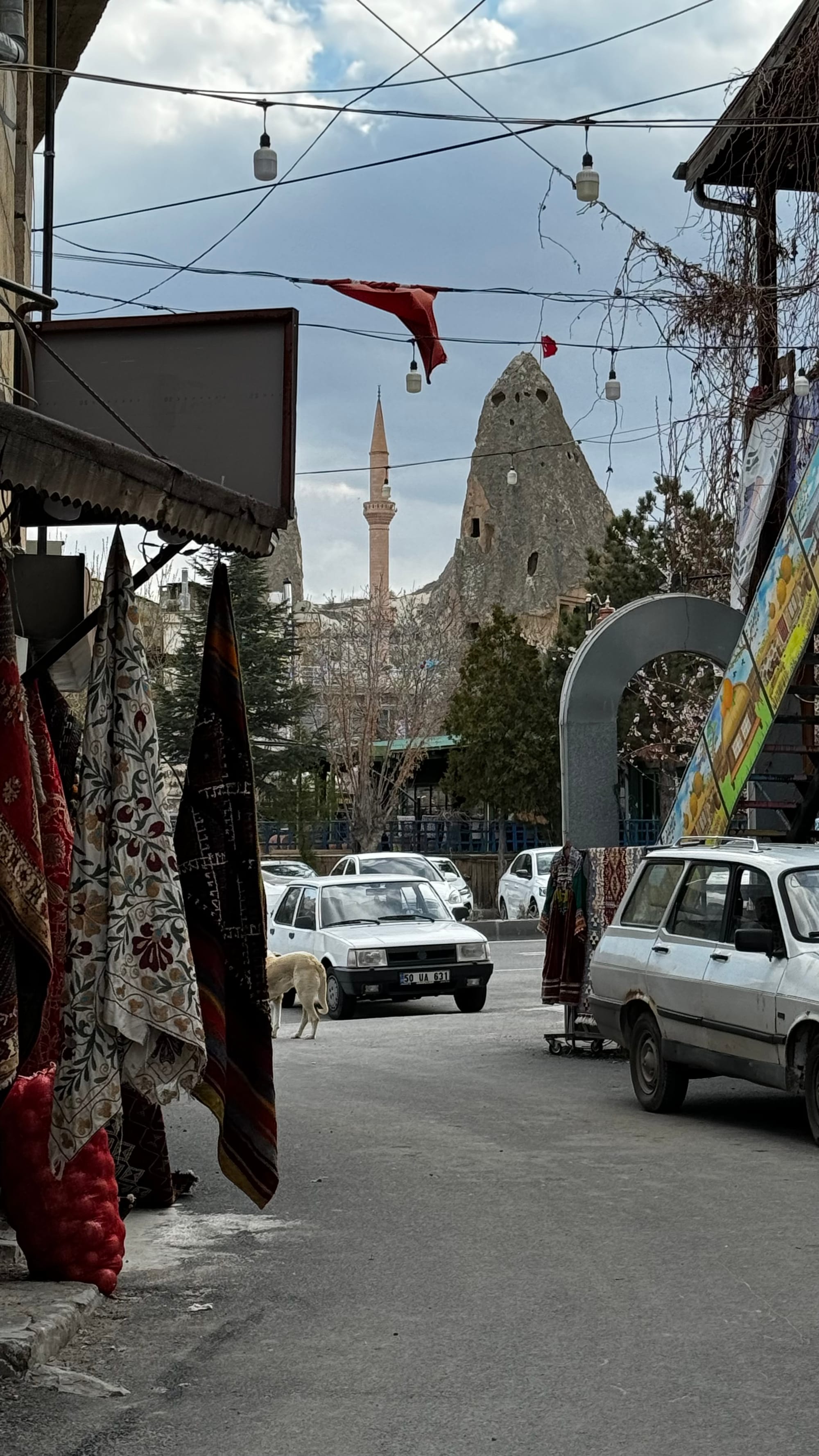
Walking the streets of Göreme. Cherry blossom is out everywhere.
We headed out for food at an amazing local restaurant (The Wooden Spoon), which served authentic lamb cooked in individual pottery containers. We ate inside a cave, sitting on the floor. After dinner, it was time for a drink, so we tried to find a cocktail bar (a challenge in a Muslim country). We did find one place that was open, but the cocktail bar was closed. Sarah asked when they opened, only to be told, "Next month."
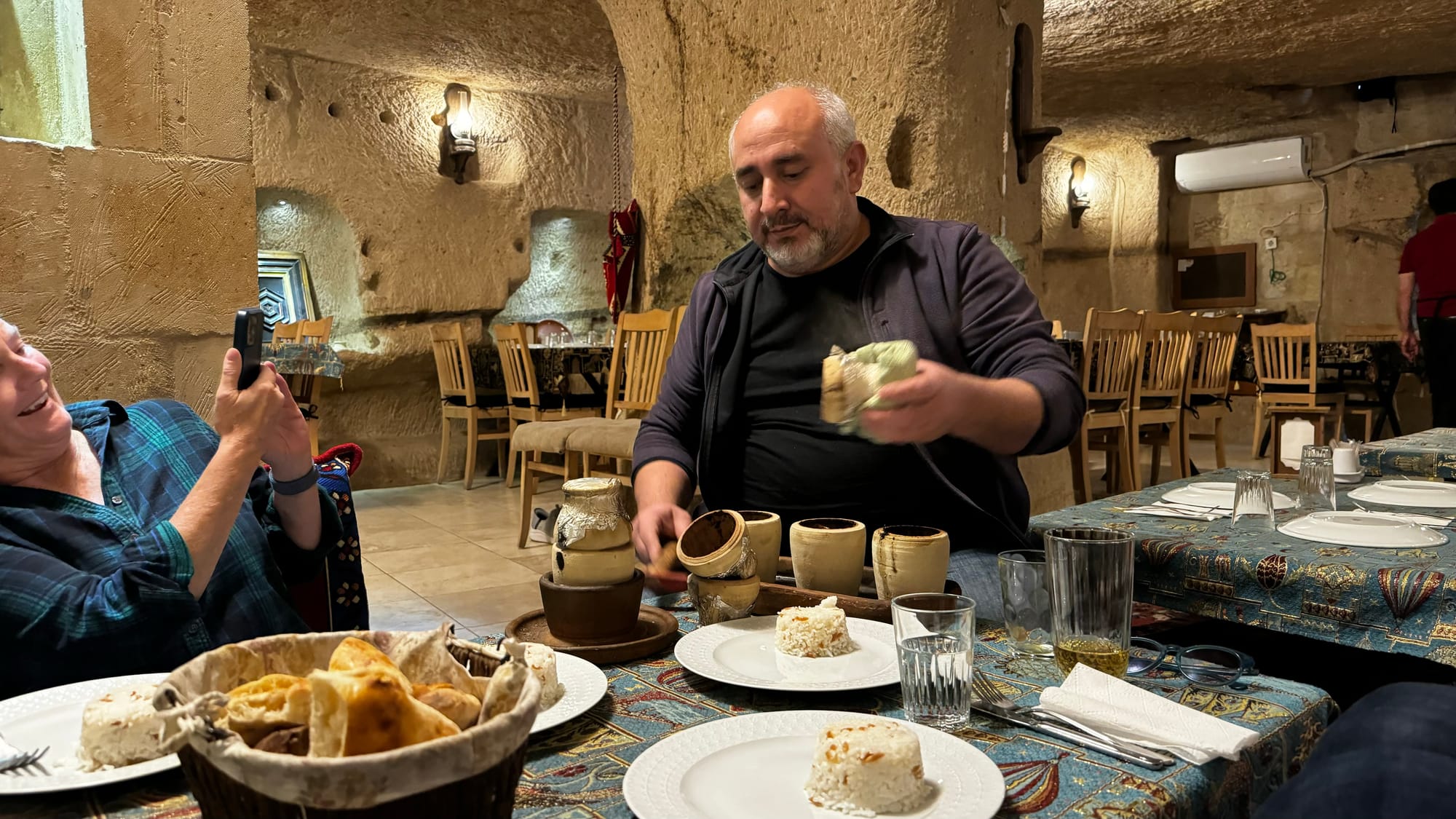
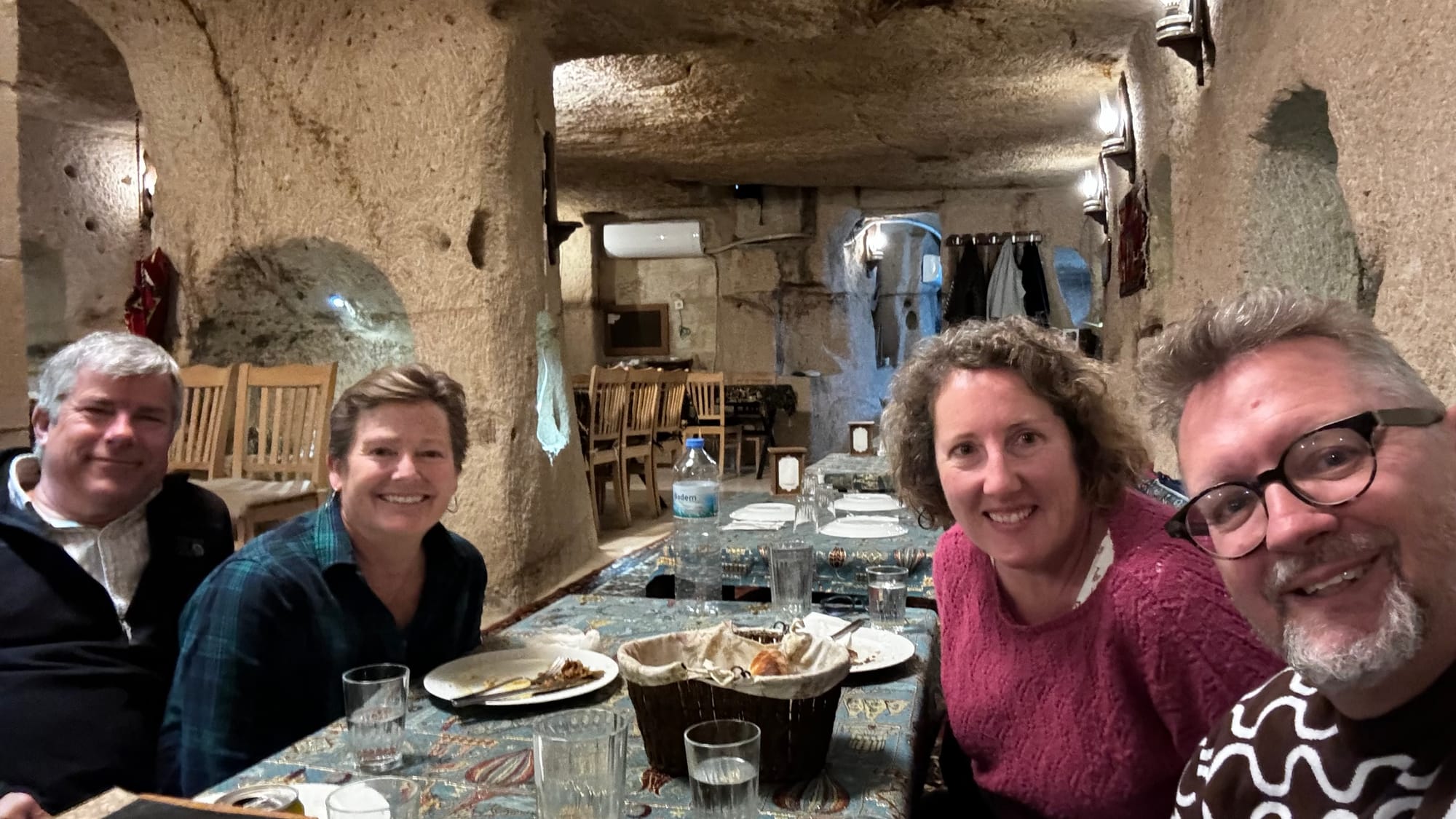
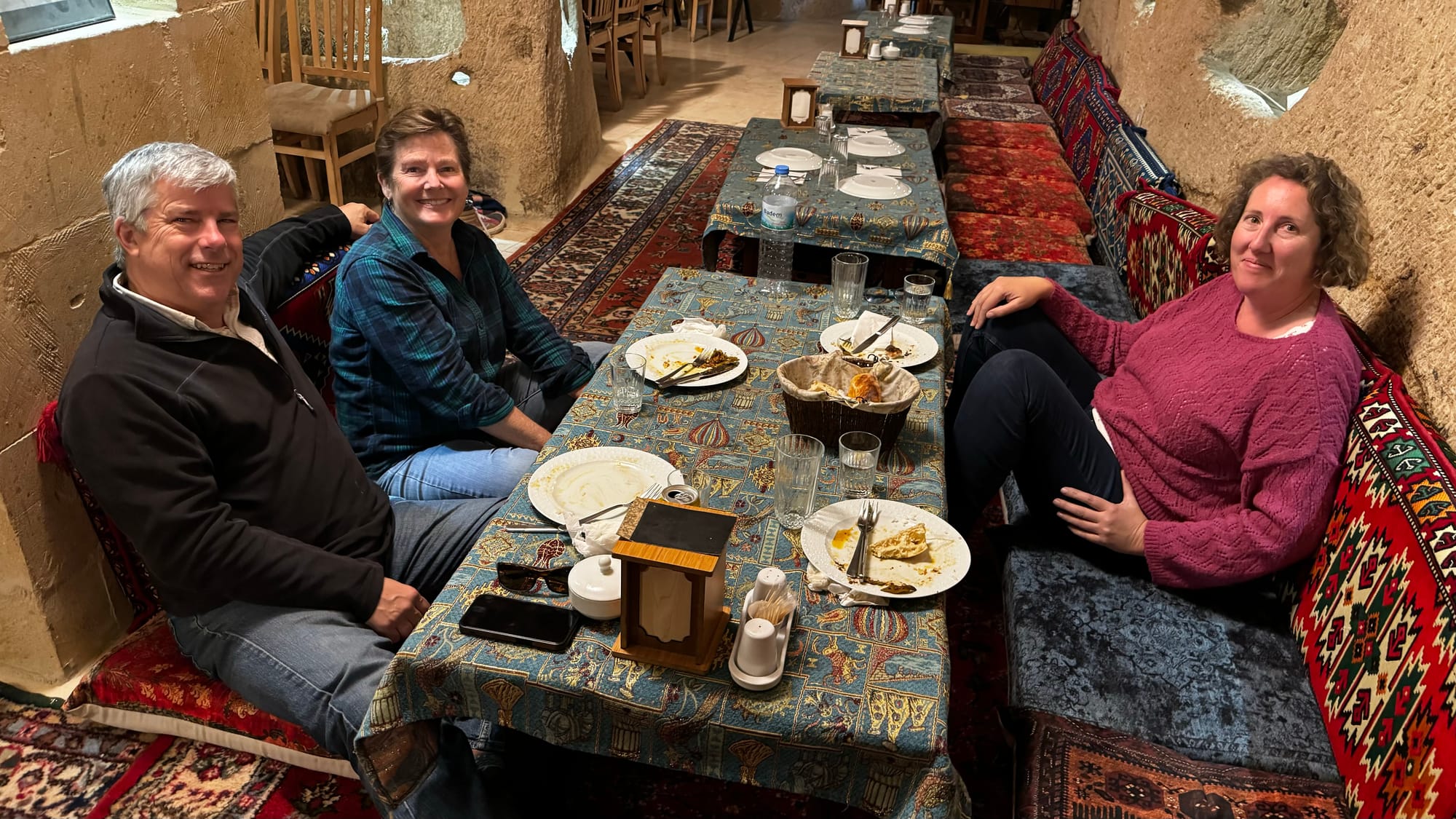
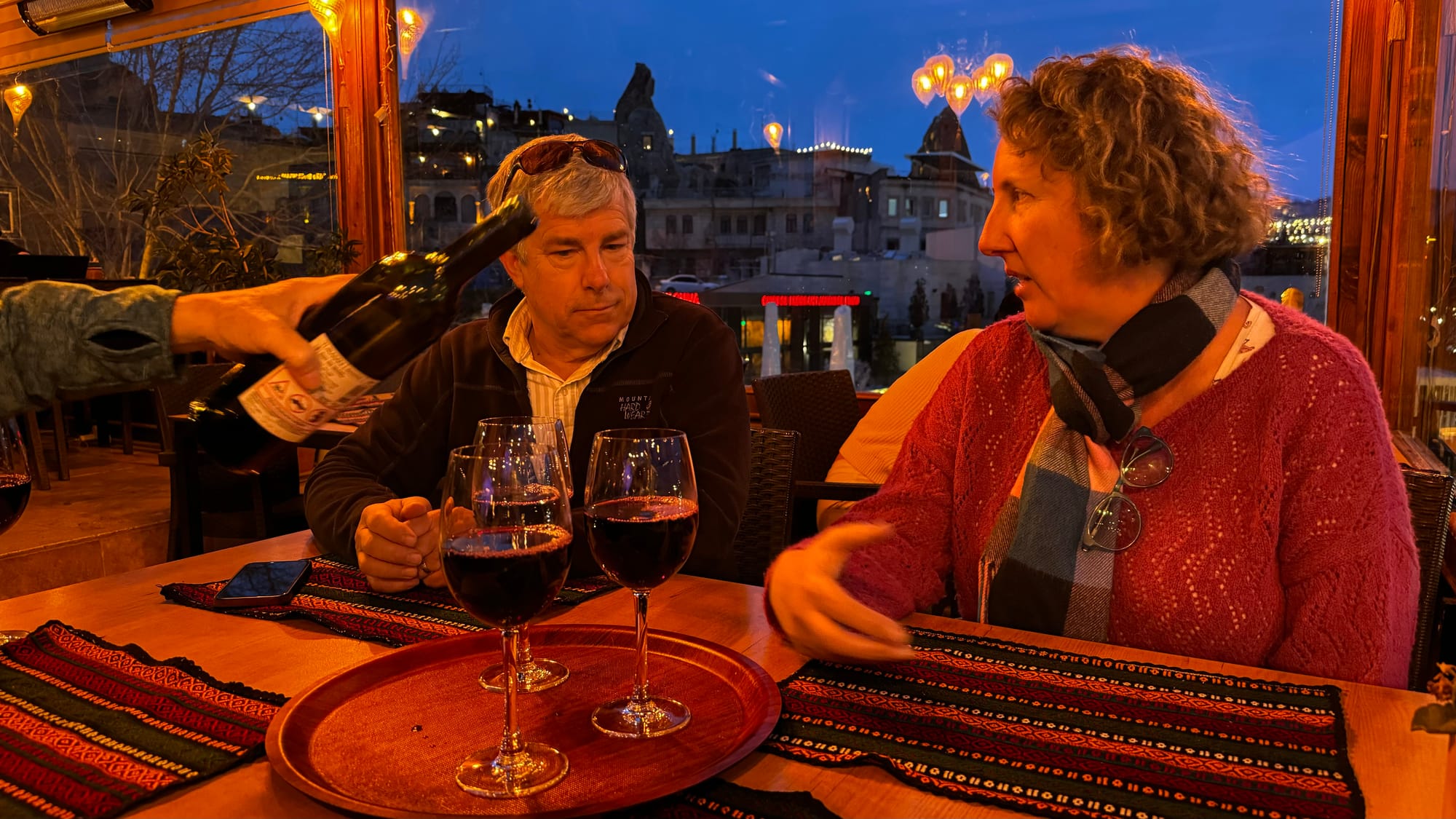
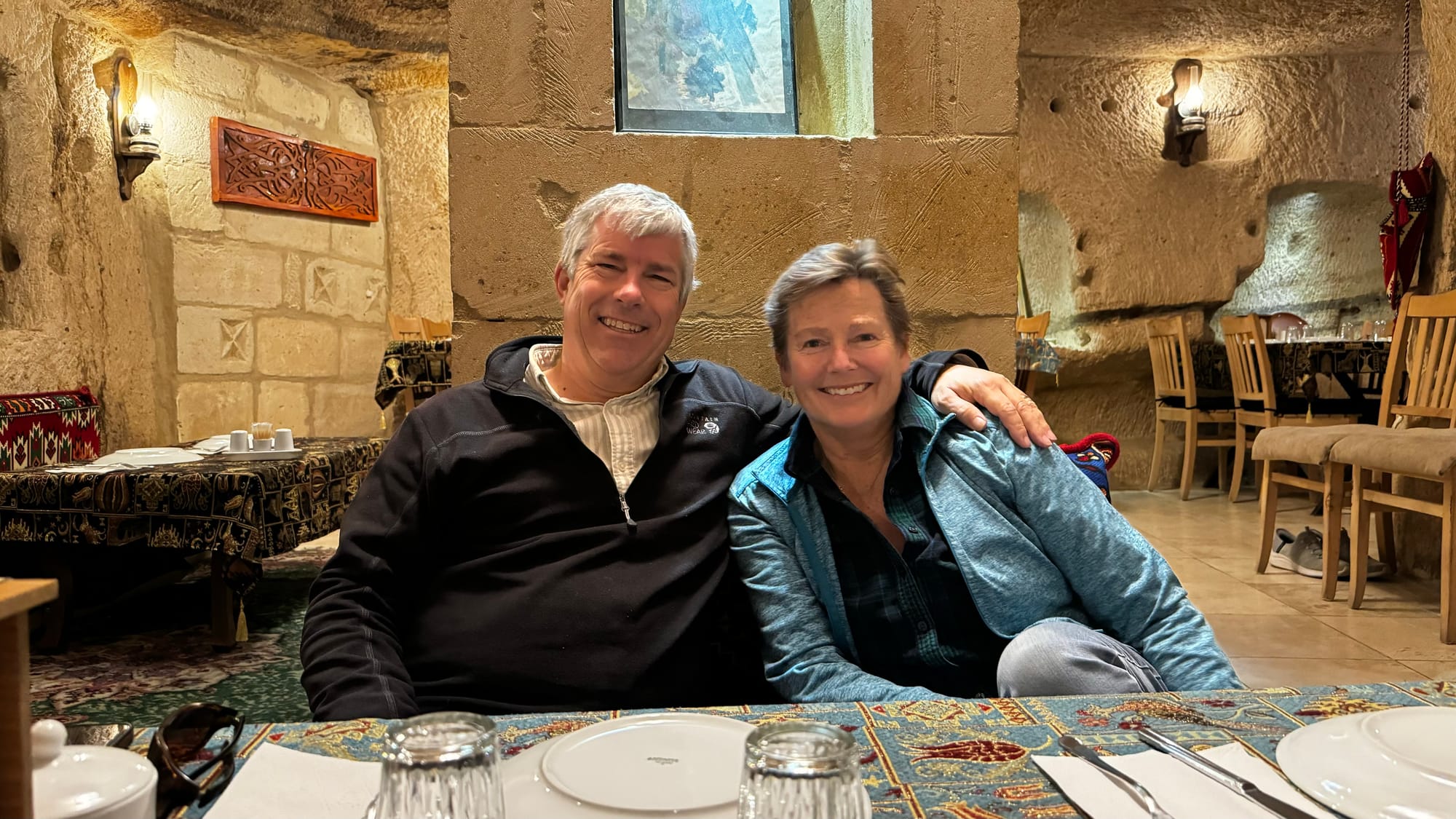
Dinner at the Wooden Spoon and drinks afterwards at Nomad Bar.
The breakfasts were included at all our hotels, and generally very good with a wide array of Turkish food and cheeses. This one was no exception, and happily full, we set off on Tuesday to explore.
Our first destination was Paşabağları Müze ve Örenyeri. It's hard to describe the landscape in Cappadocia, but a frequent feature is the volcanic tuff cones that cluster together – maybe 5-10 meters in diameter at the base and rising 20 to 30 meters up into the air. They are dramatic and fascinating, even more so because rooms have been carved inside.
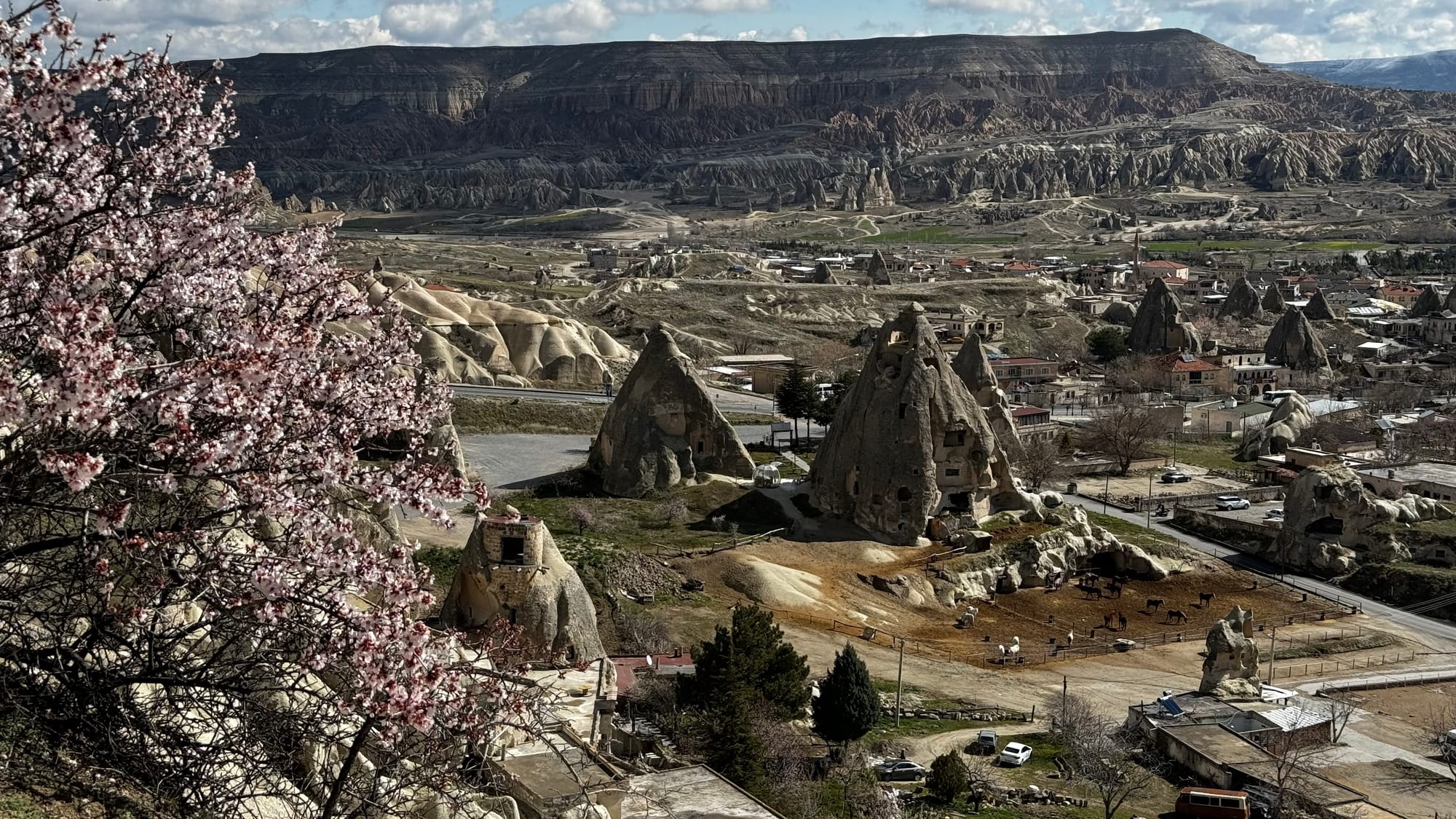
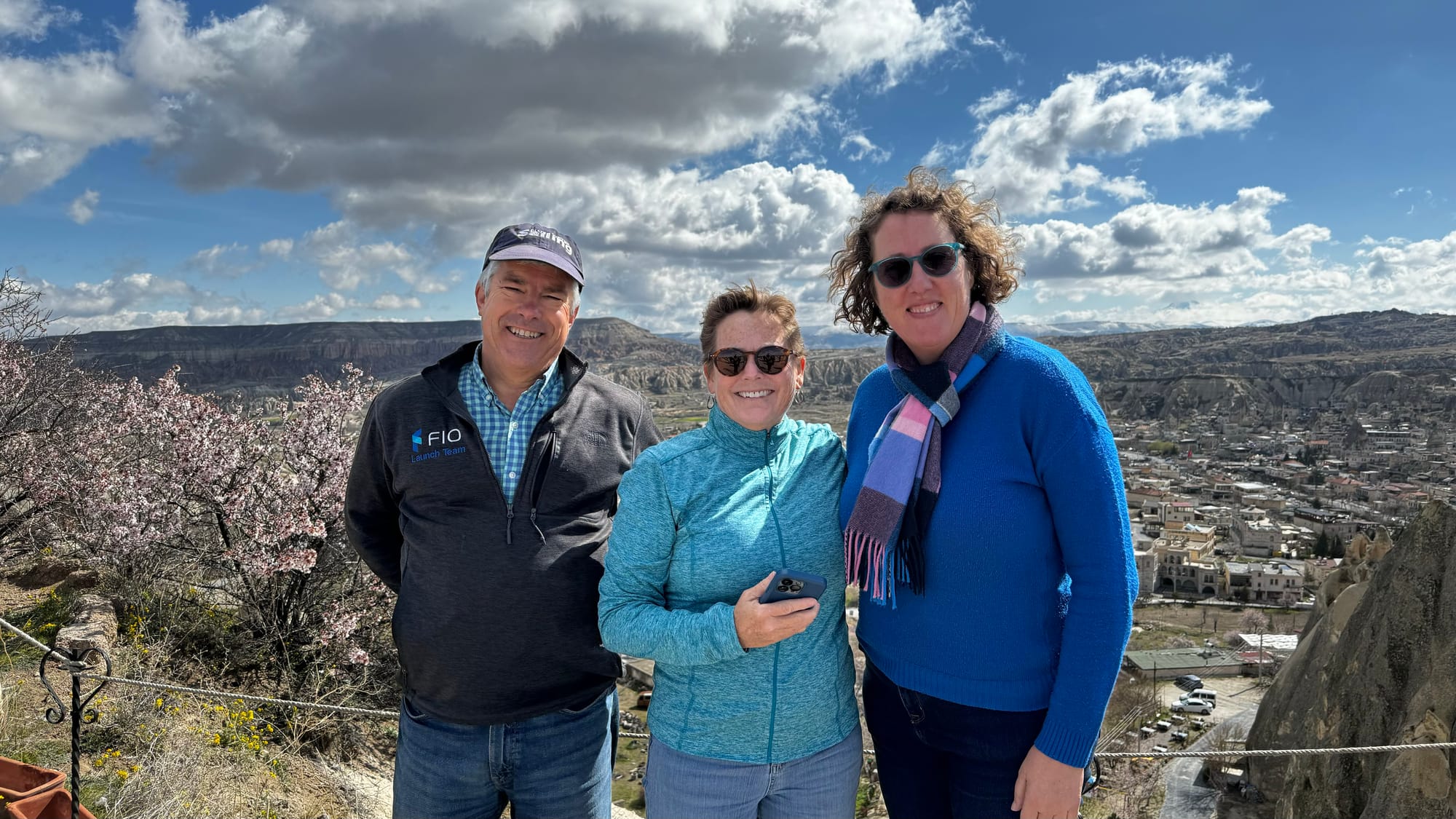
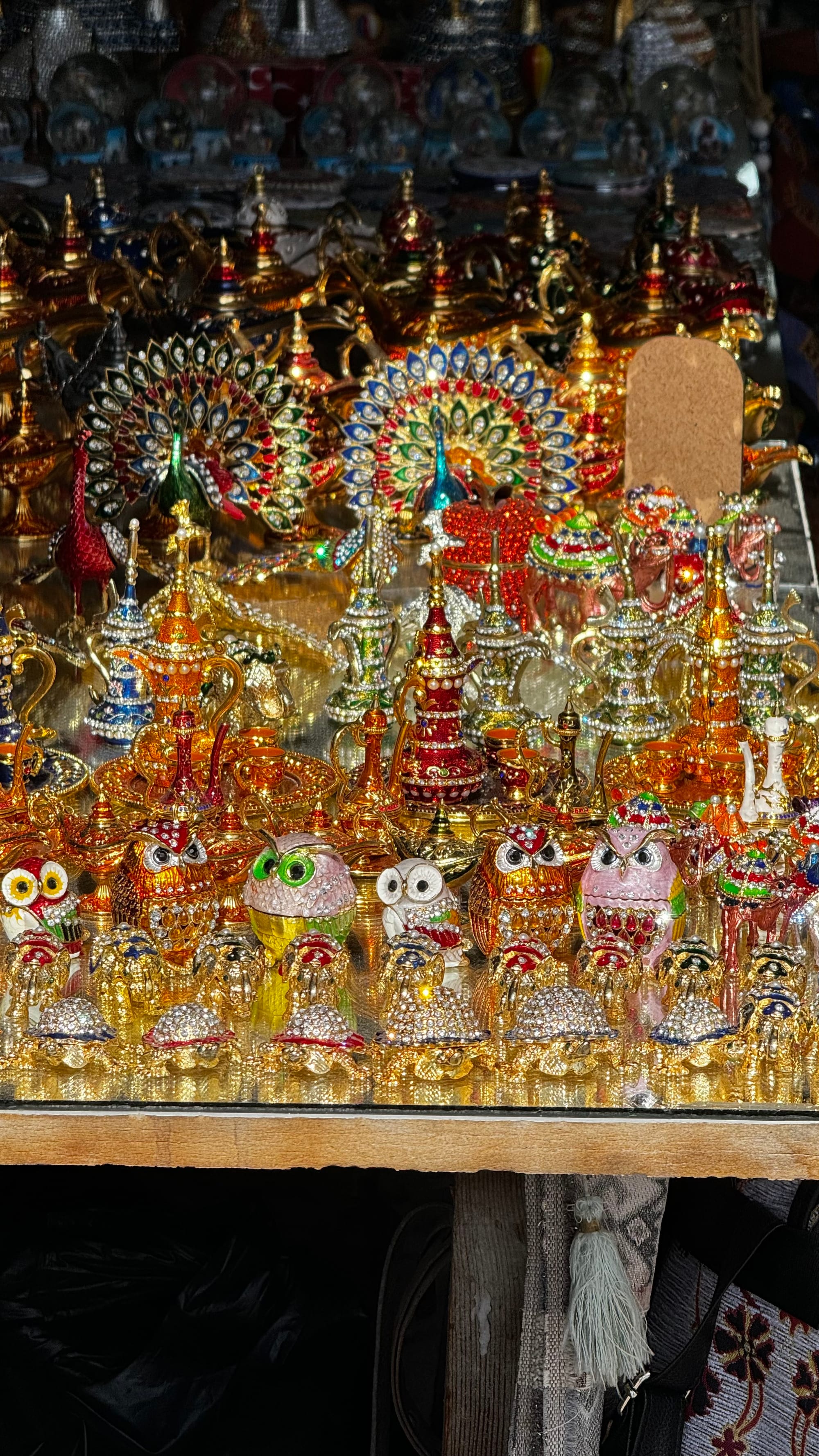
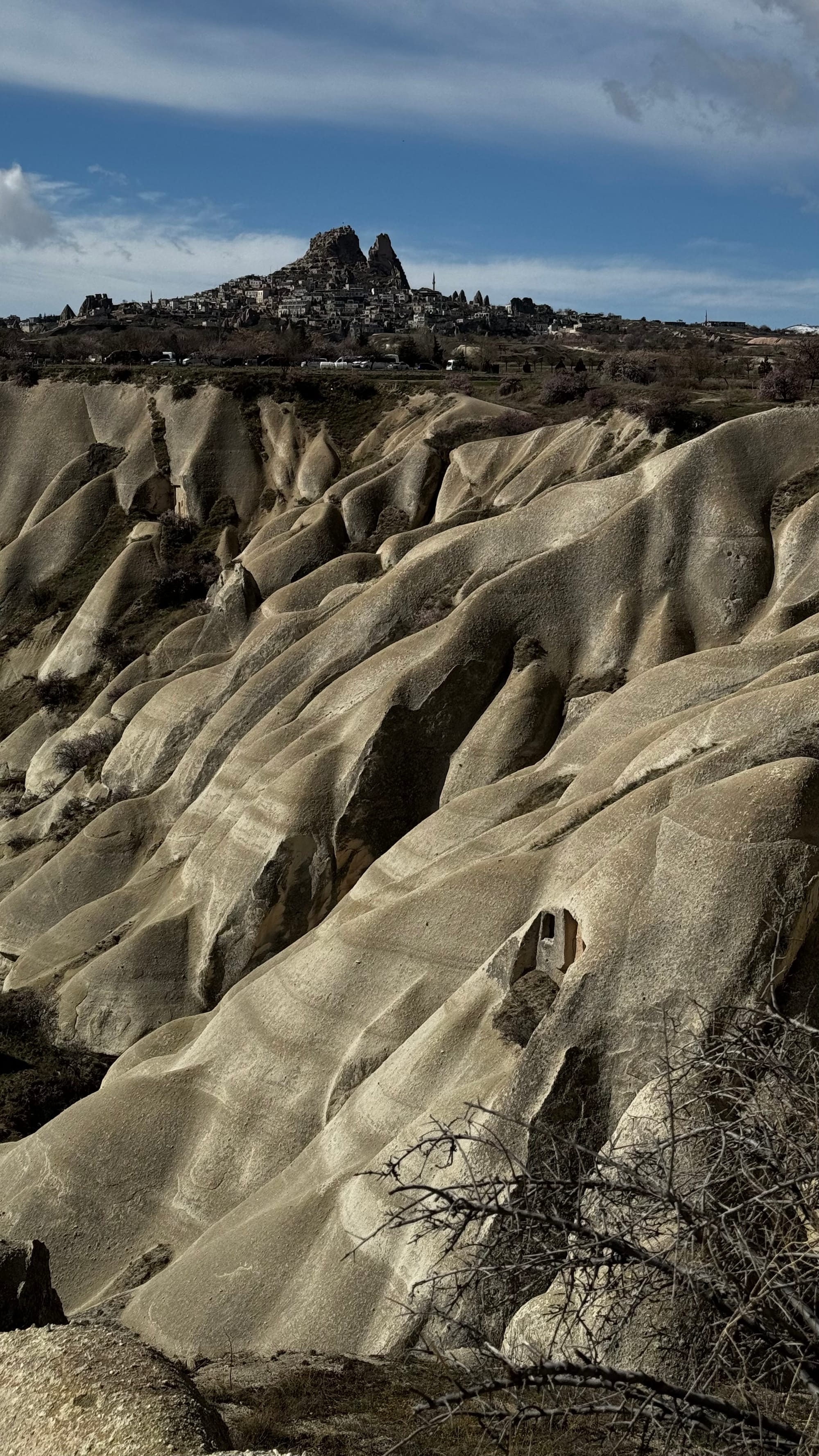
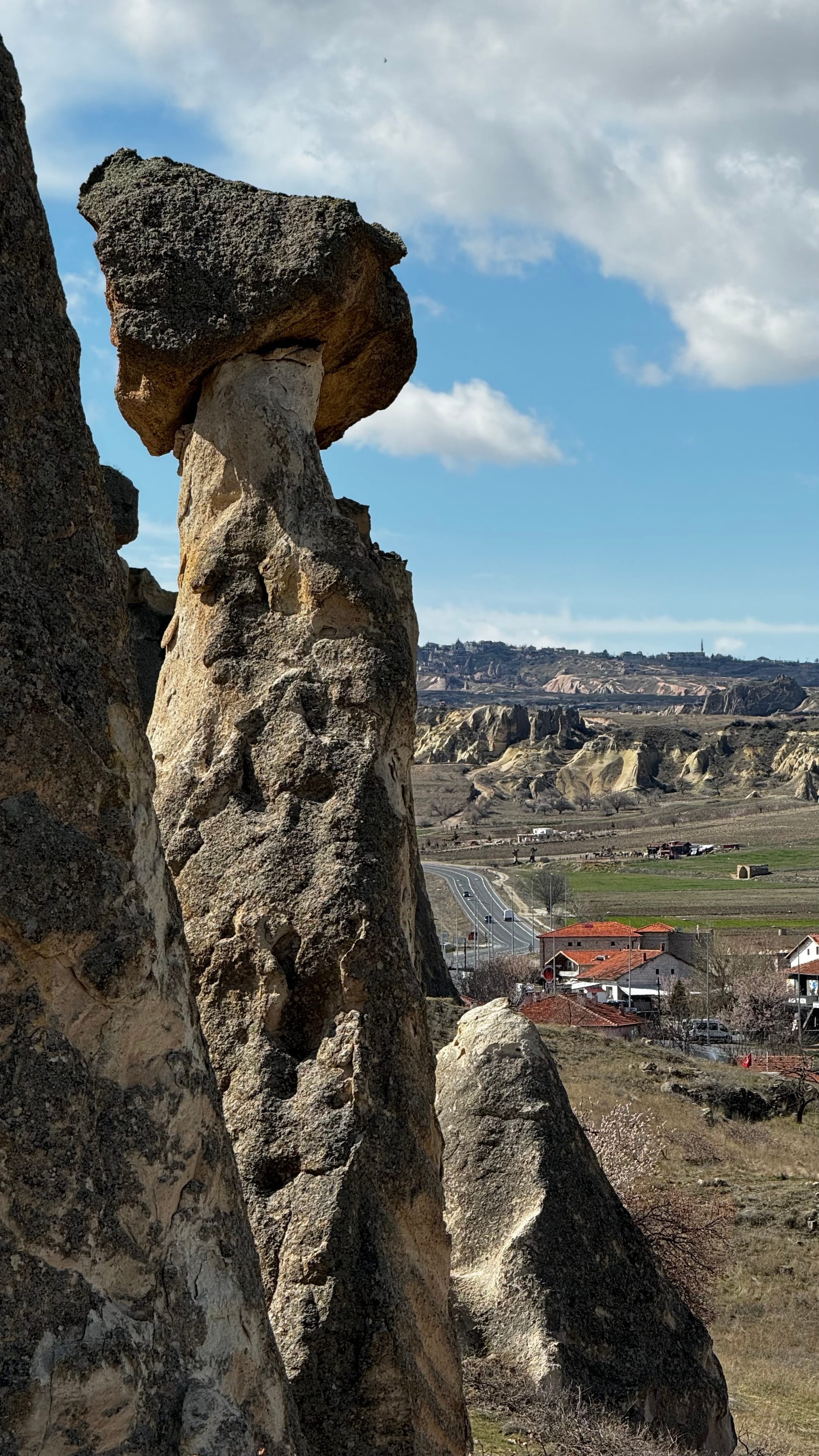
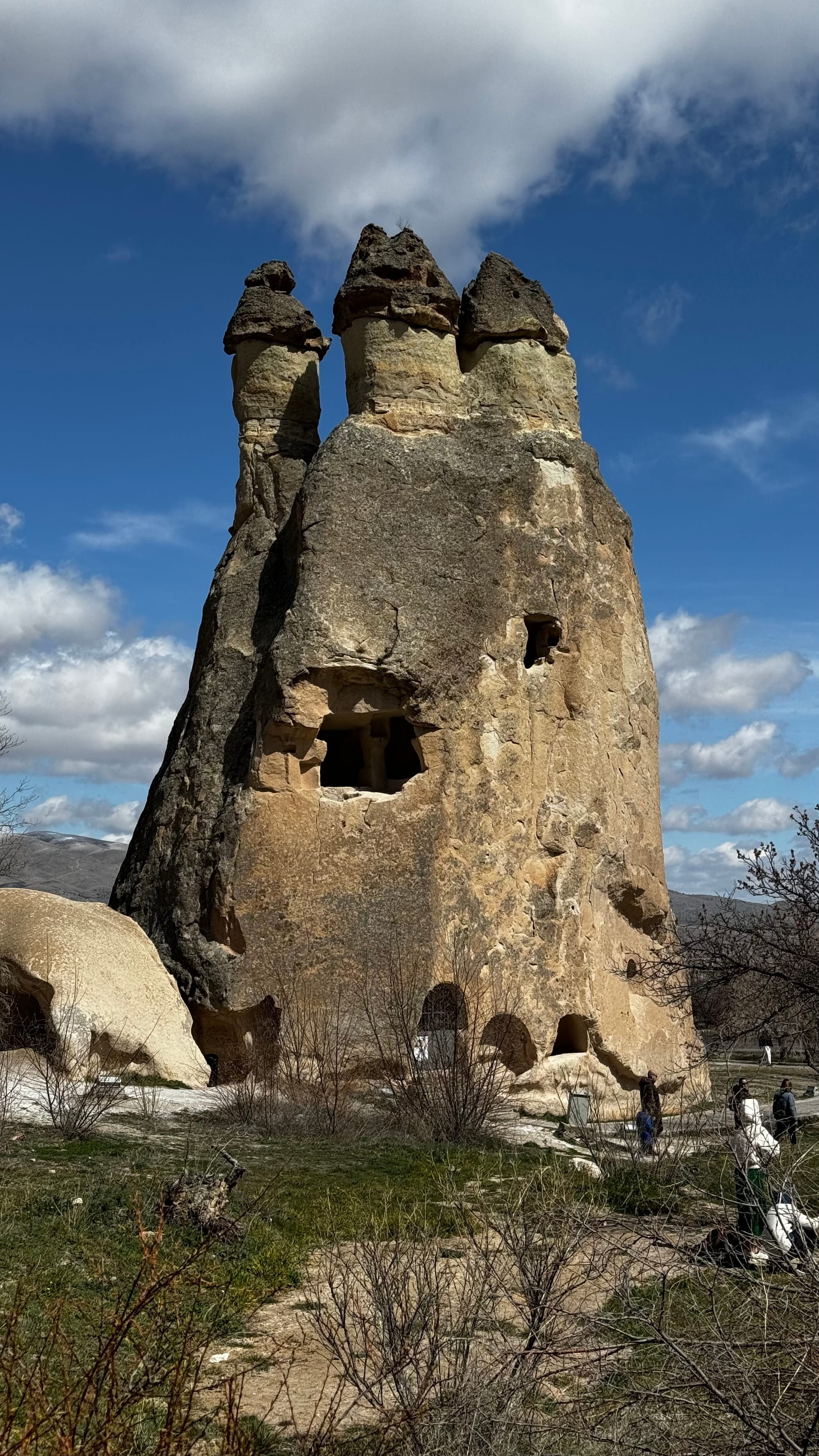
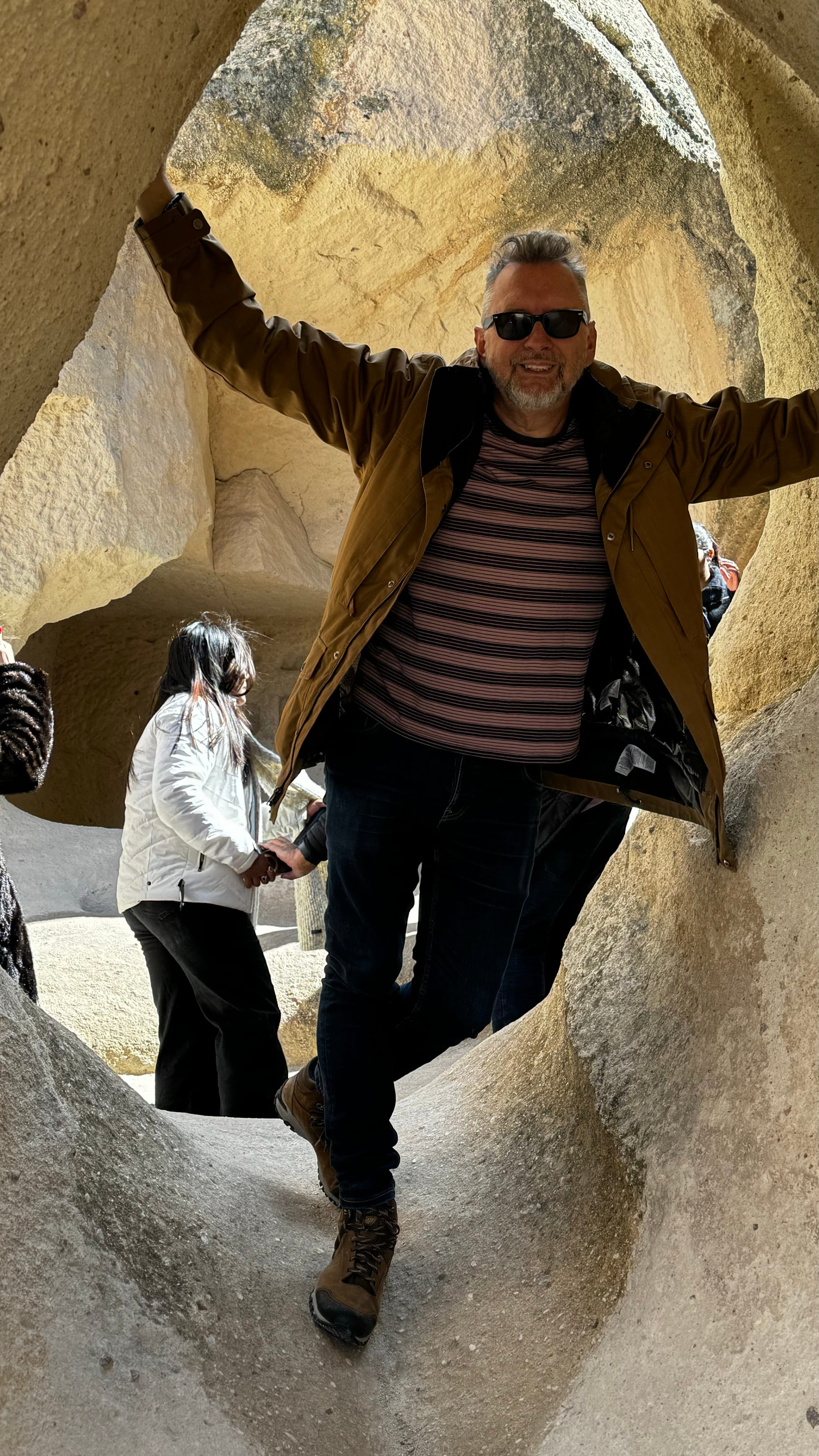
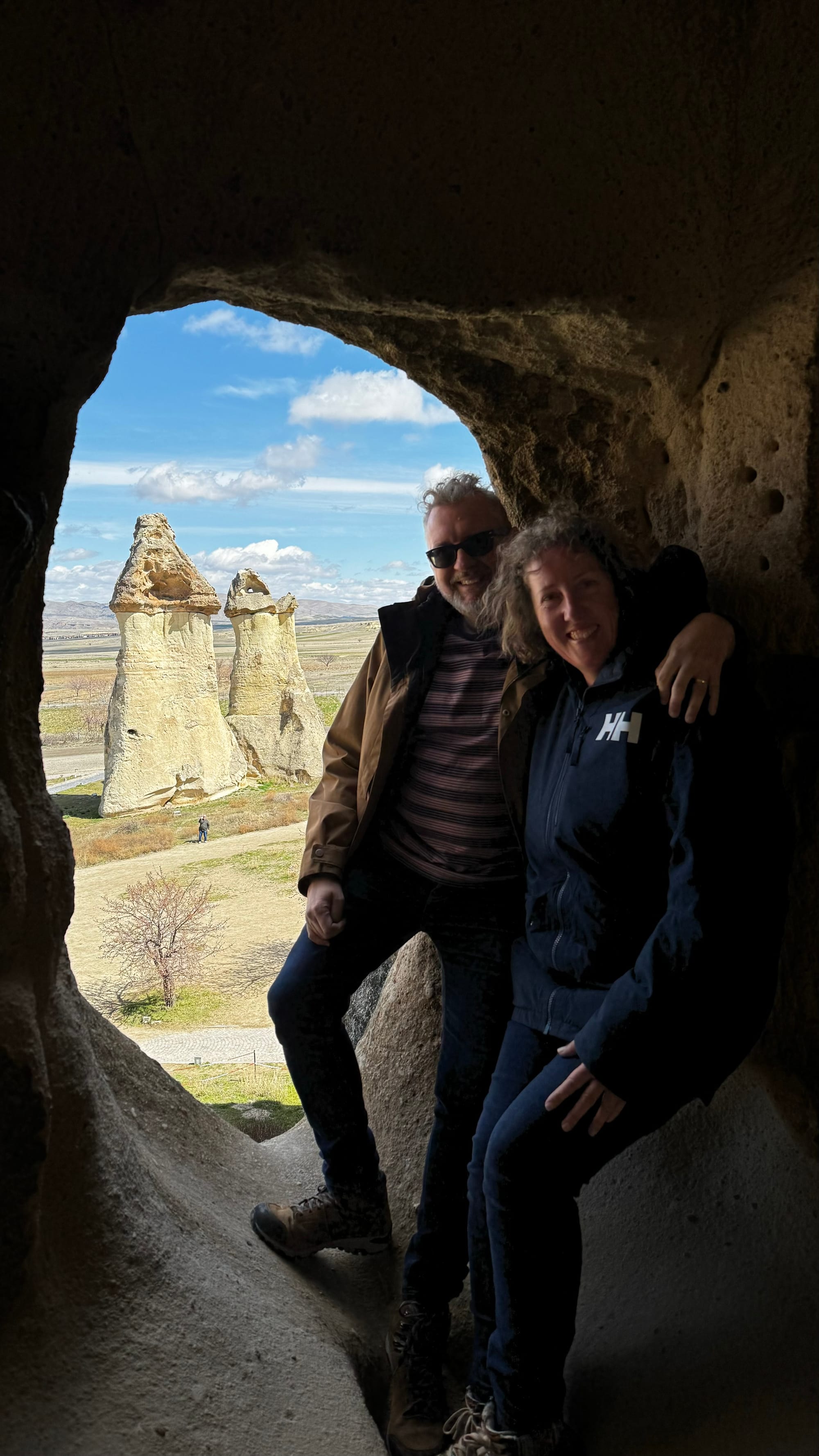
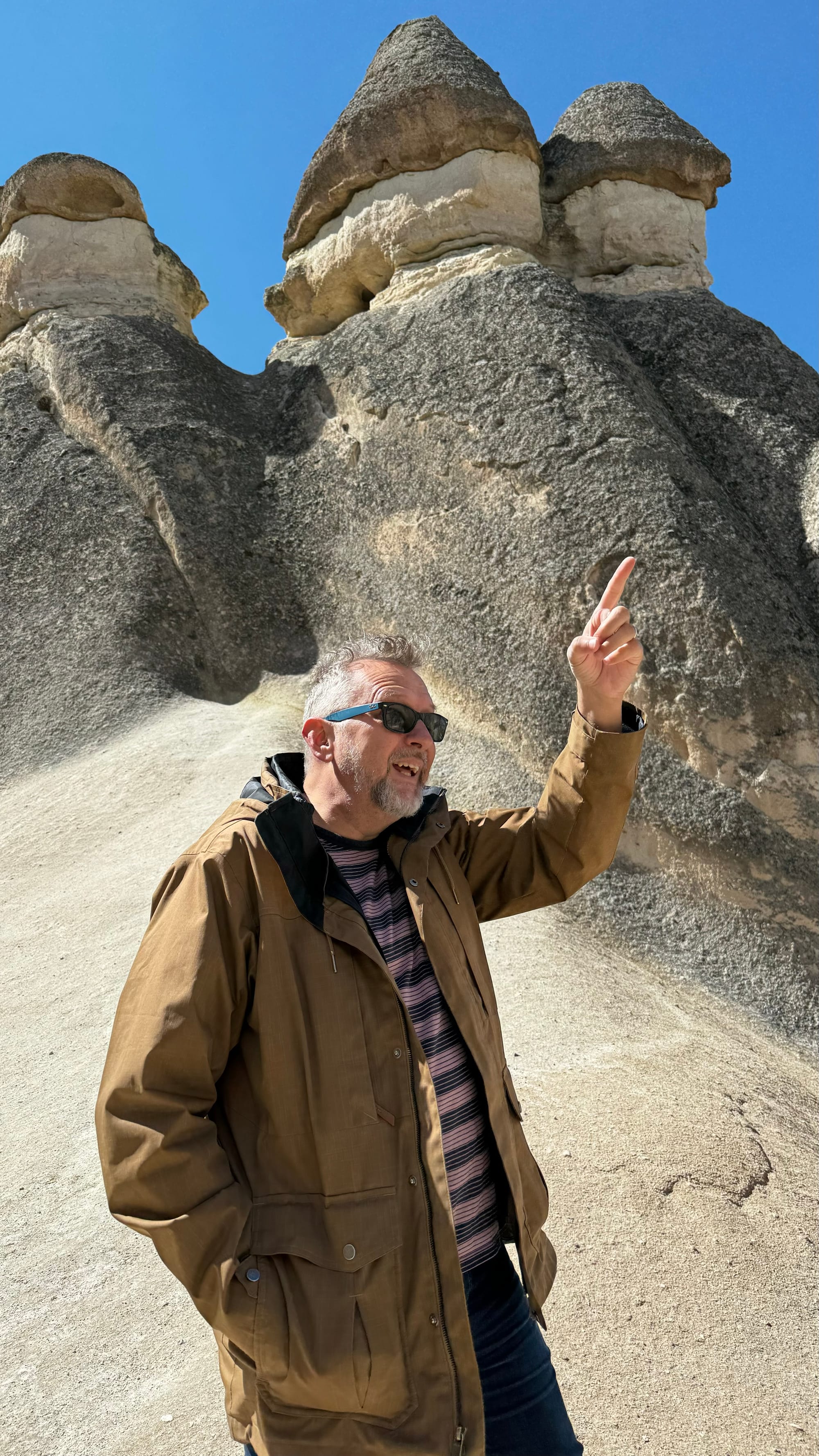
Paşabağları and some scenes around Göreme.
Paşabağları Müze ve Örenyeri was inhabited by a monastic community, including Saint Simeon, who carved out dwellings over multiple levels on the inside of the tuff. They built hidden stairs to reach higher levels where they would retreat from the pilgrims. Saint Simeon started inside a tuff about 5 meters up, but when people wouldn't leave him alone, he carved another 20 meters high, where he spent the rest of his days.
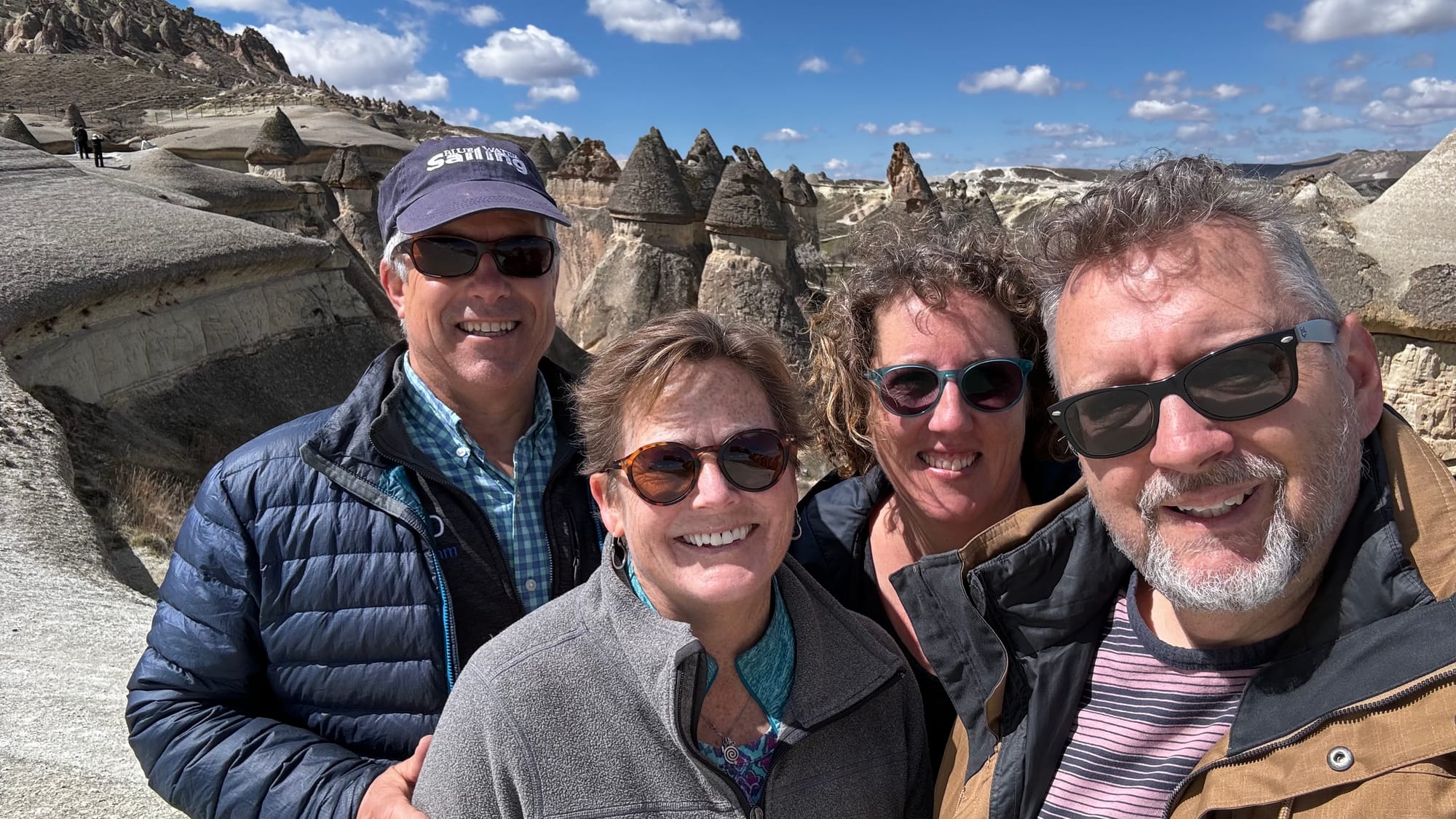
From there, it was a visit to the Zelve Open Air Museum. This is an old village carved into the sides of three canyons inhabited until the mid-1950s when everyone was relocated due to the danger of collapse. It was a stunning walk up and around the steep-sided canyons, exploring the old rooms, including a winery, bakery, many churches and a mosque.
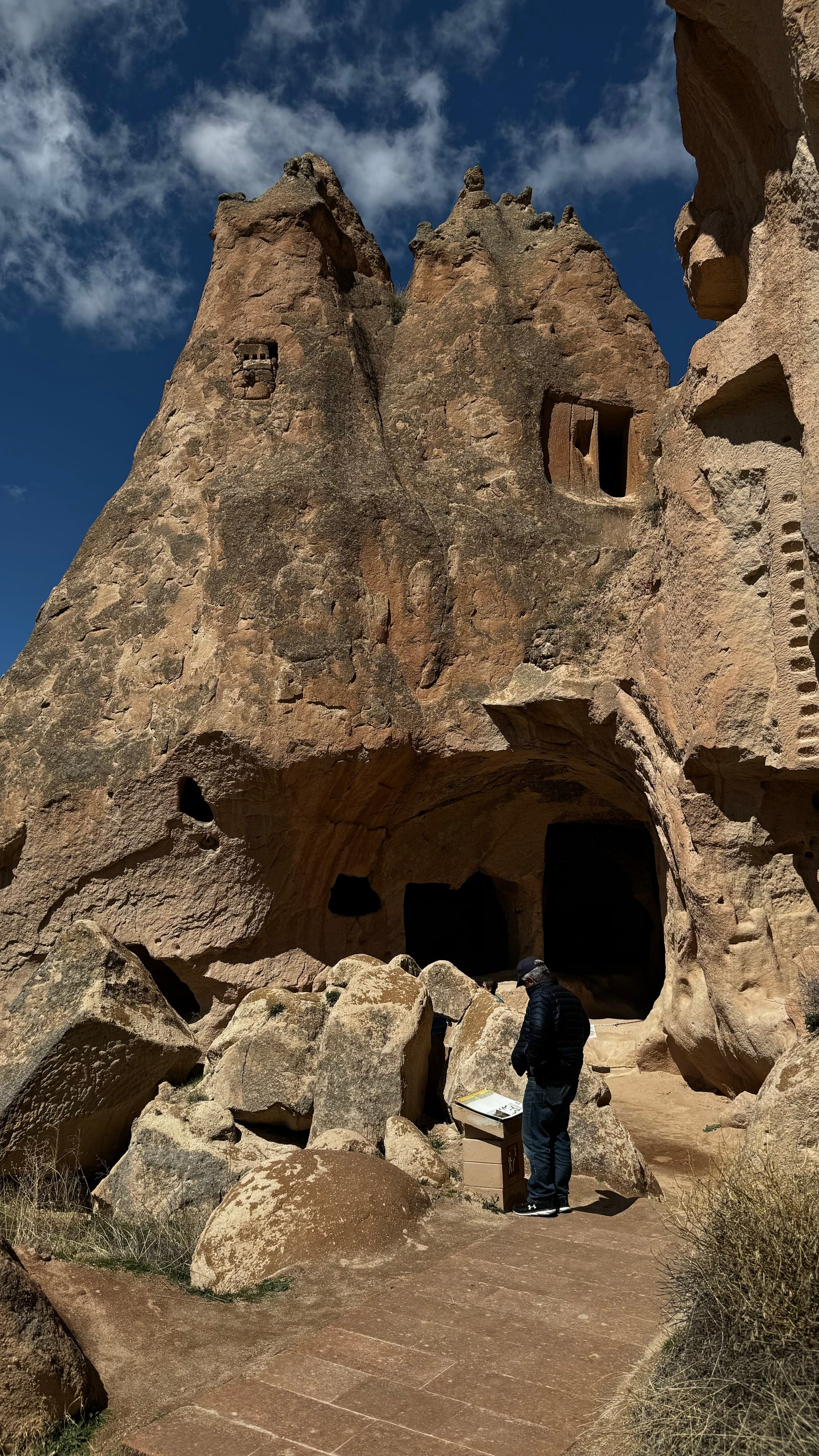
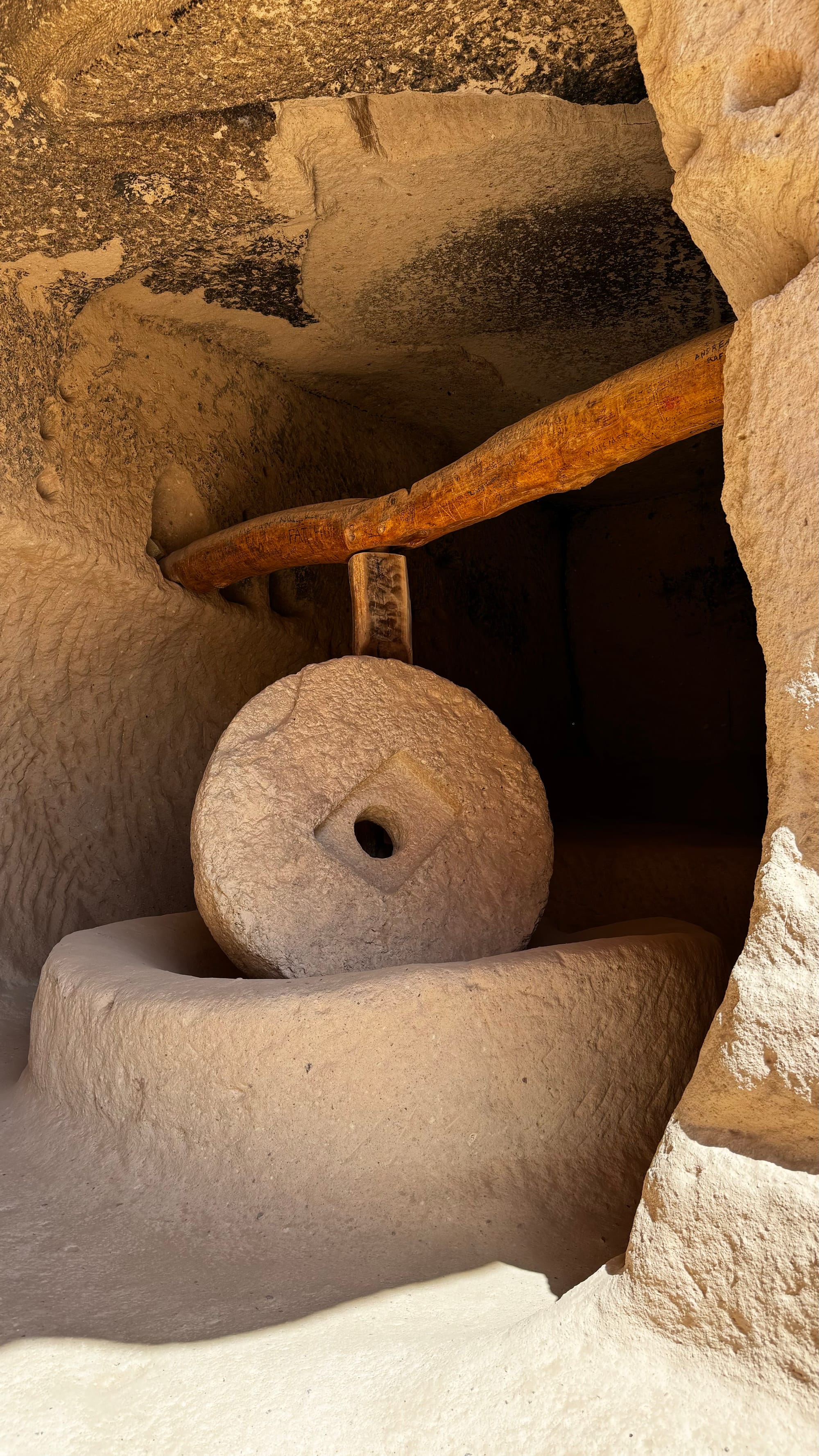
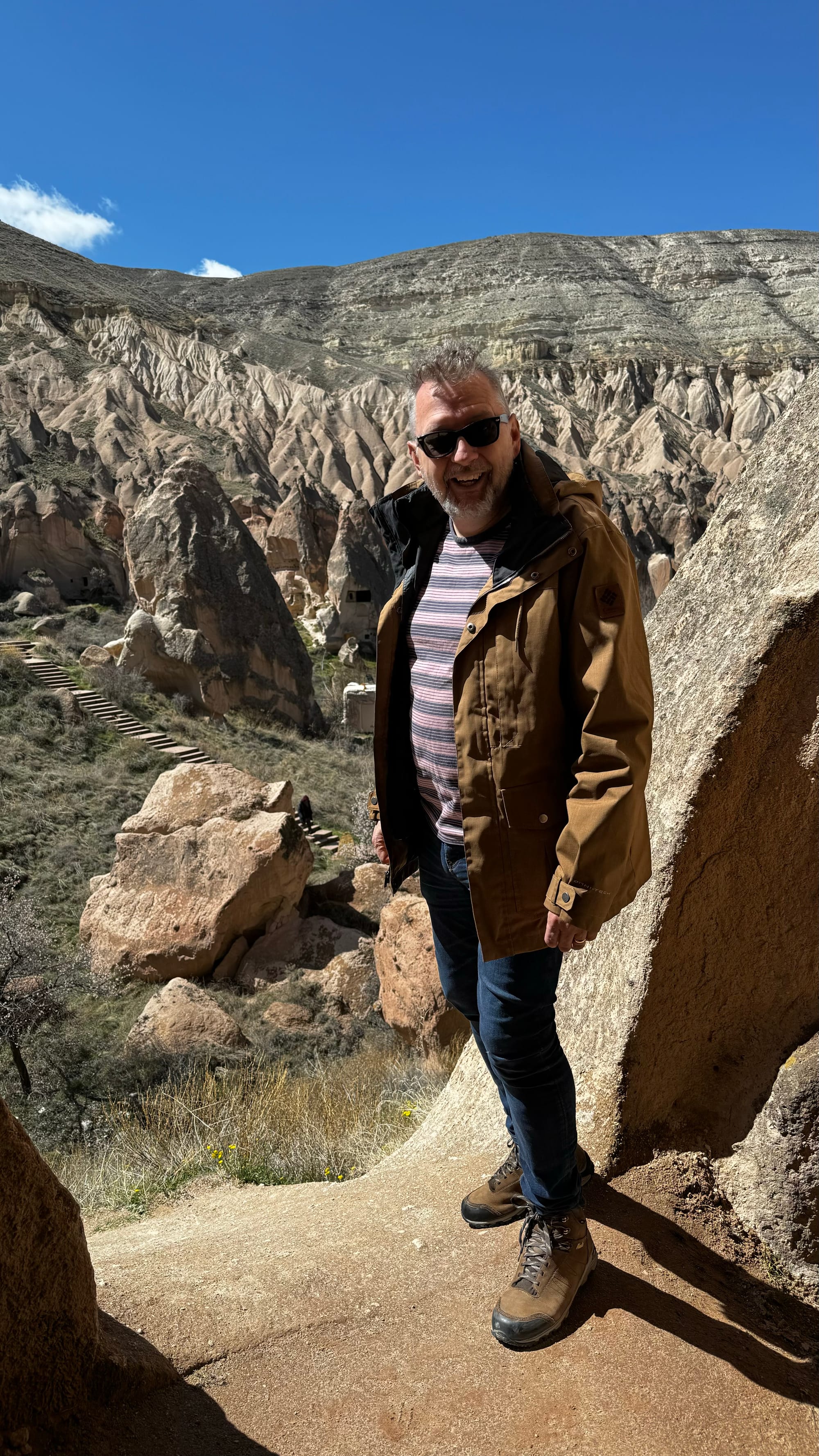
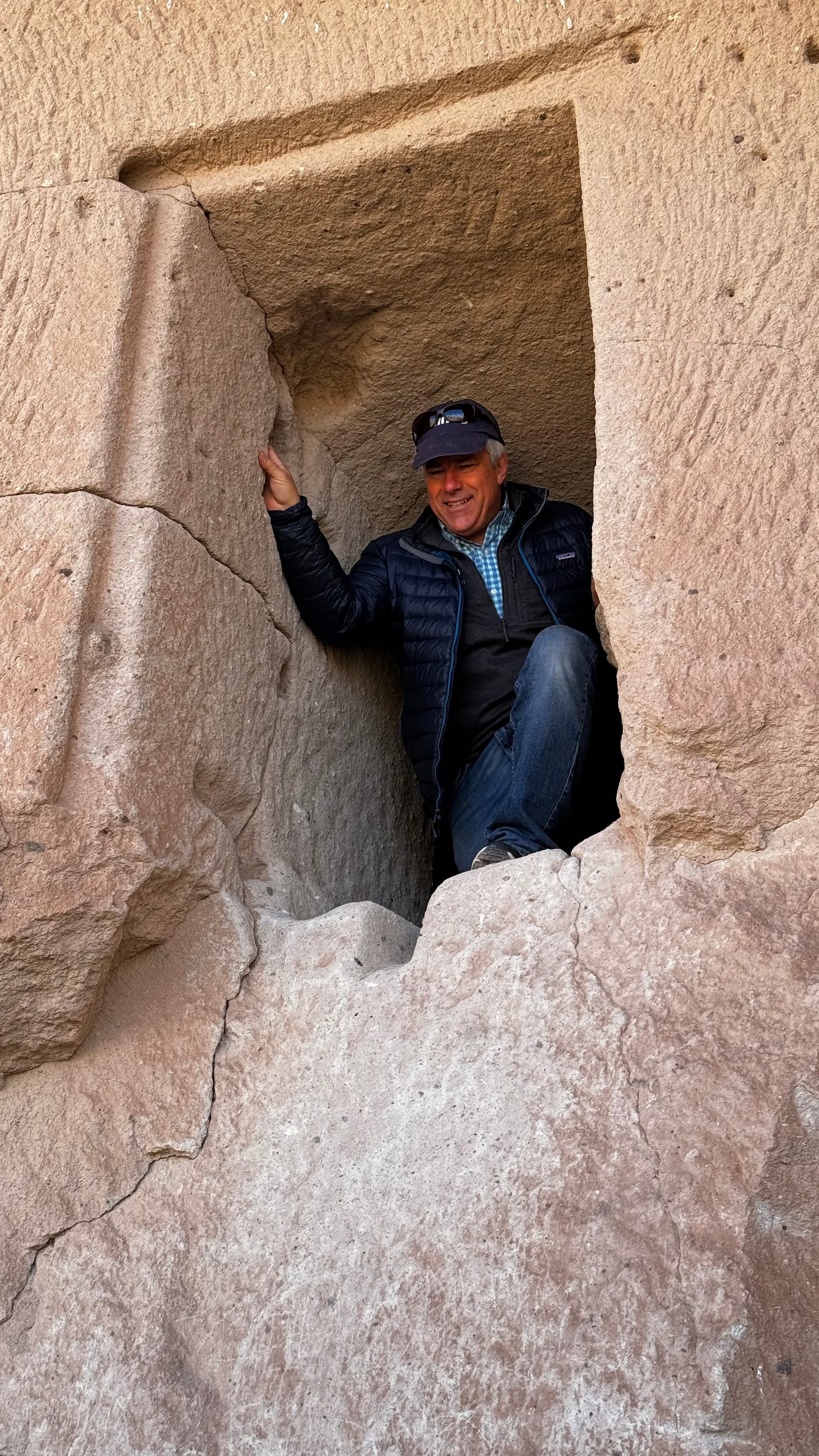
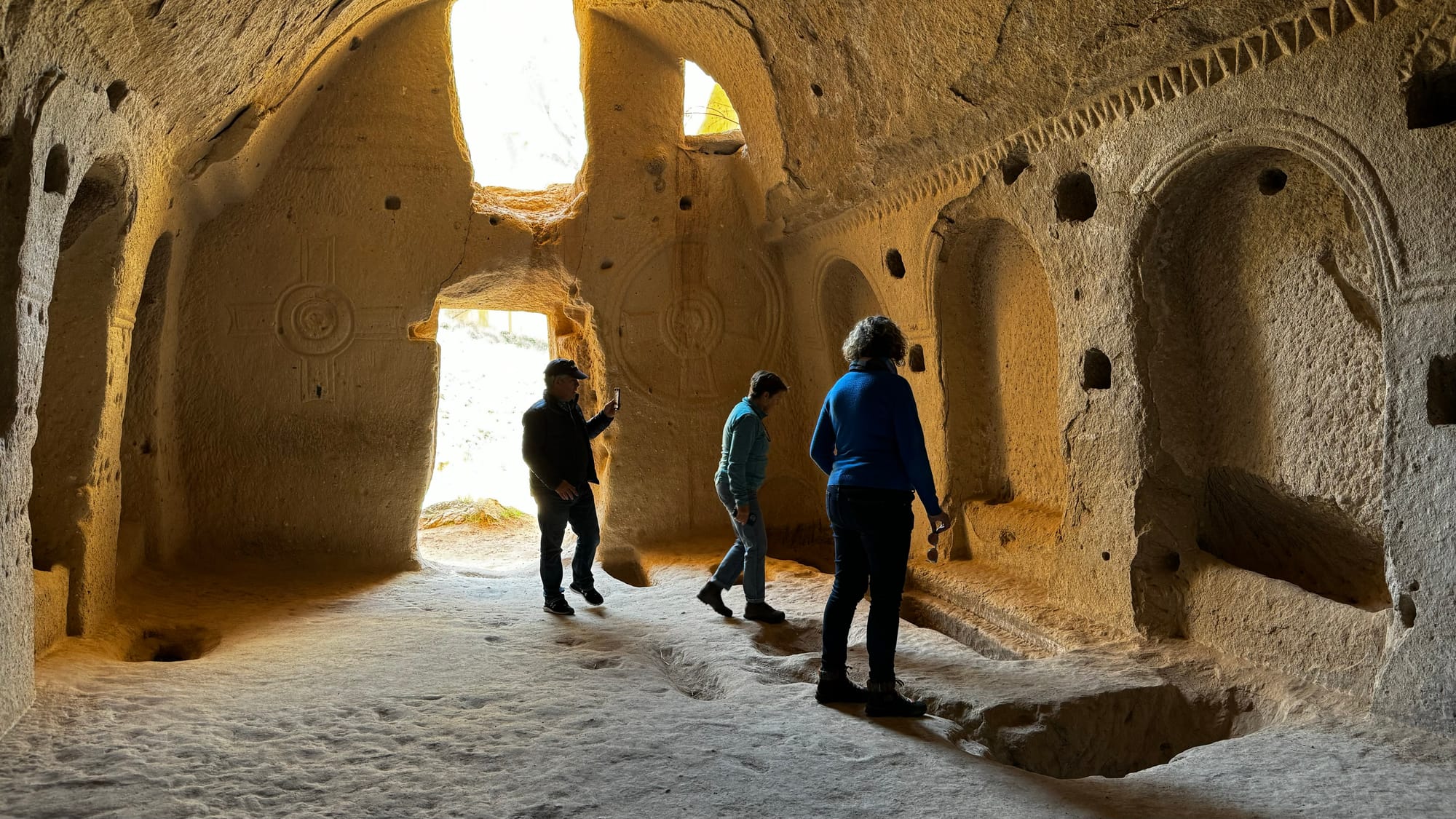
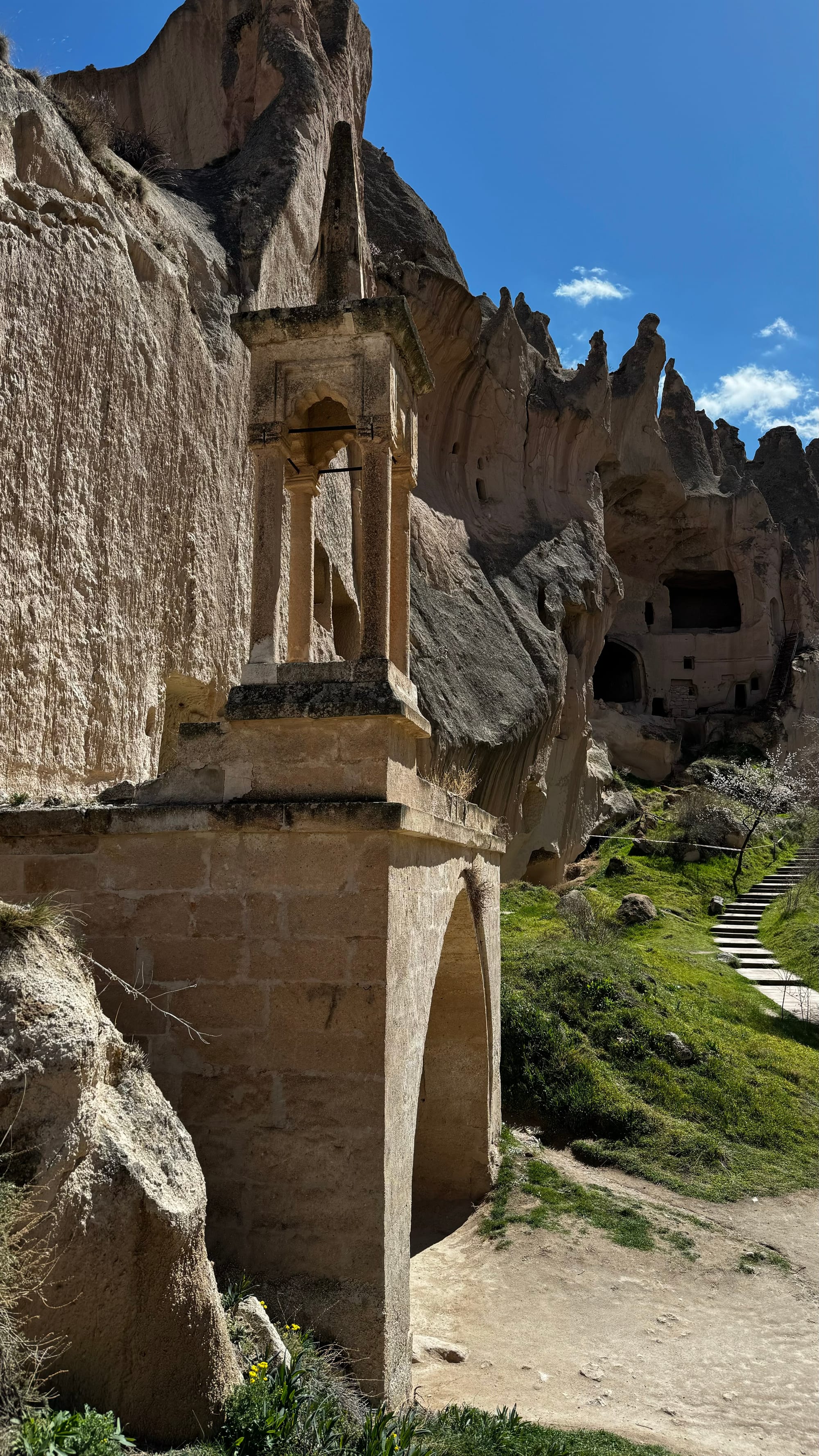
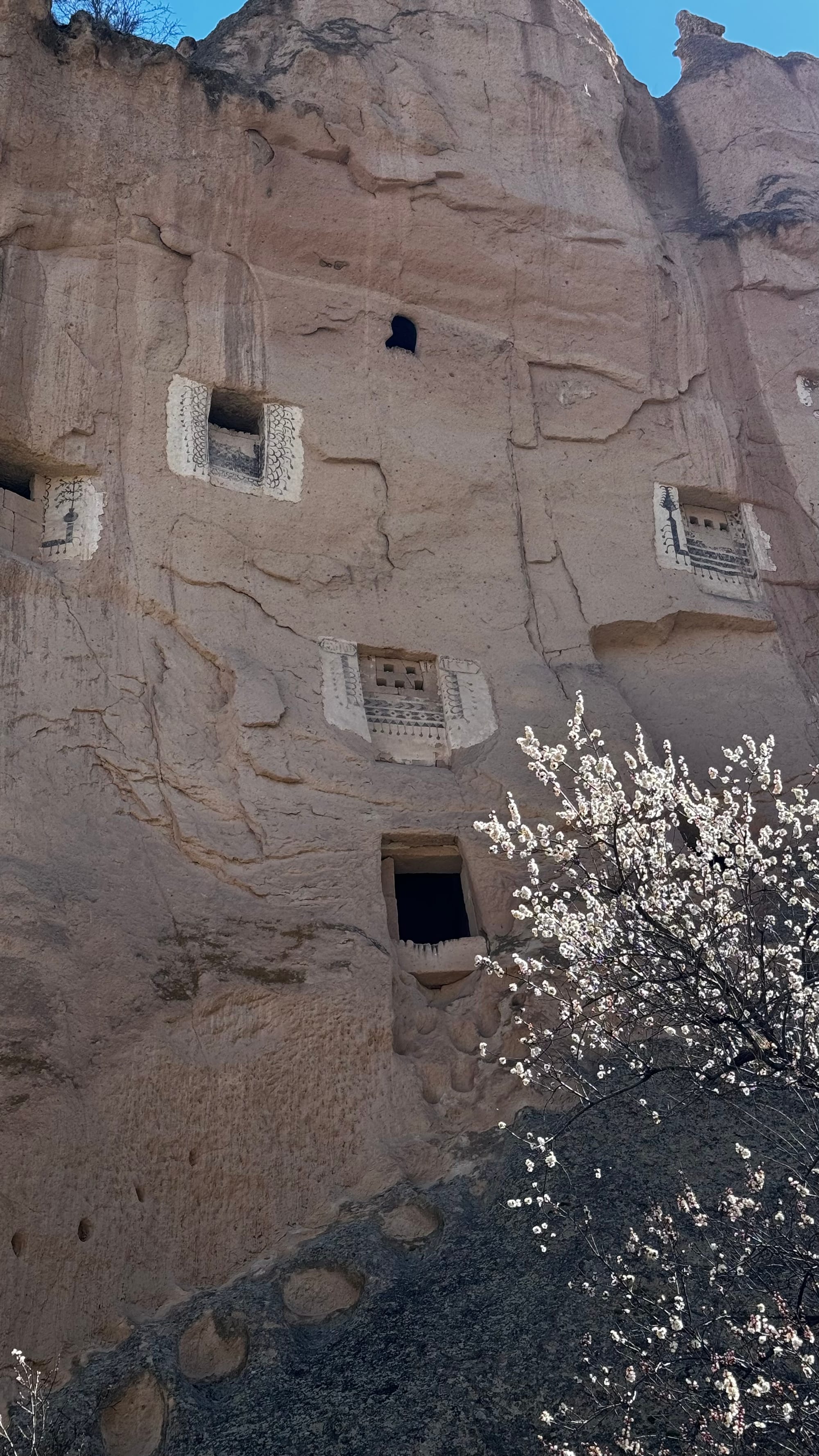
Scenes from Zelve. The painted windows are dovecotes.
We then headed back to town and split up, Karina and I opting to spend some time in the spa pool and sauna that were included in the hotel package. It was nice to relax in the water for a bit, and we were ready for yet another attempt to find a cocktail bar. This time, we were rewarded with one that had an amazing view out over the valley of Göreme. We watched the sun go down until it got too cold, and we retreated inside.
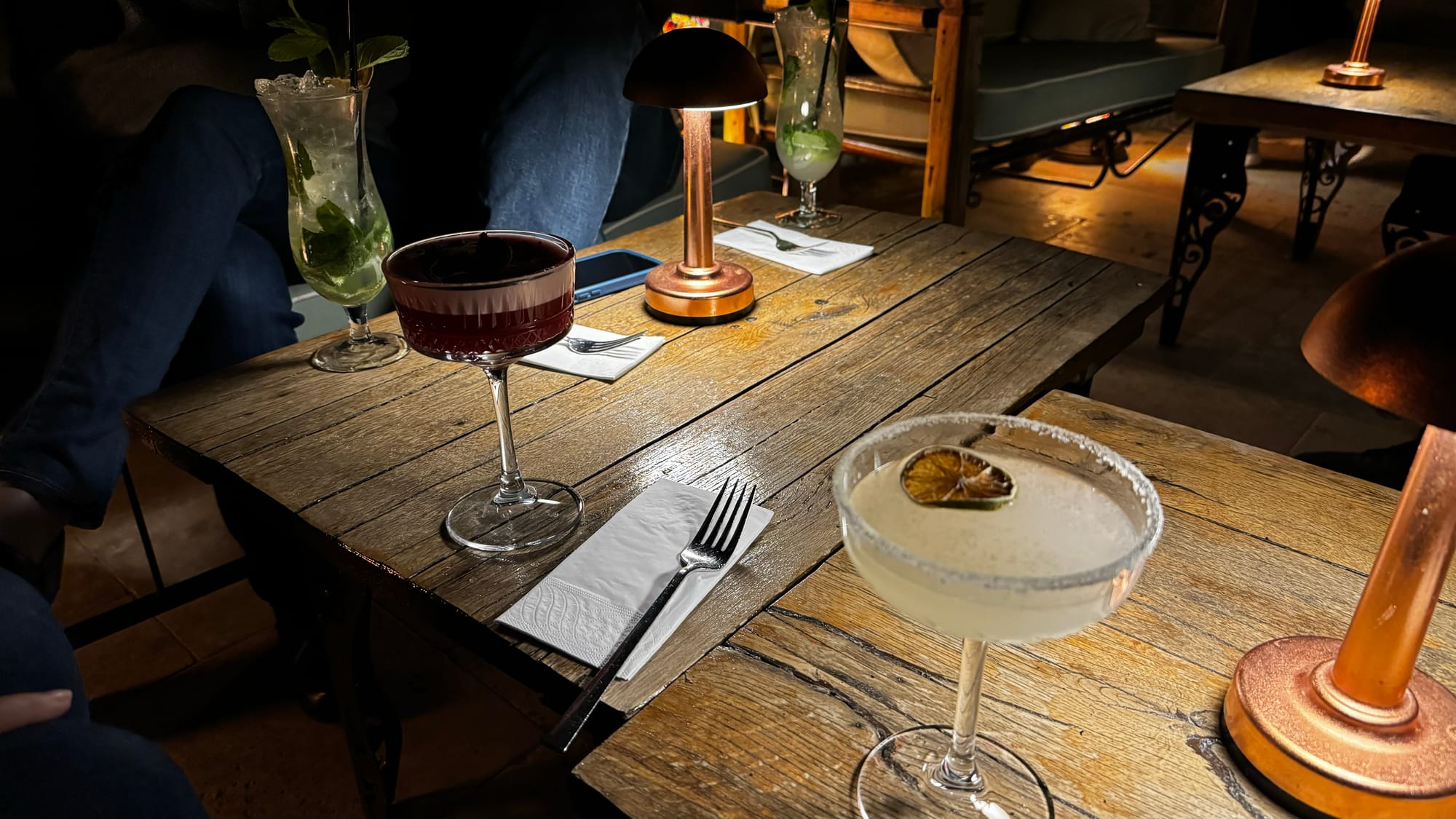
On day three, we headed to the Göreme Open Air Museum and the Dark Church. This valley was previously inhabited by Greek Christians (most of whom left the area as part of forced population exchanges with Türkiye in the 1920s). The valley is full of orthodox churches with ornate paintings, most of which we were not allowed to take photos in, but they did provide some stunning memories. They are very ornate and very beautiful.
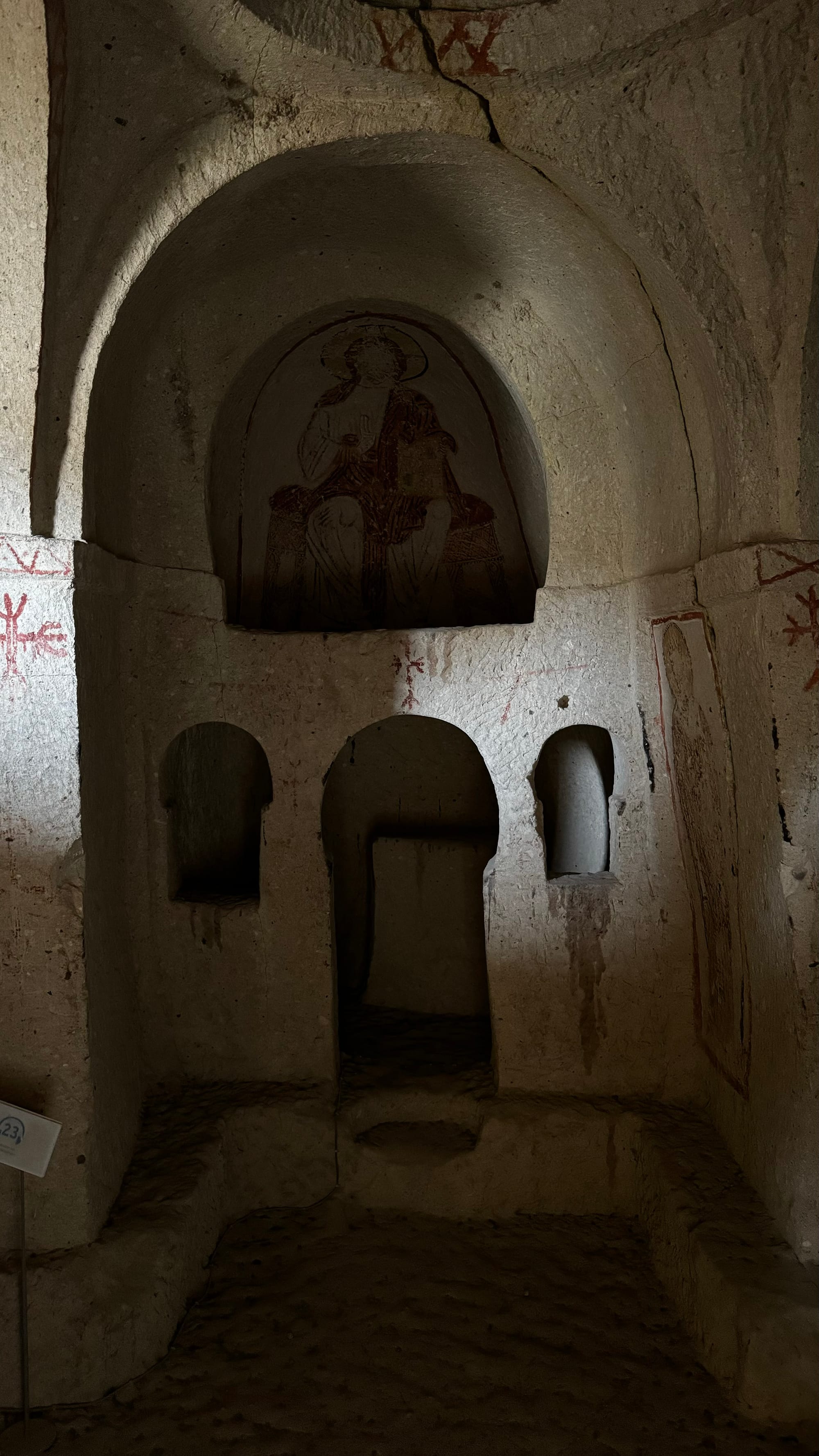
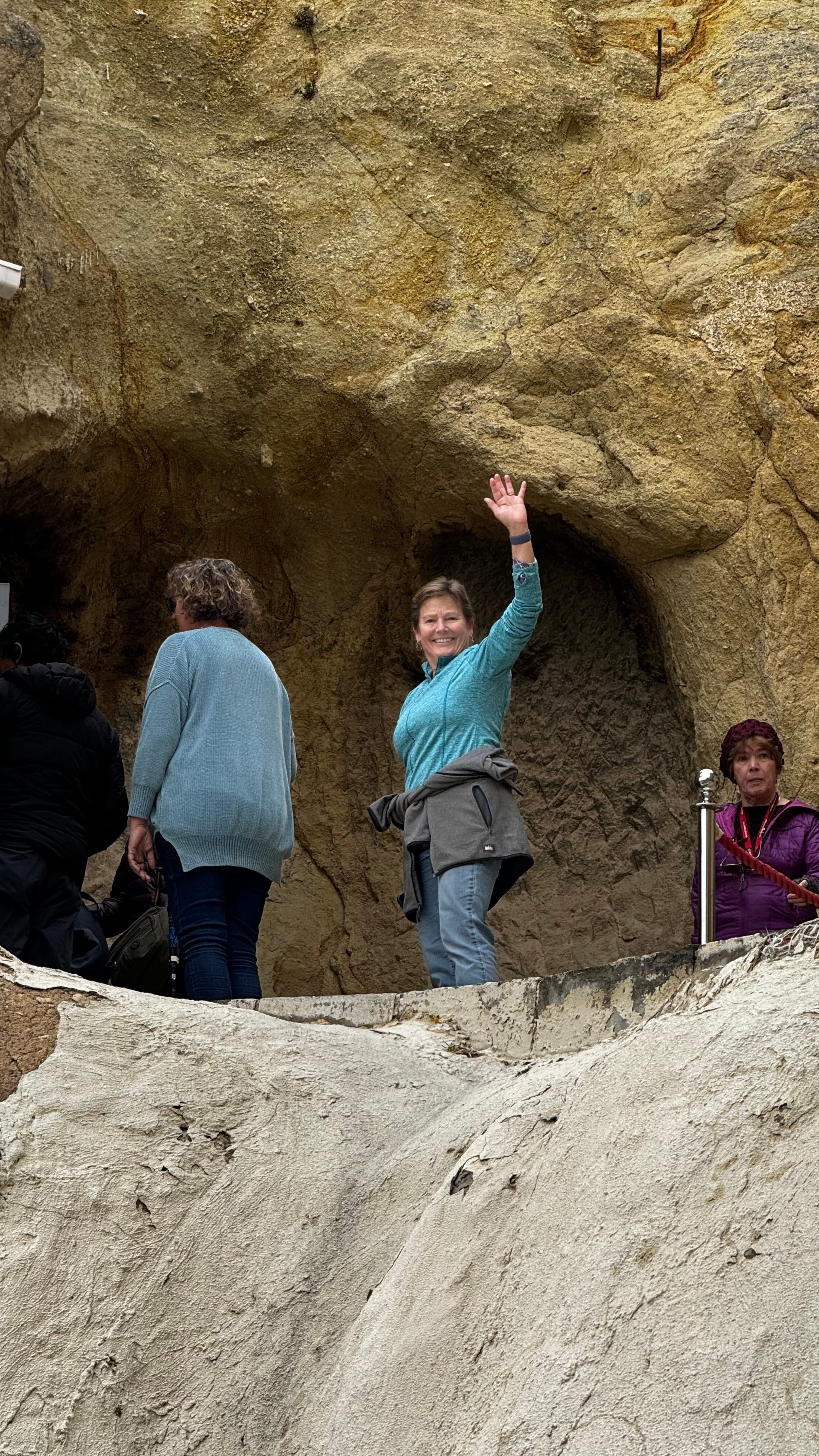
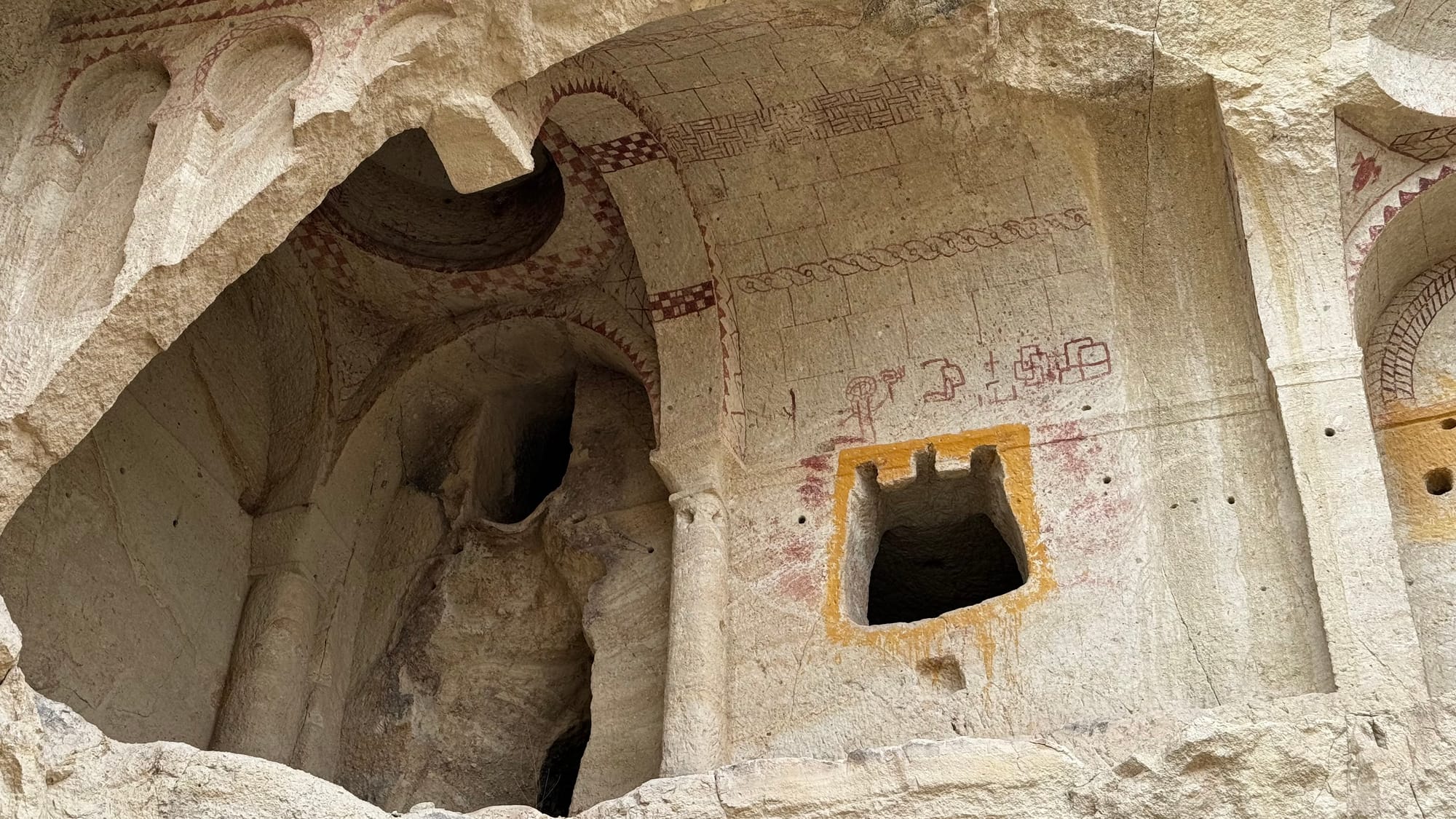
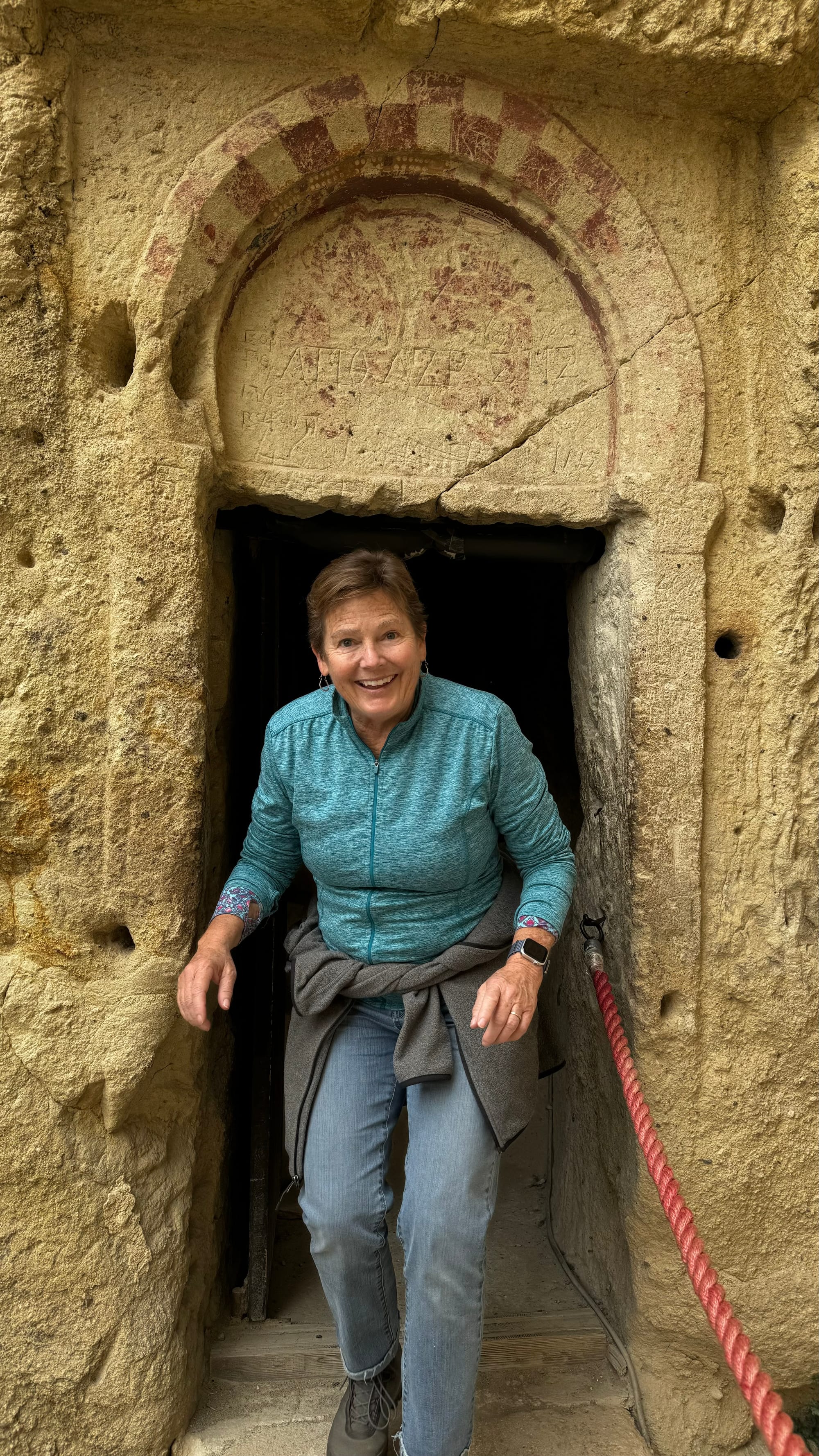
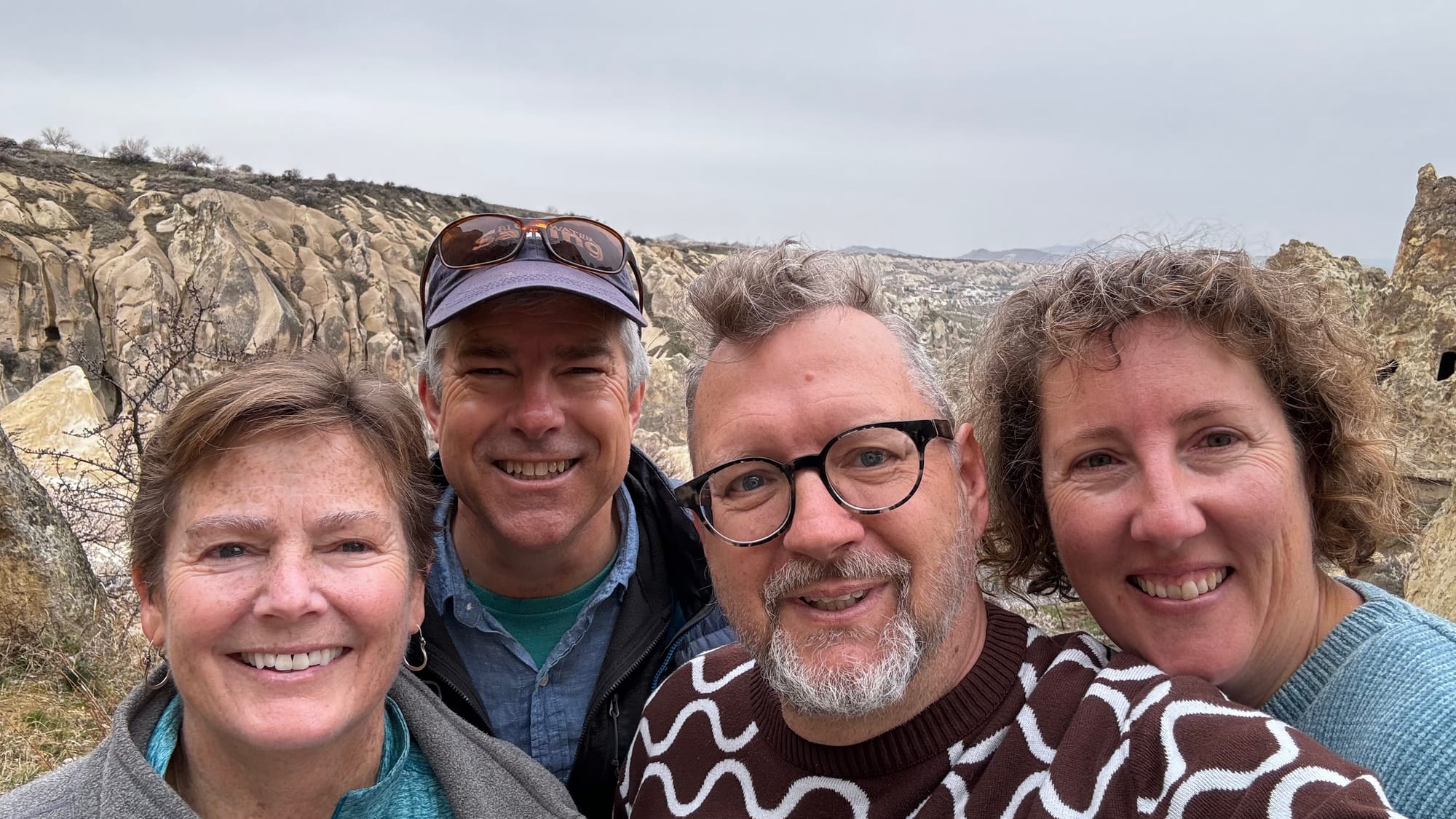
Goreme open air museum and the churches.
From there, we drove to The Underground City at Derinkuyu. The underground city complexes are man-made caves hollowed out over several levels. They were used as defensive structures where the mostly Christian local population would retreat to hide from Muslim raiders. They don't know how many existed – some estimates are as high as two hundred throughout the region. They are fairly sure that they haven't rediscovered them all.
Derinkuyu is the most famous as it's the largest—over 85 metres deep and able to house up to 20,000 people! It was connected to another nearby city by a tunnel over 9 km underground. It's such an interesting experience and very different from how it might run in Australia or the US. Basically, you're let loose relatively unsupervised and told to follow the red arrows down and the blue arrows to get out again!
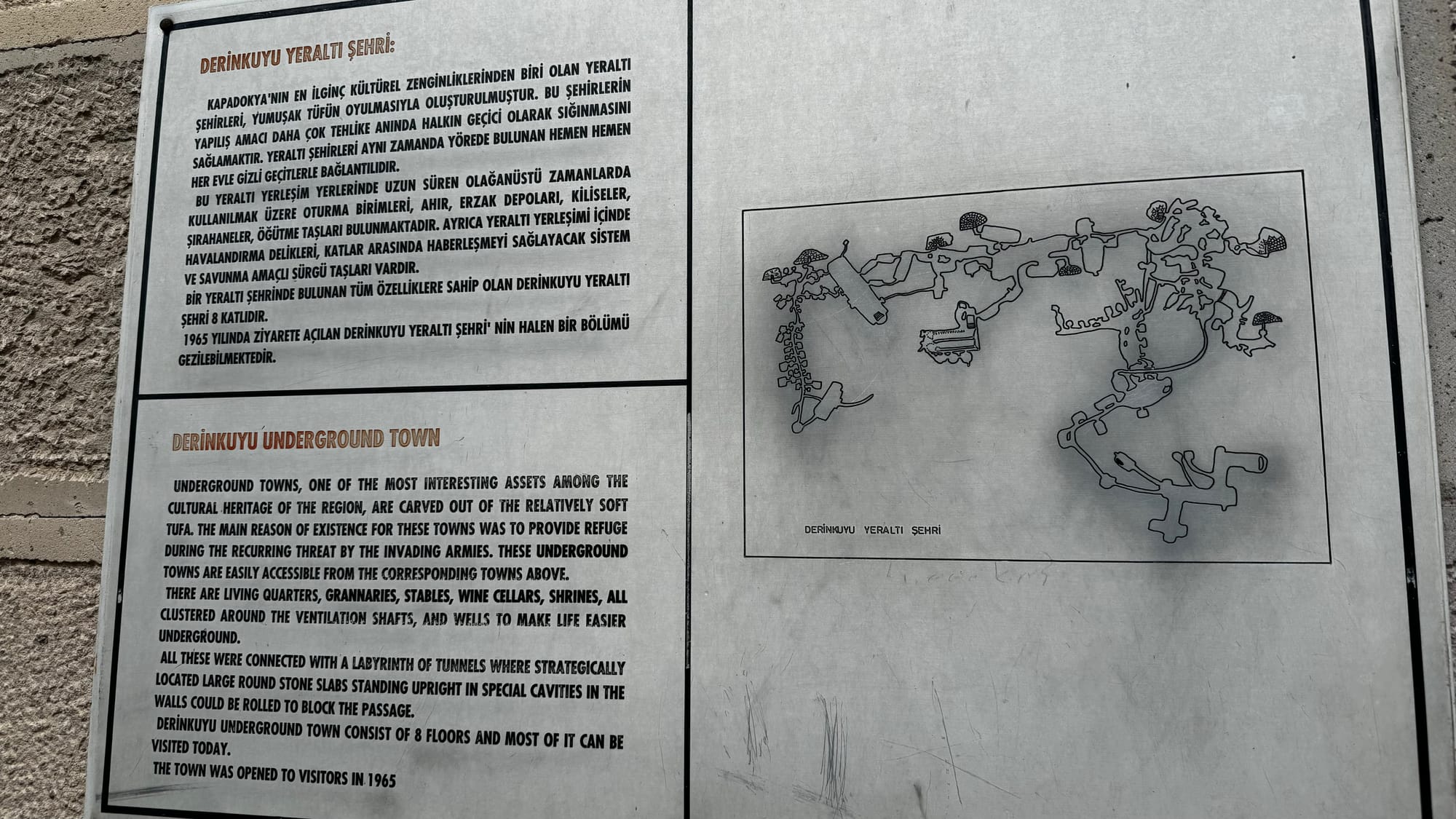
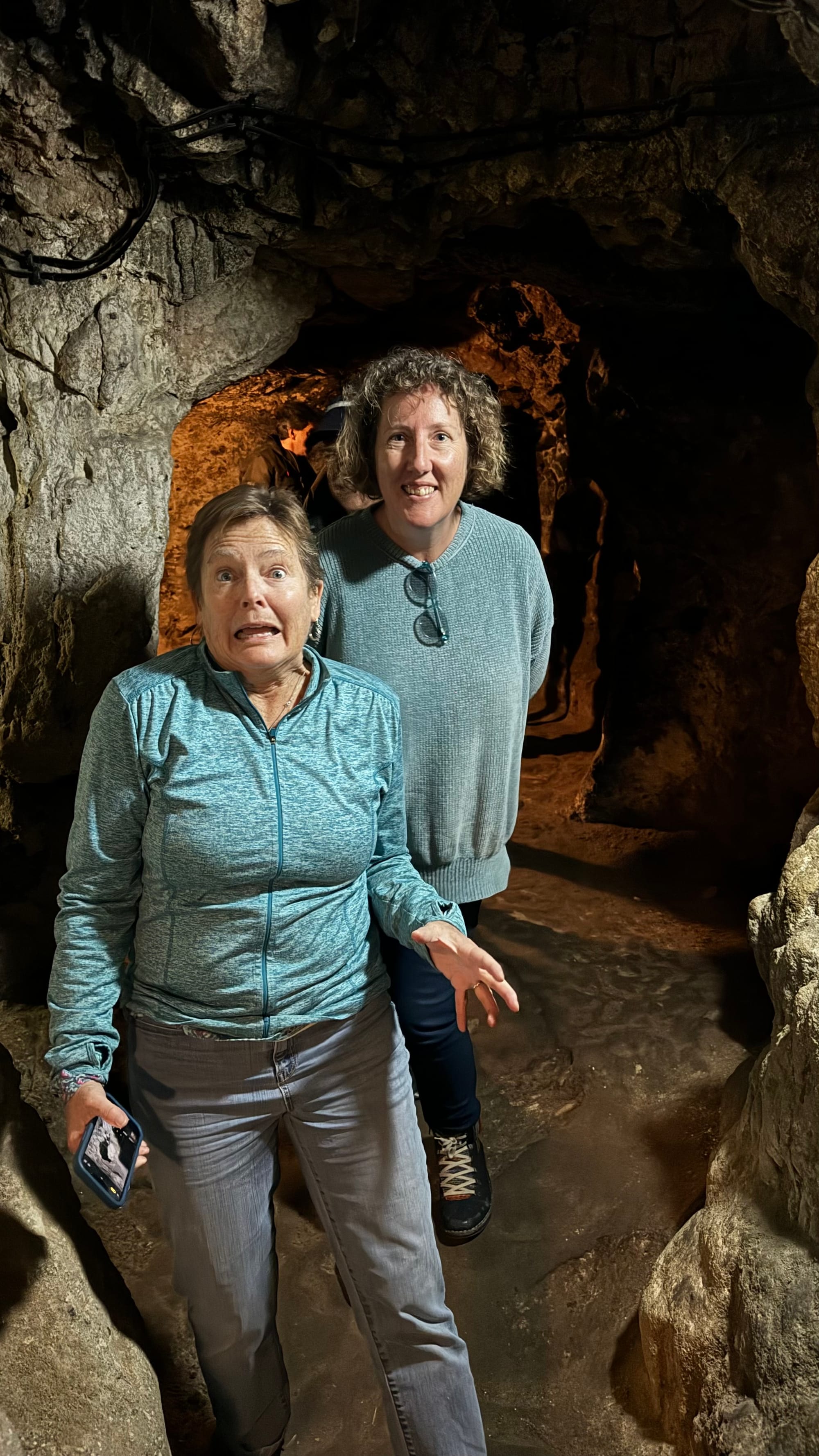
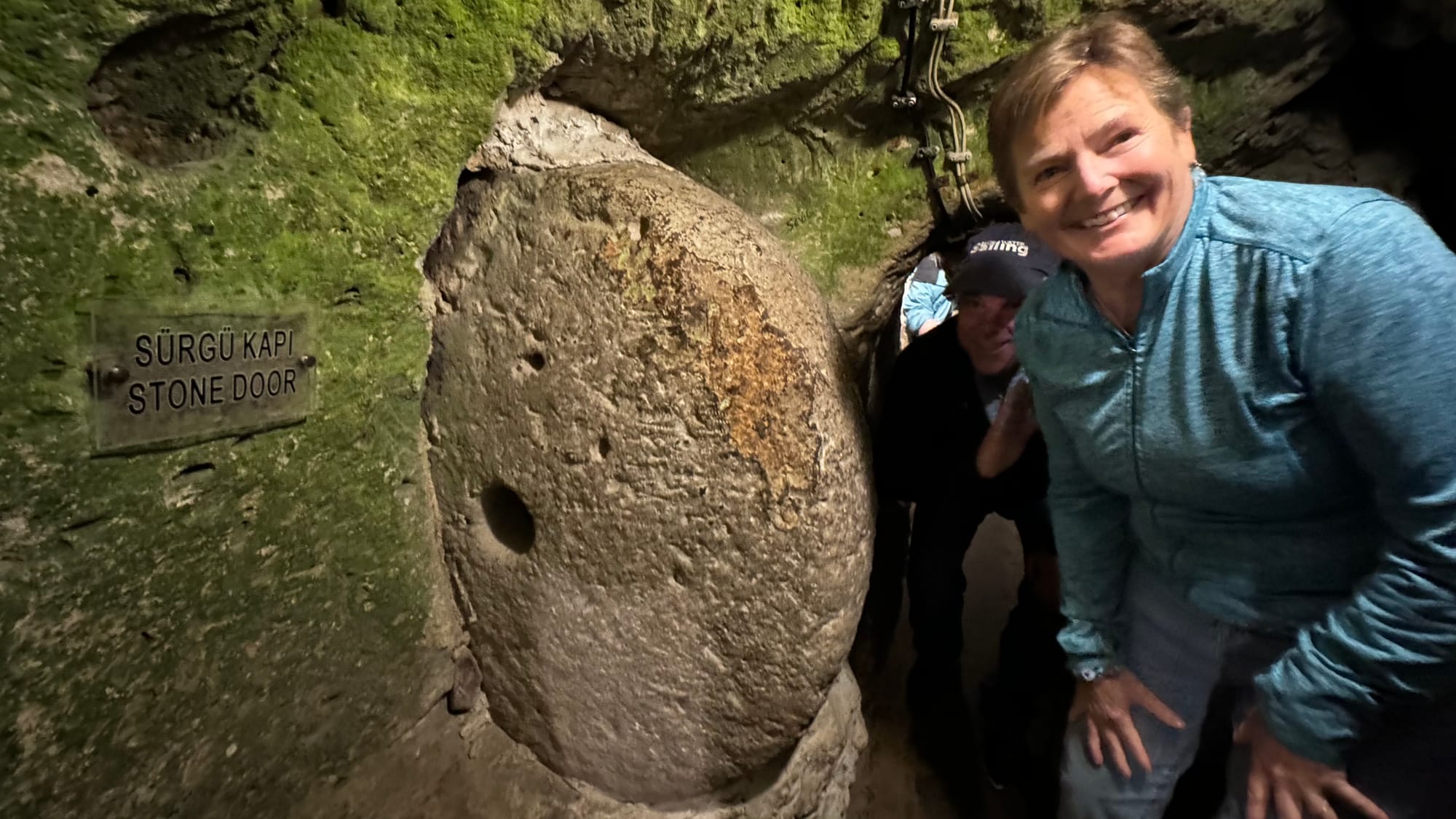
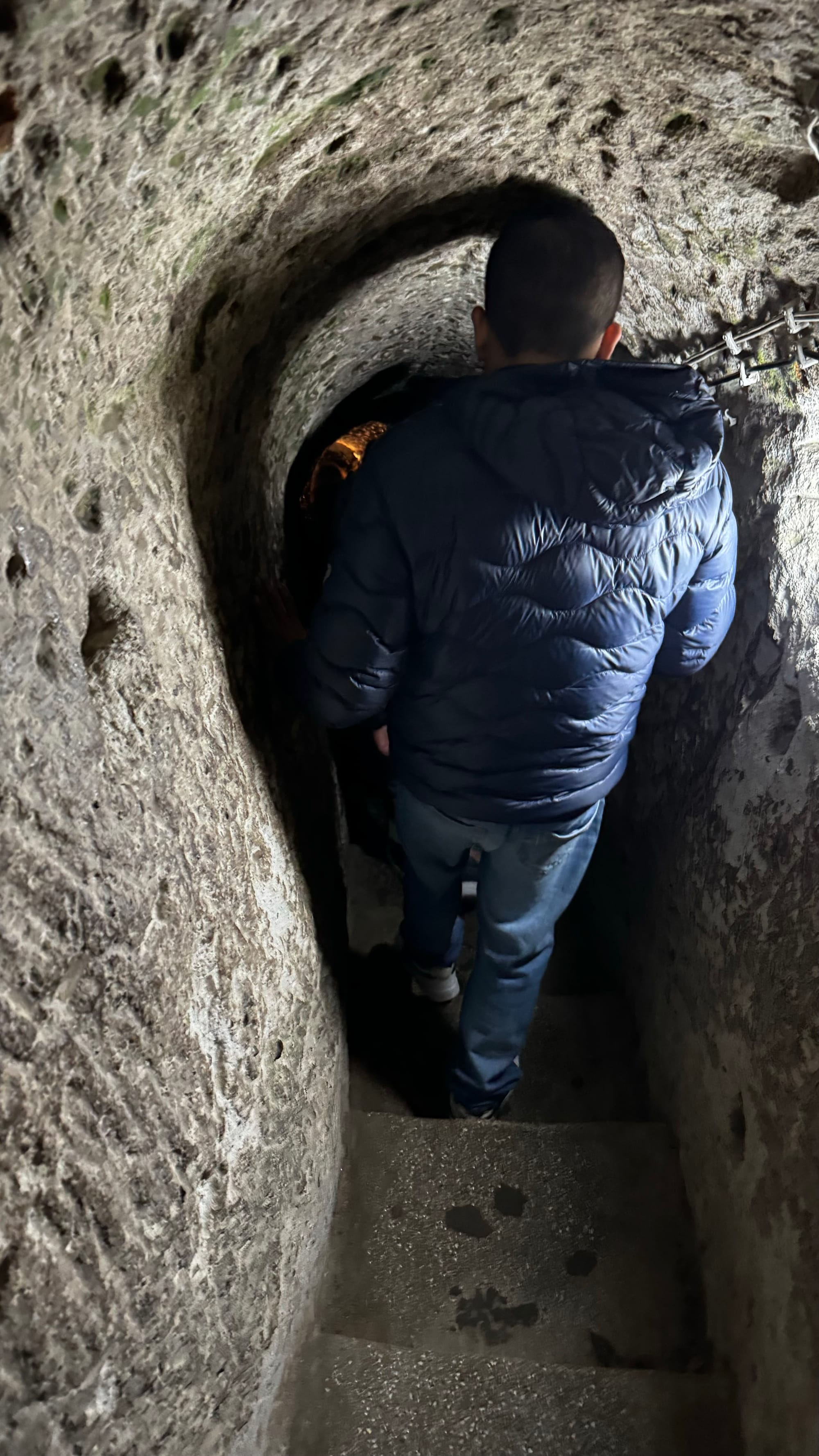
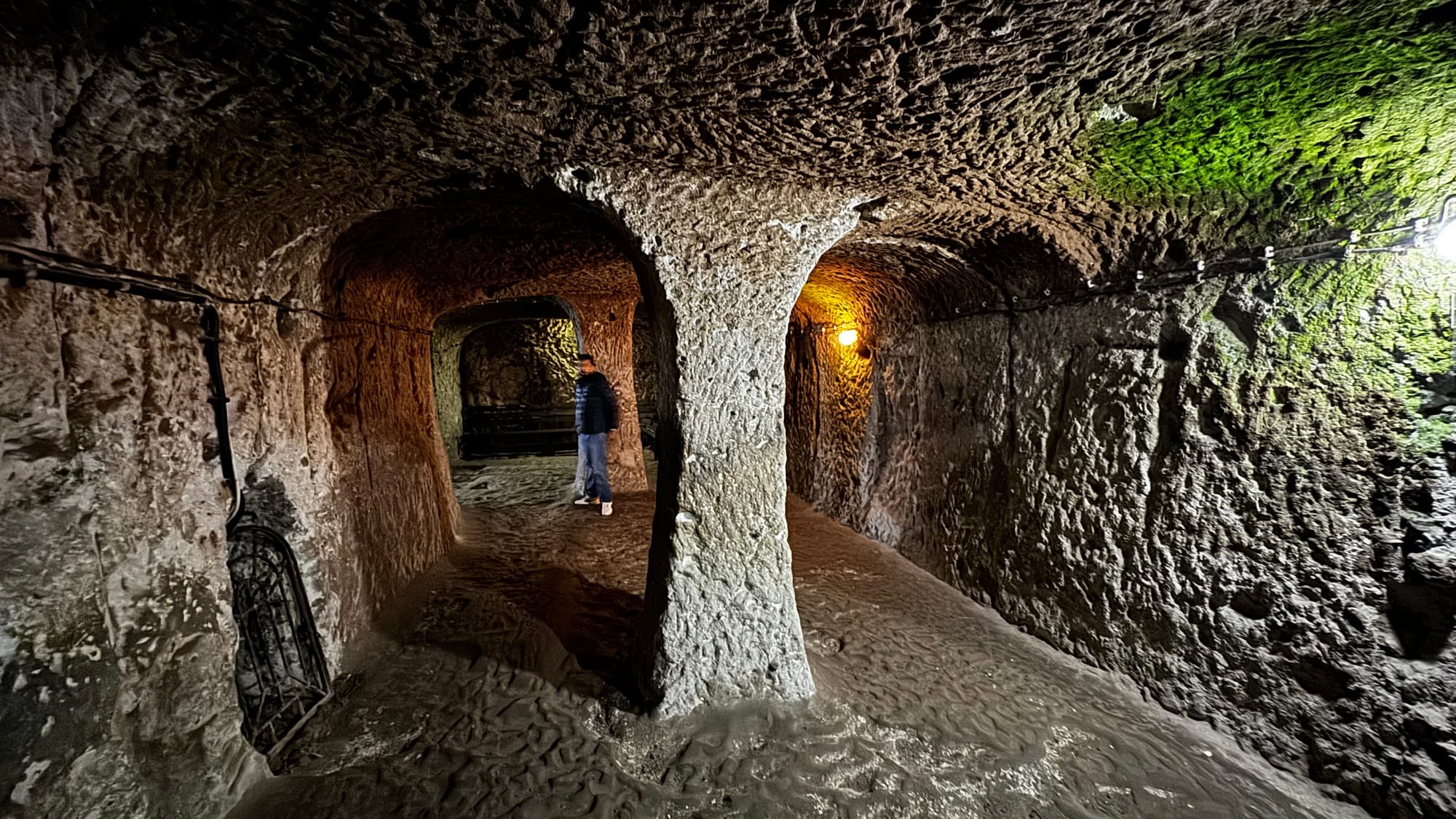
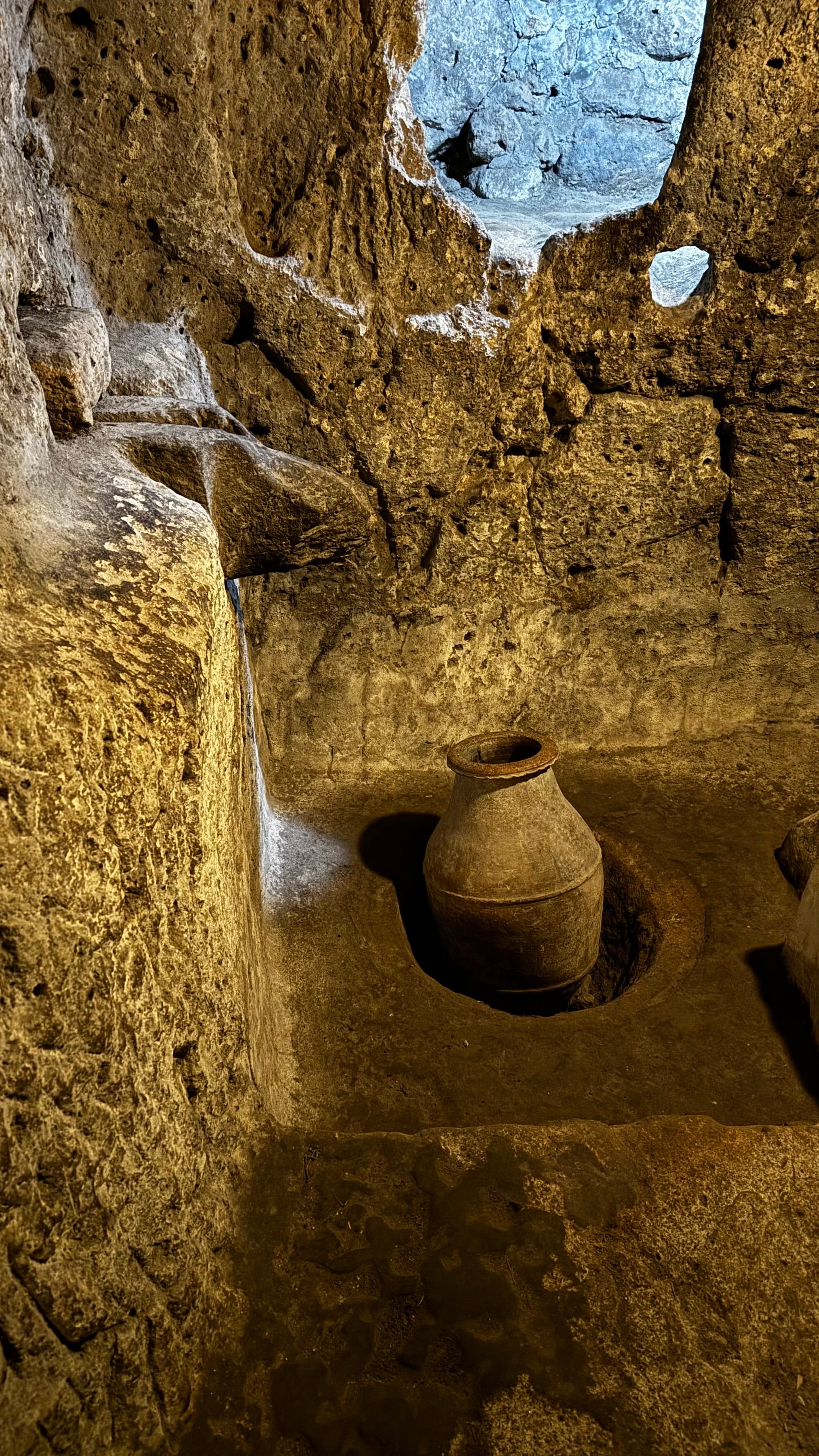
Derinkuyu underground city
It was very crowded with people, even this early in the season and particularly when going downstairs, you had to crouch, the walls crowding in. After we reached a stopping point with people pushing up to us, shoulder to shoulder, Karina, Peter and Sarah decided that was enough and headed back up. I went down to the lowest point and had a quick scoot around, then followed them back out as well.
There are stories of Derinkuyu being used by local Christians around the time of World War I to hide from Muslim raids; after the Christians left, it was promptly forgotten about until being rediscovered by a local in the 1960s when they crashed through into a tunnel while enlarging a room in their own house. Roughly 10% of the complex is available to visit today.
From underground to overground. This time, we were off to Uchisar Castle. A giant volcanic toff, this one towers above the surrounding valley and has also been hollowed out inside for a fortress. We walked up to the top and were rewarded with amazing views of the landscapes.
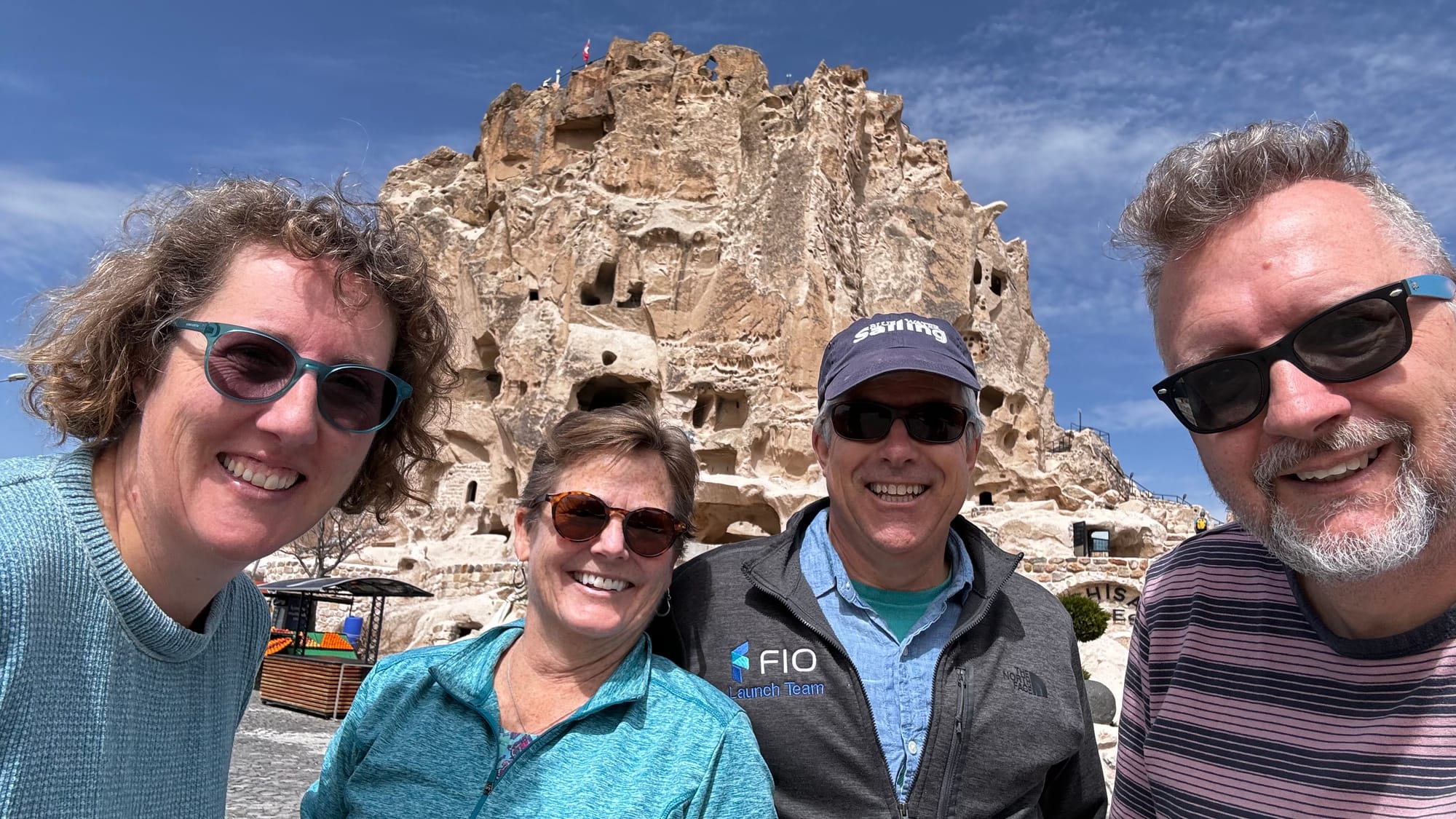
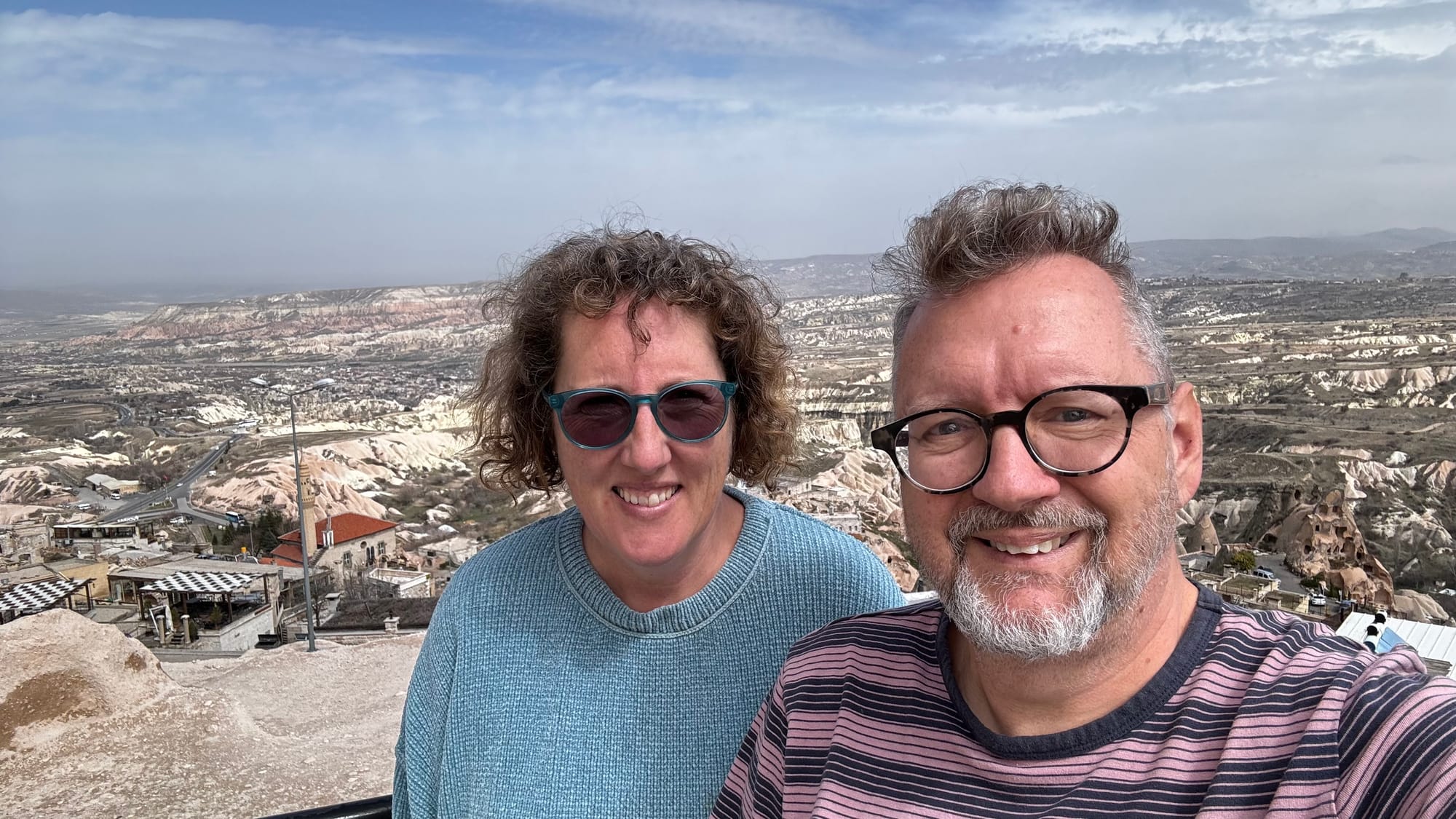
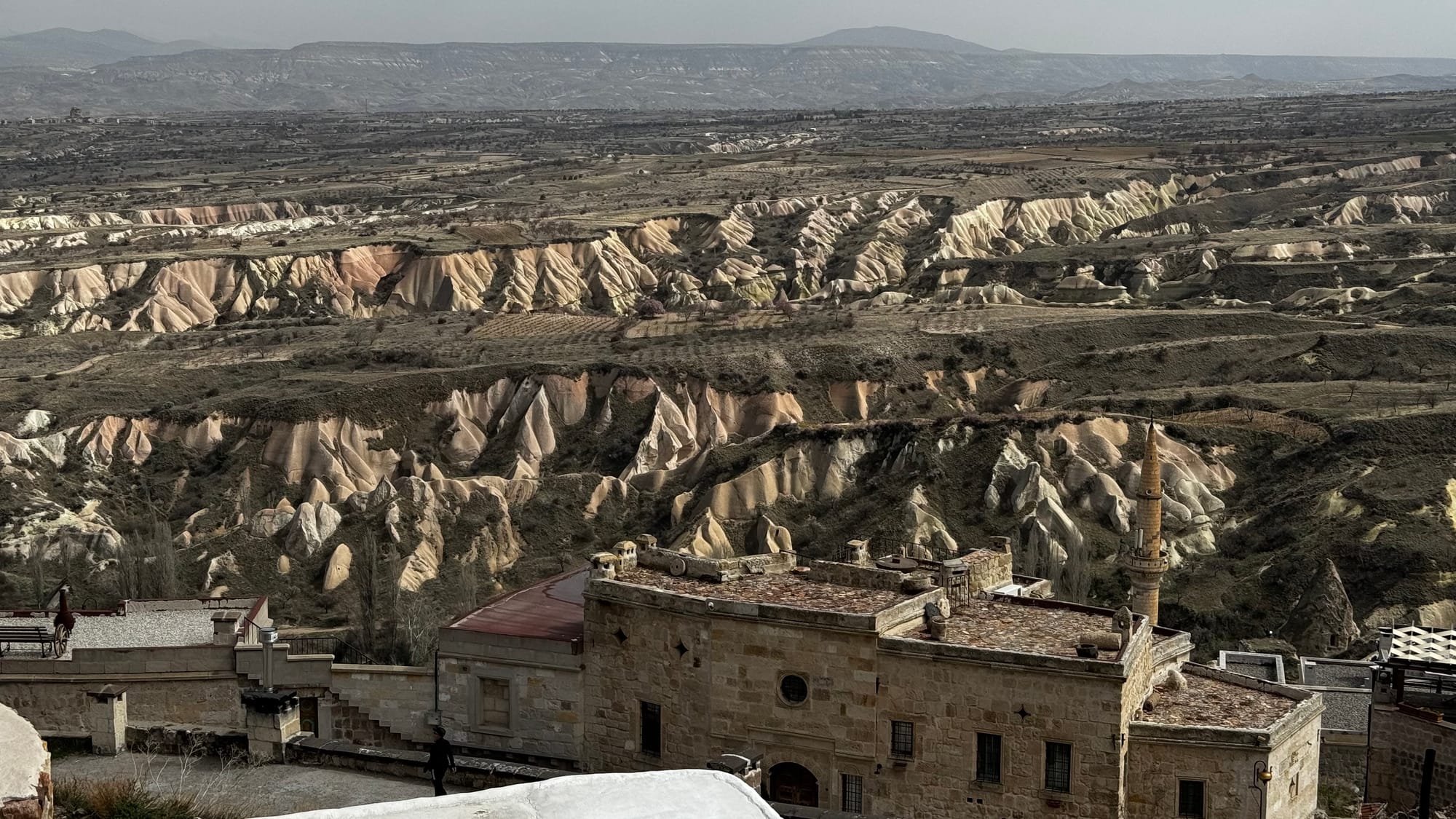
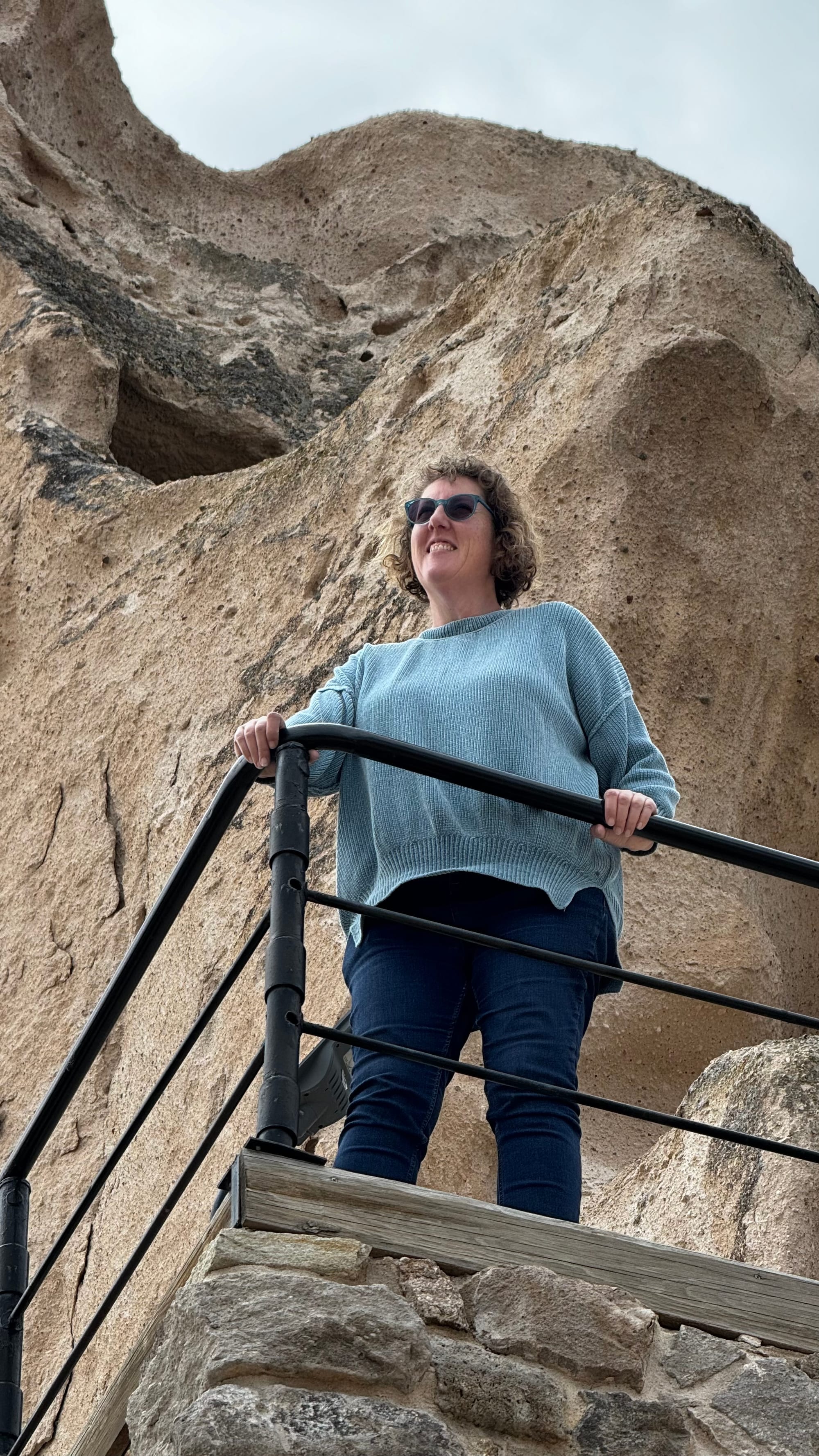
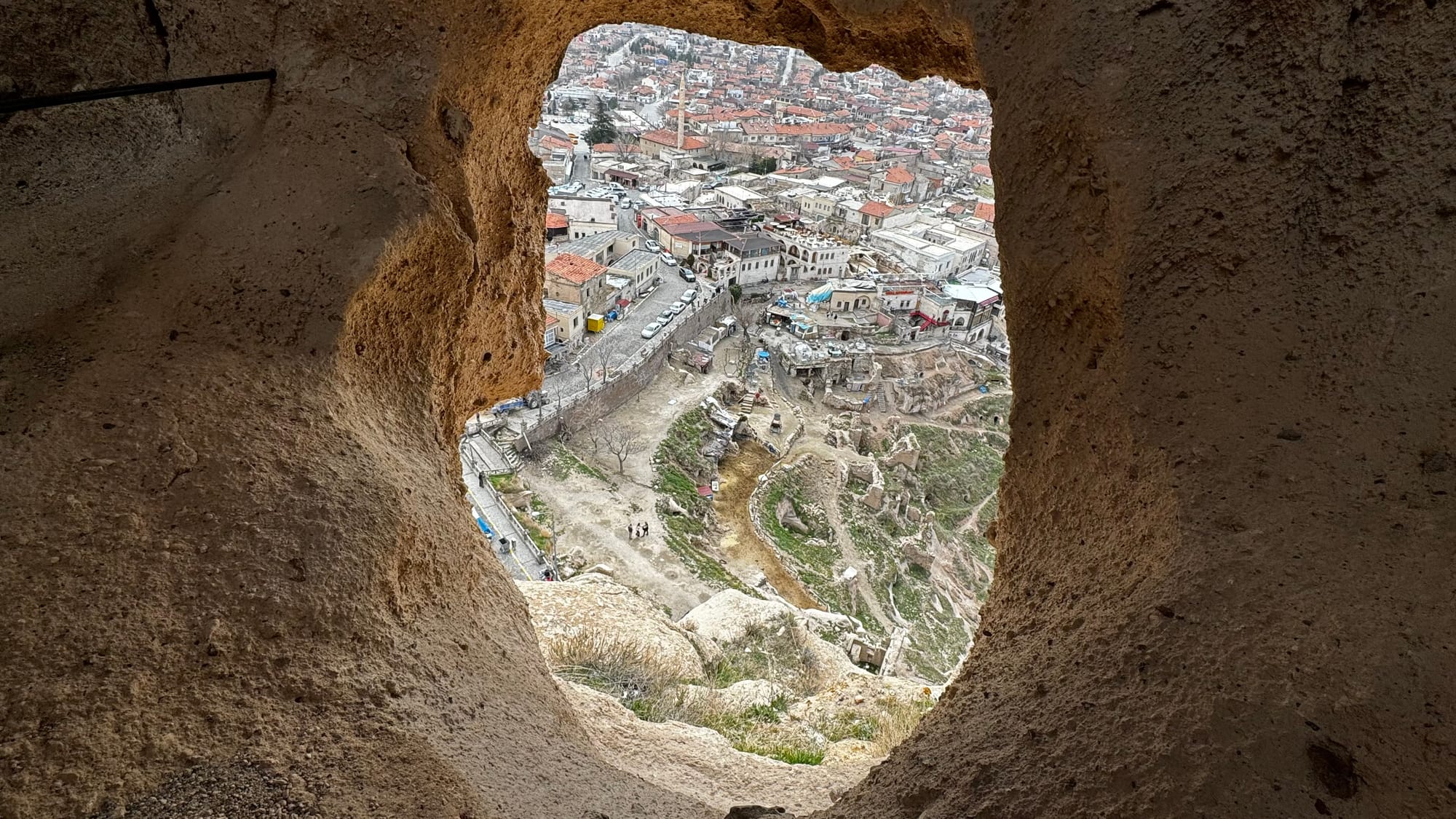
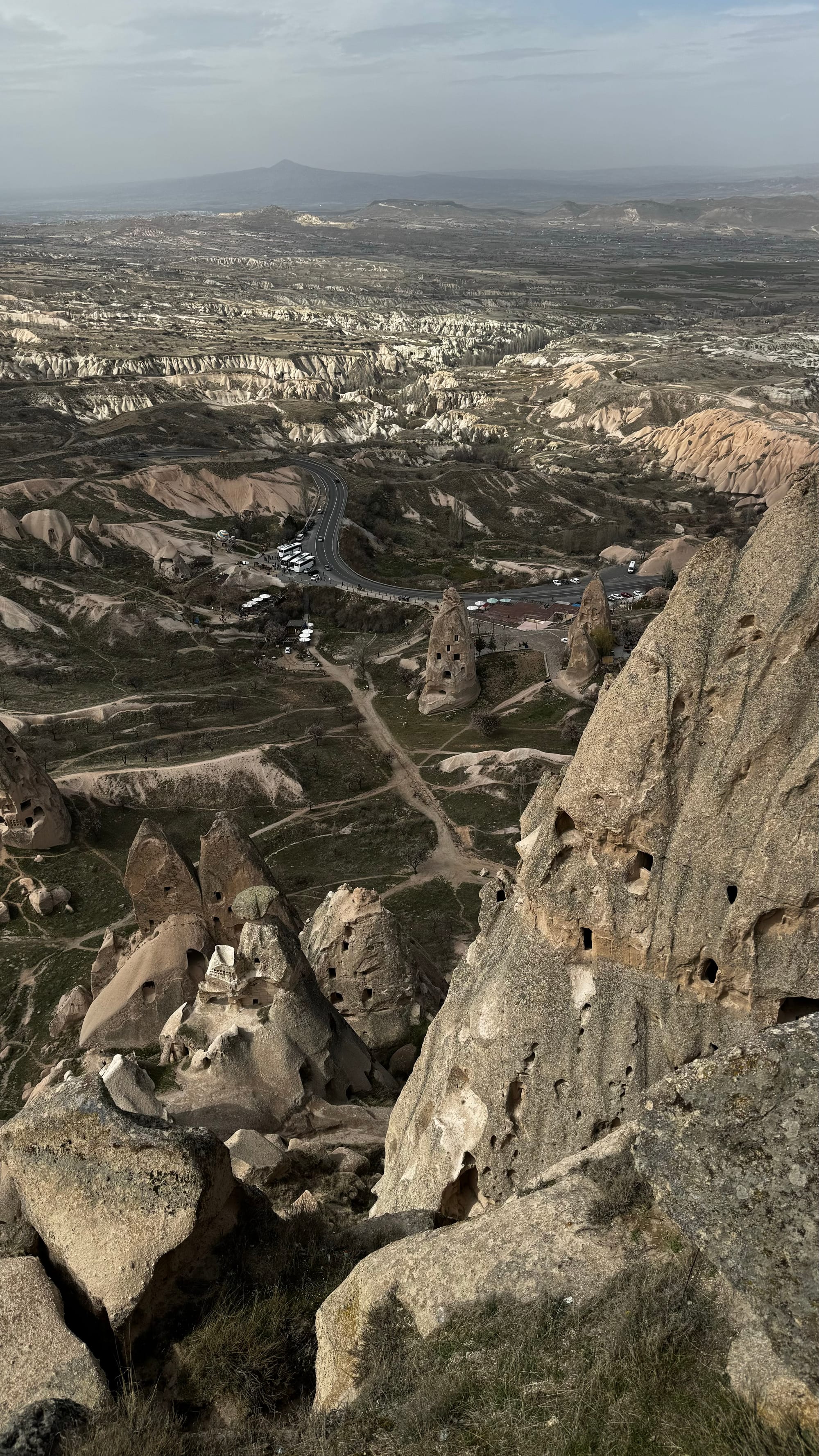
Uchisar Castle
It was fairly cold in the evenings, around 5-10C, and mulled wine is a local favourite, so after splitting up for the afternoon and a late lunch, then visiting the Whirling Dervishes, we met for a drink at the Red Red Wine bar and listened to local music and drank some mulled wine.
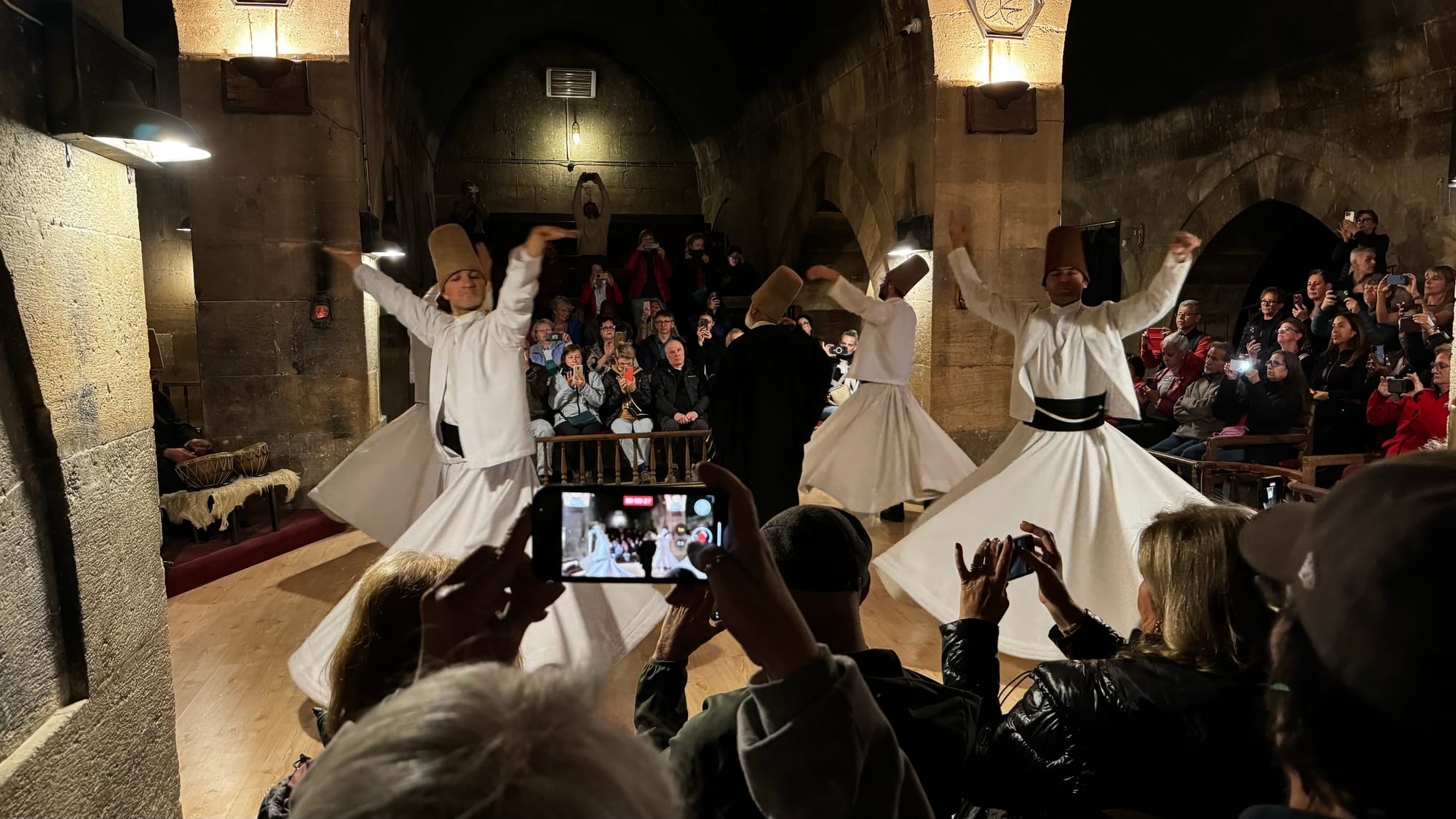
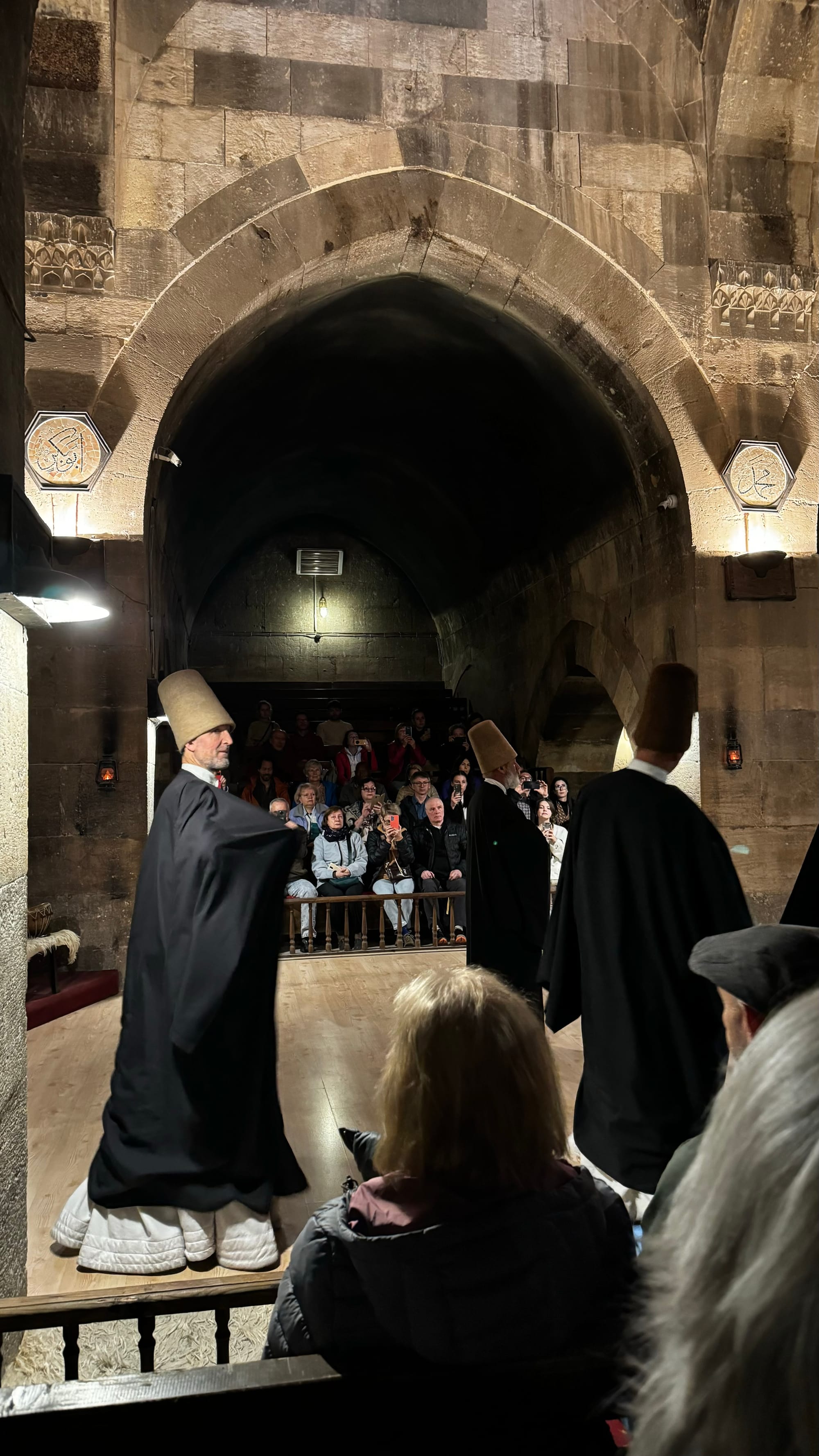
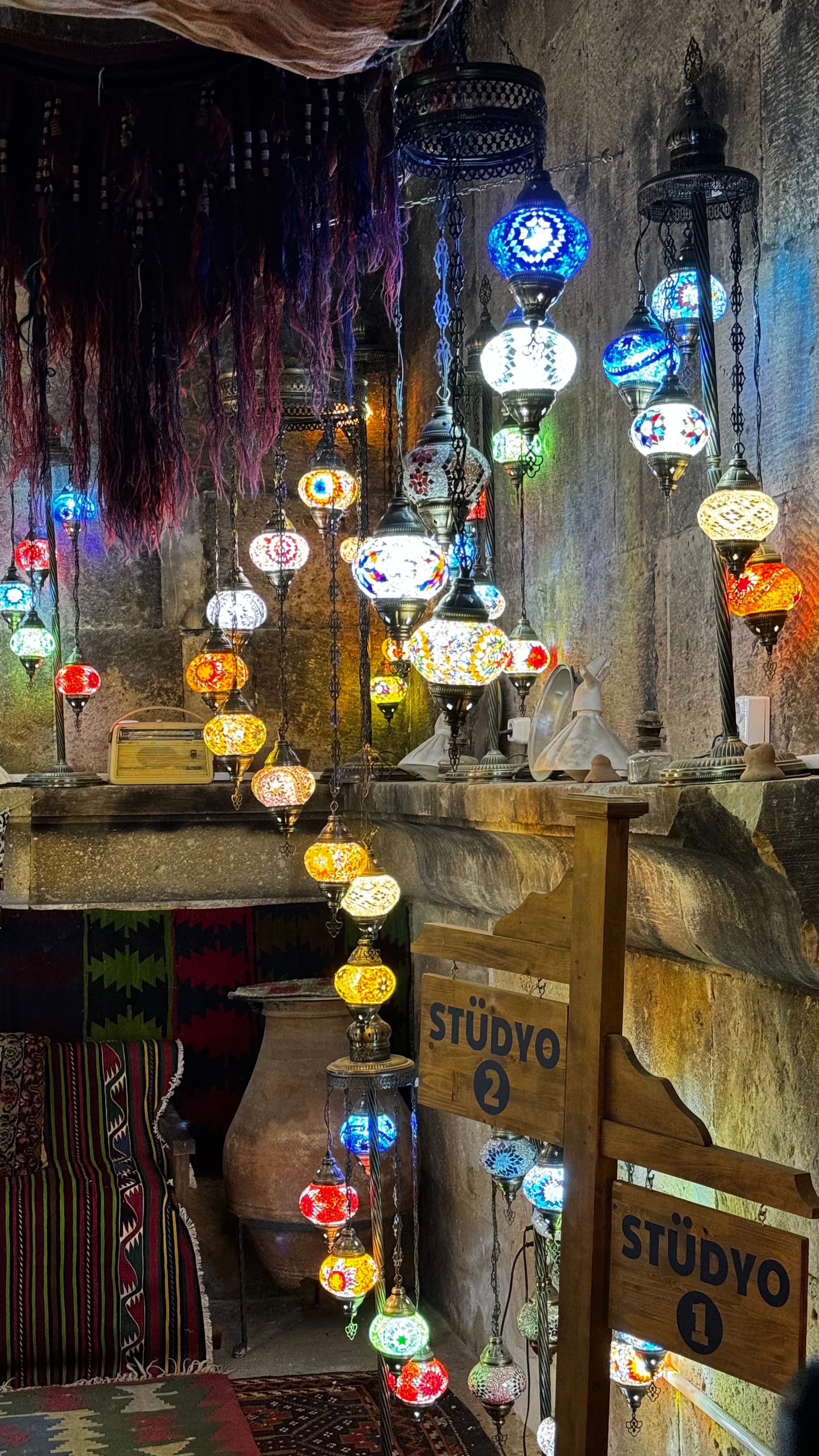
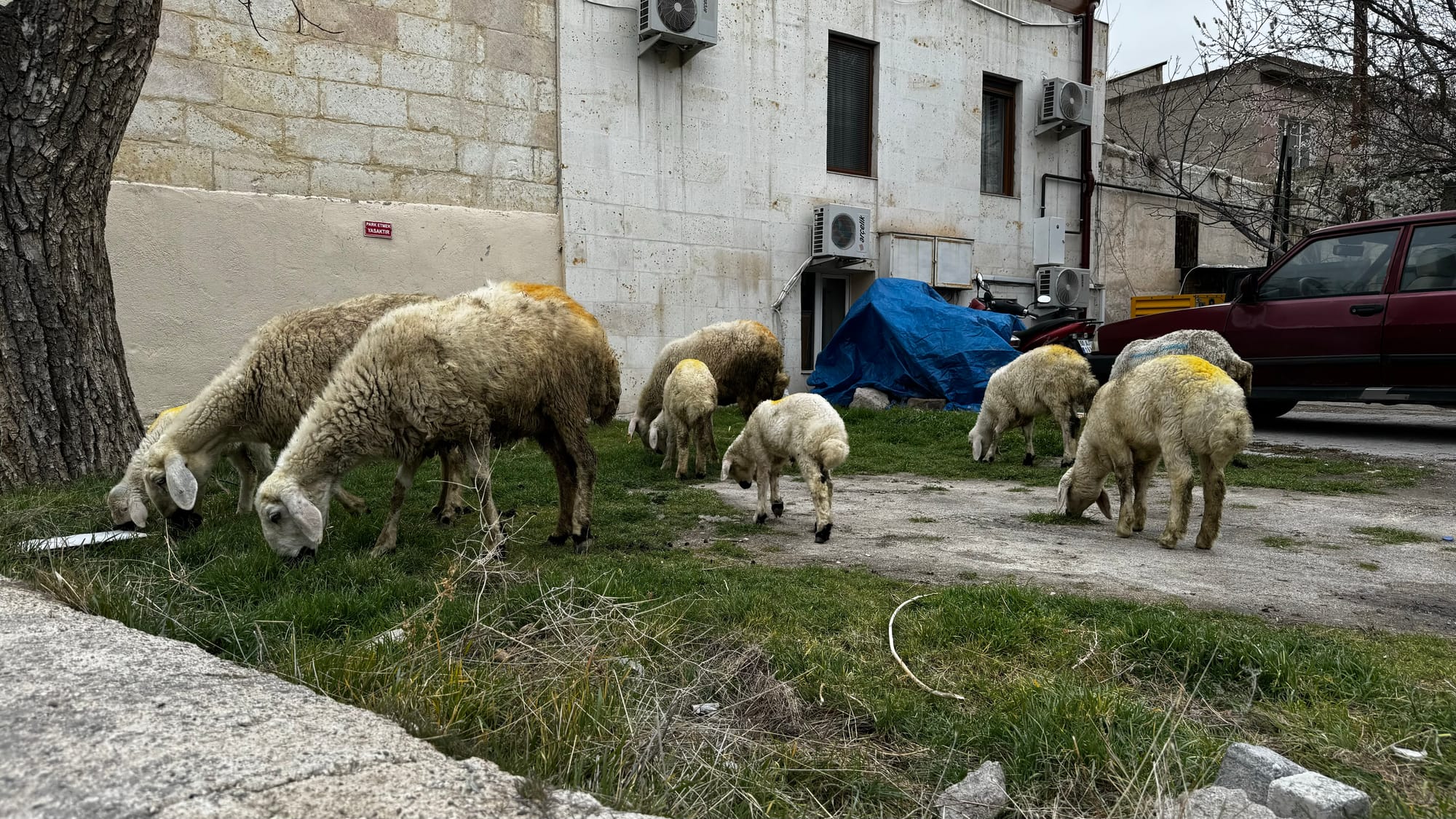
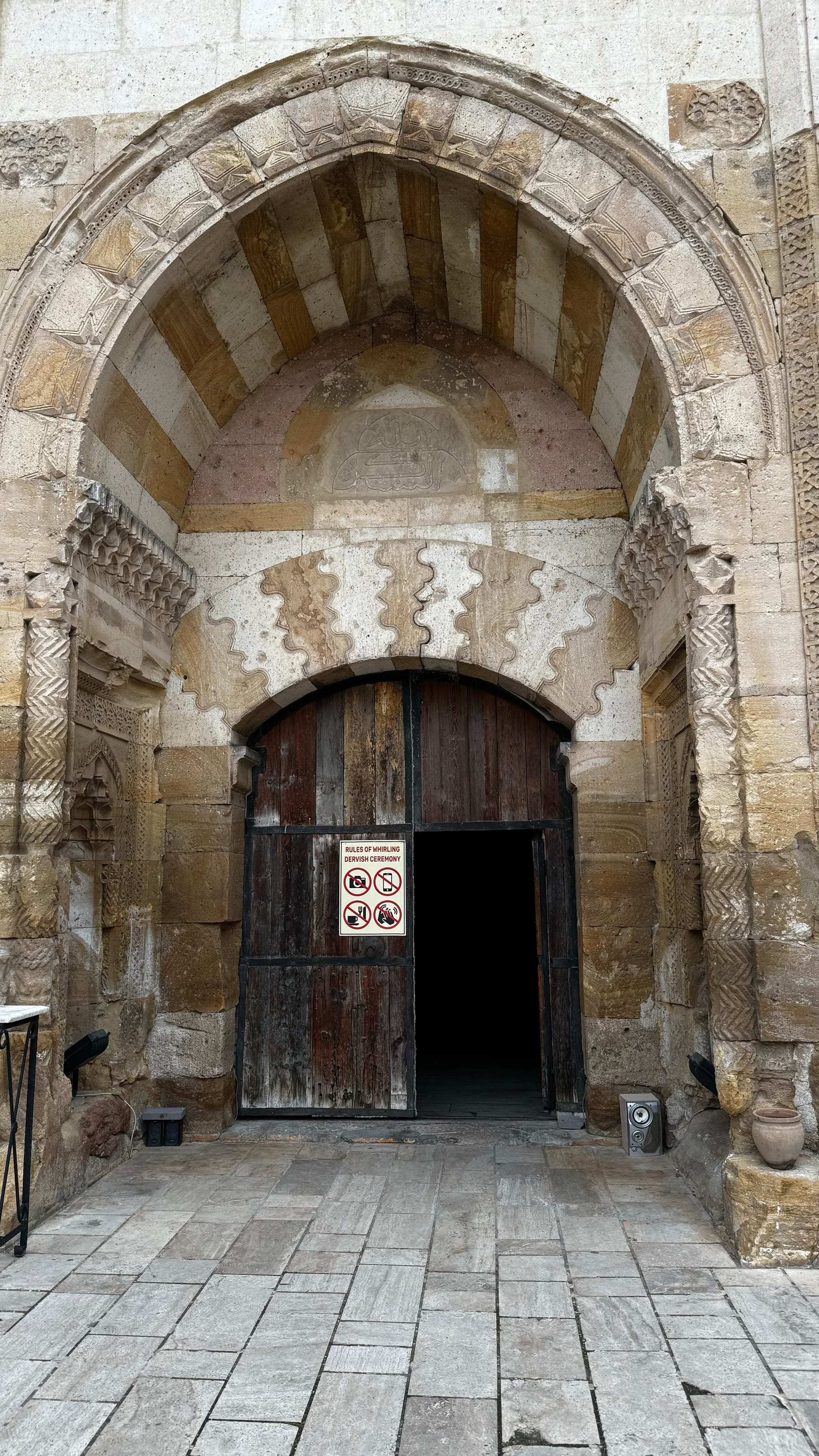
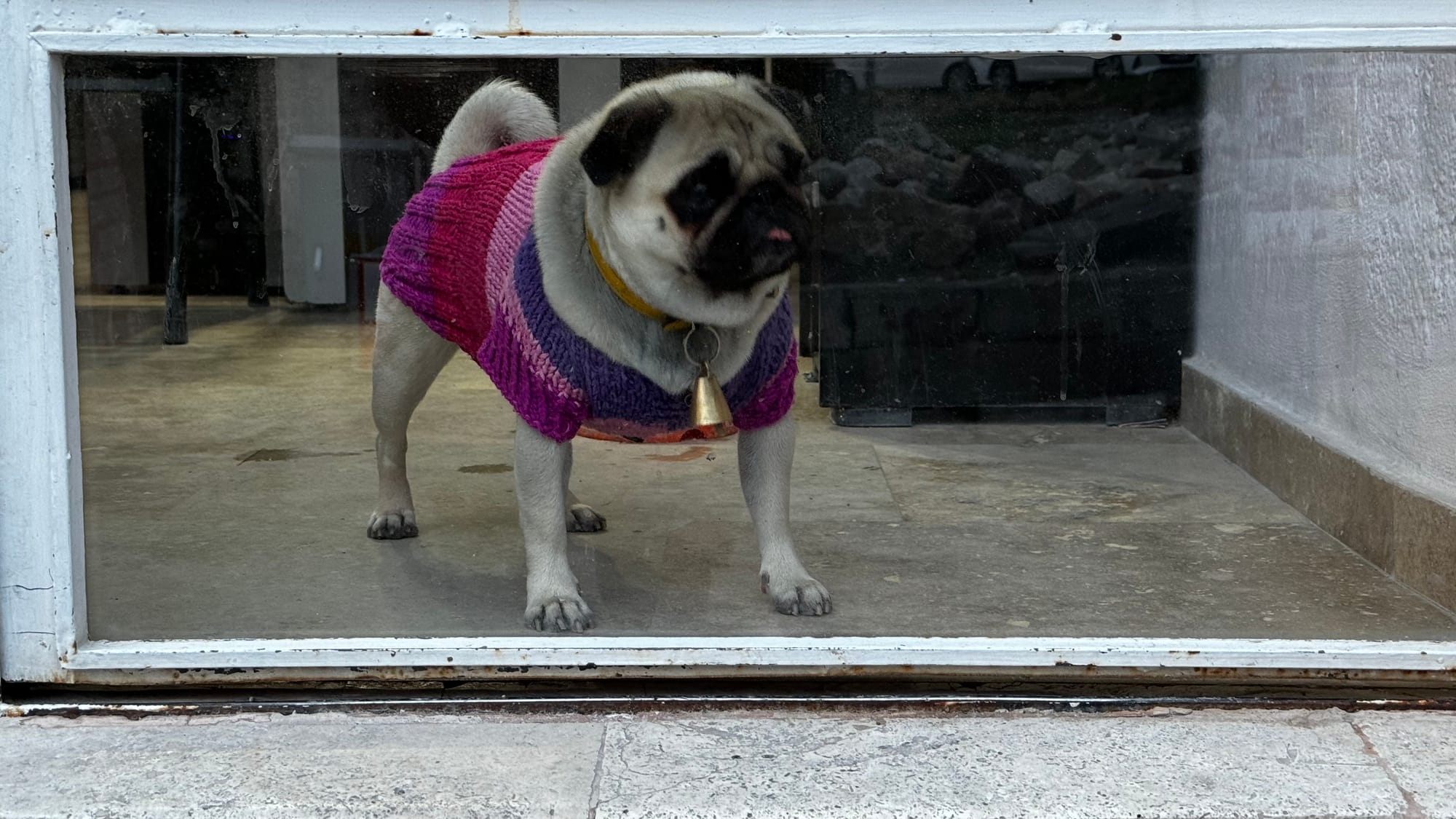
The Whirling Dervishes religious ceremony. Local animals.
When we came, we weren't sure about doing the balloon rides which are a big highlight of the area. They seemed too touristy and not worth it. But in the excitement of the environment, we changed our mind and decided to book a ride for the final Thursday morning.
At 5 AM on Thursday, we were picked up and taken to the balloon, which was already filling up with air. We watched and then piled on into the basket—a much bigger balloon than I've been on before with 34 people on board!
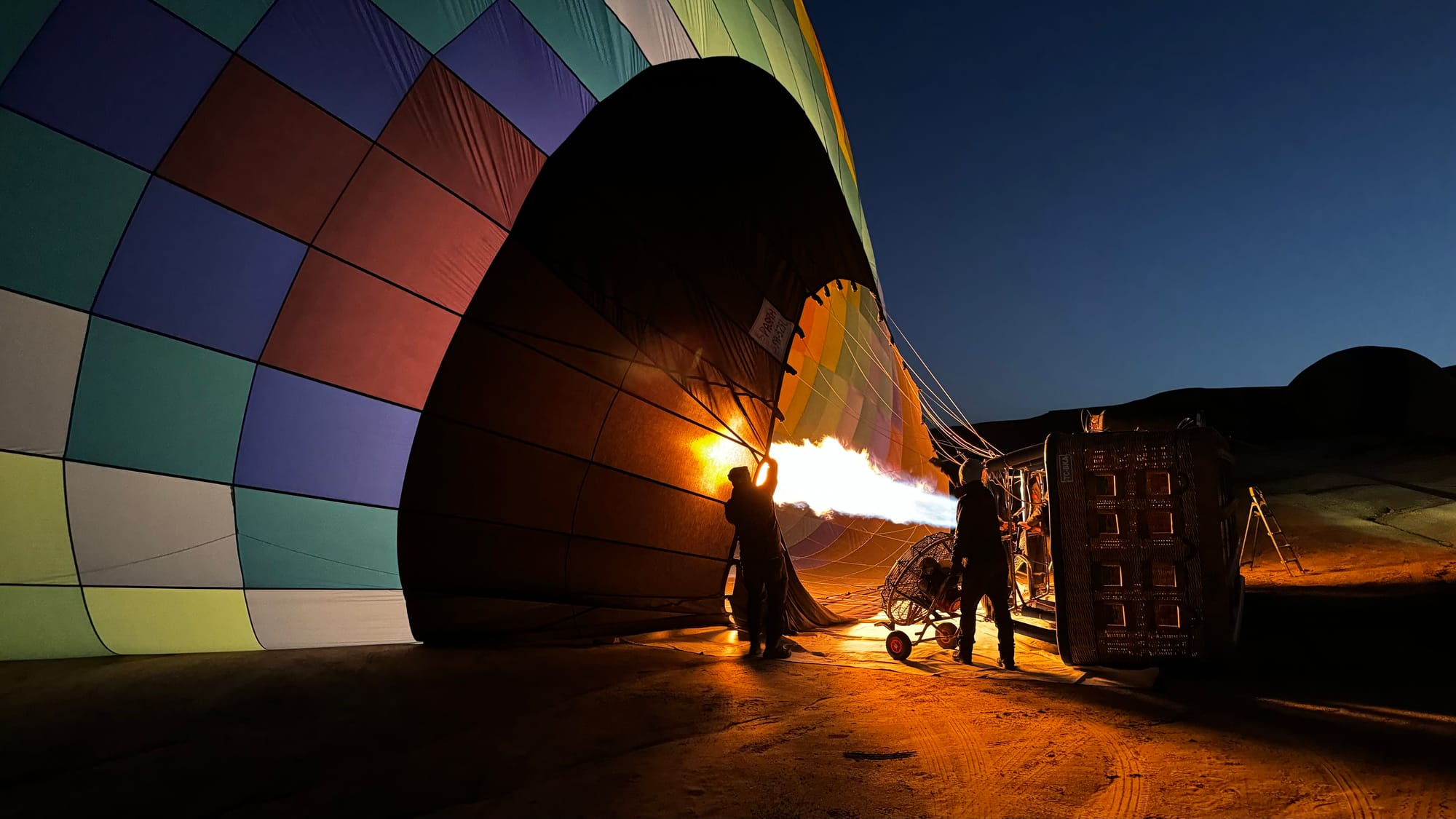
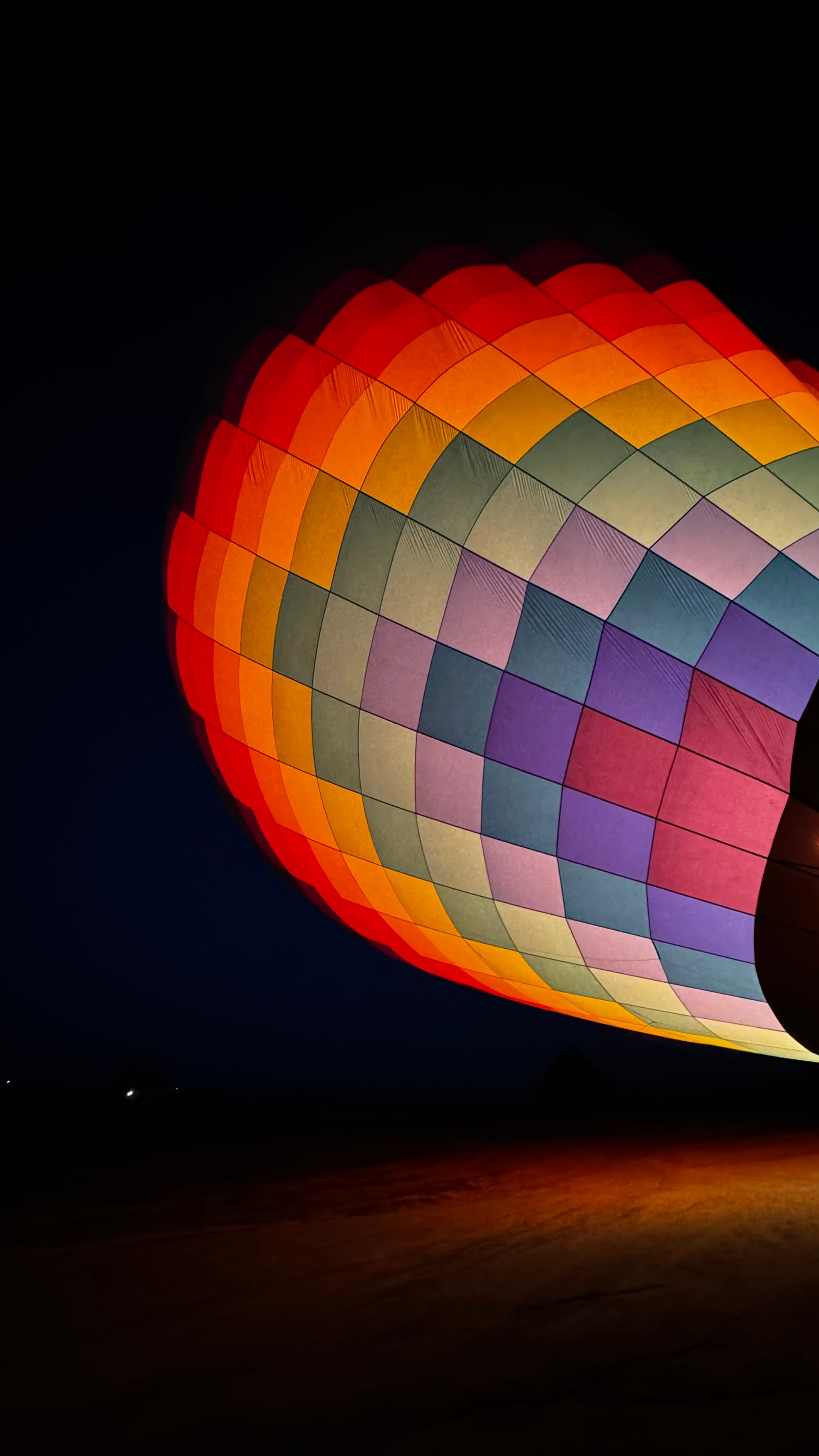
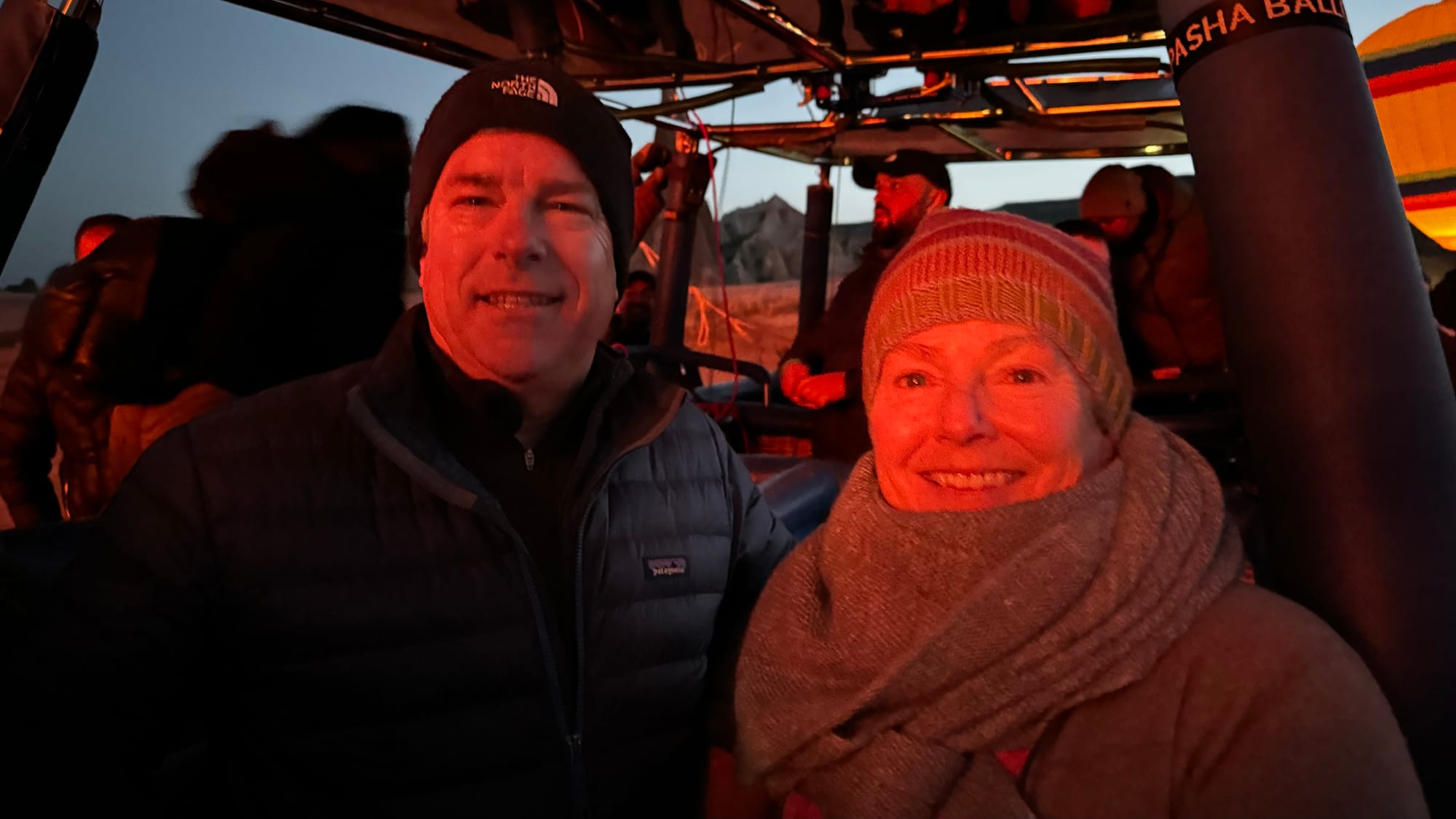
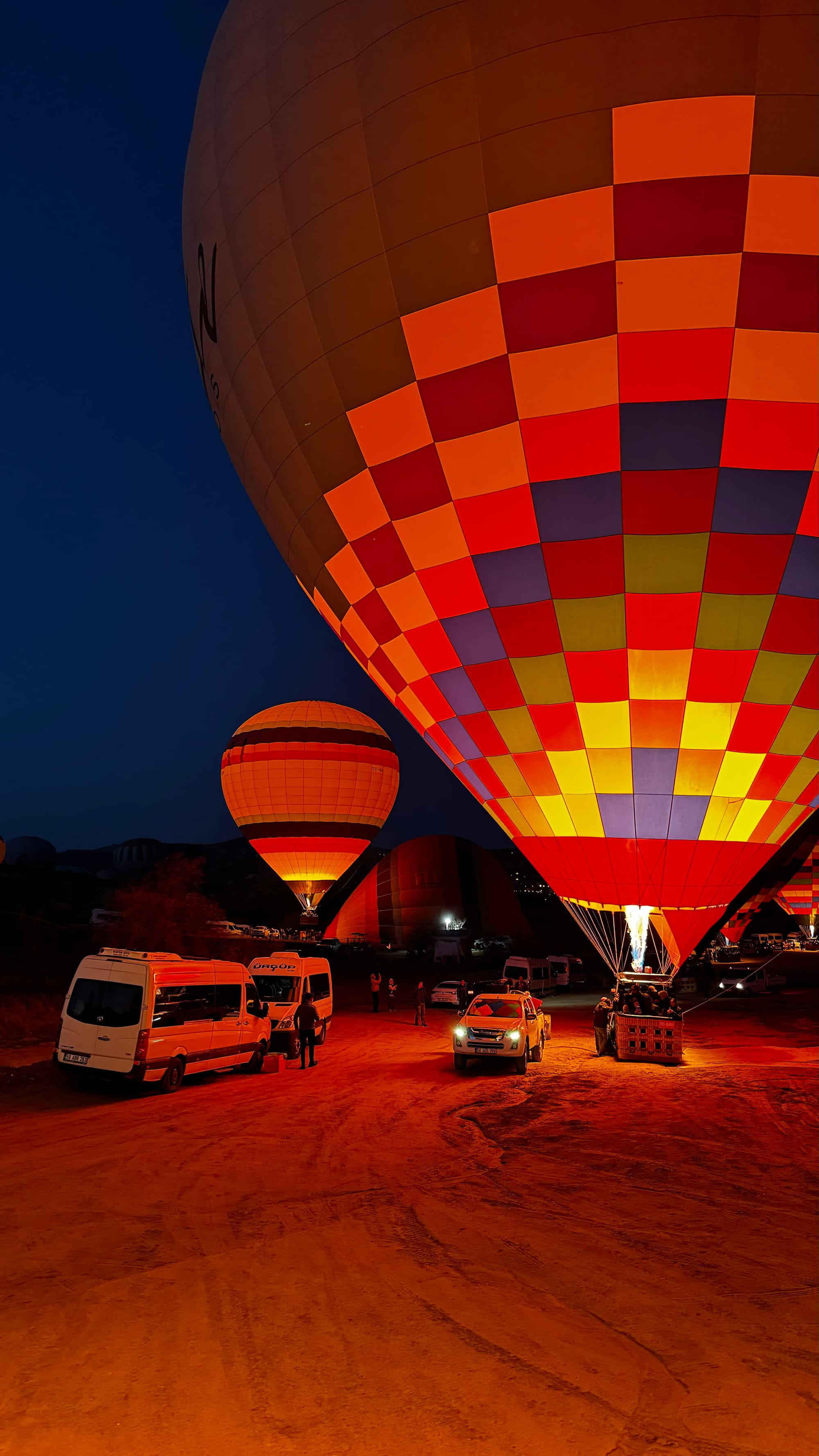
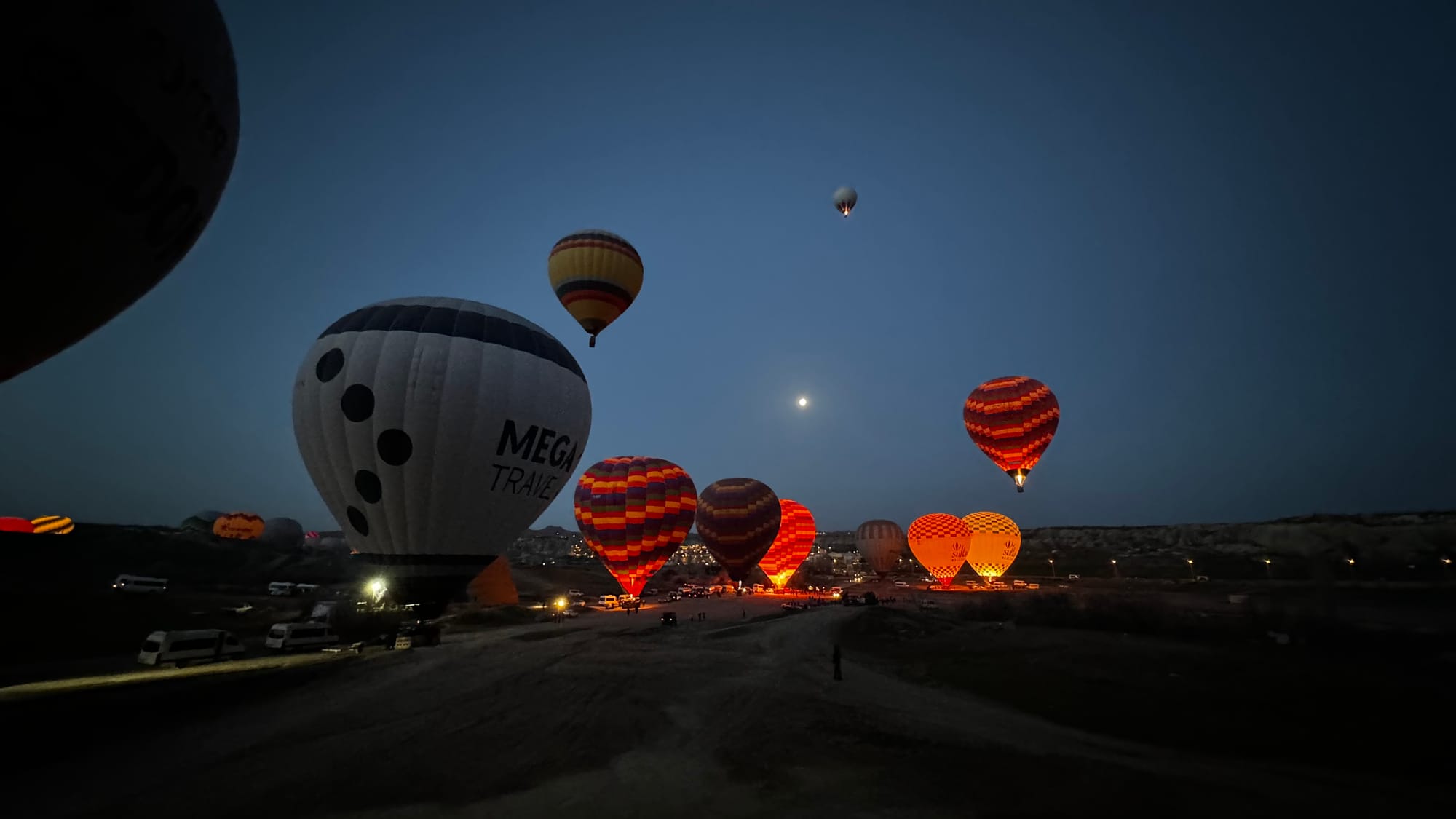
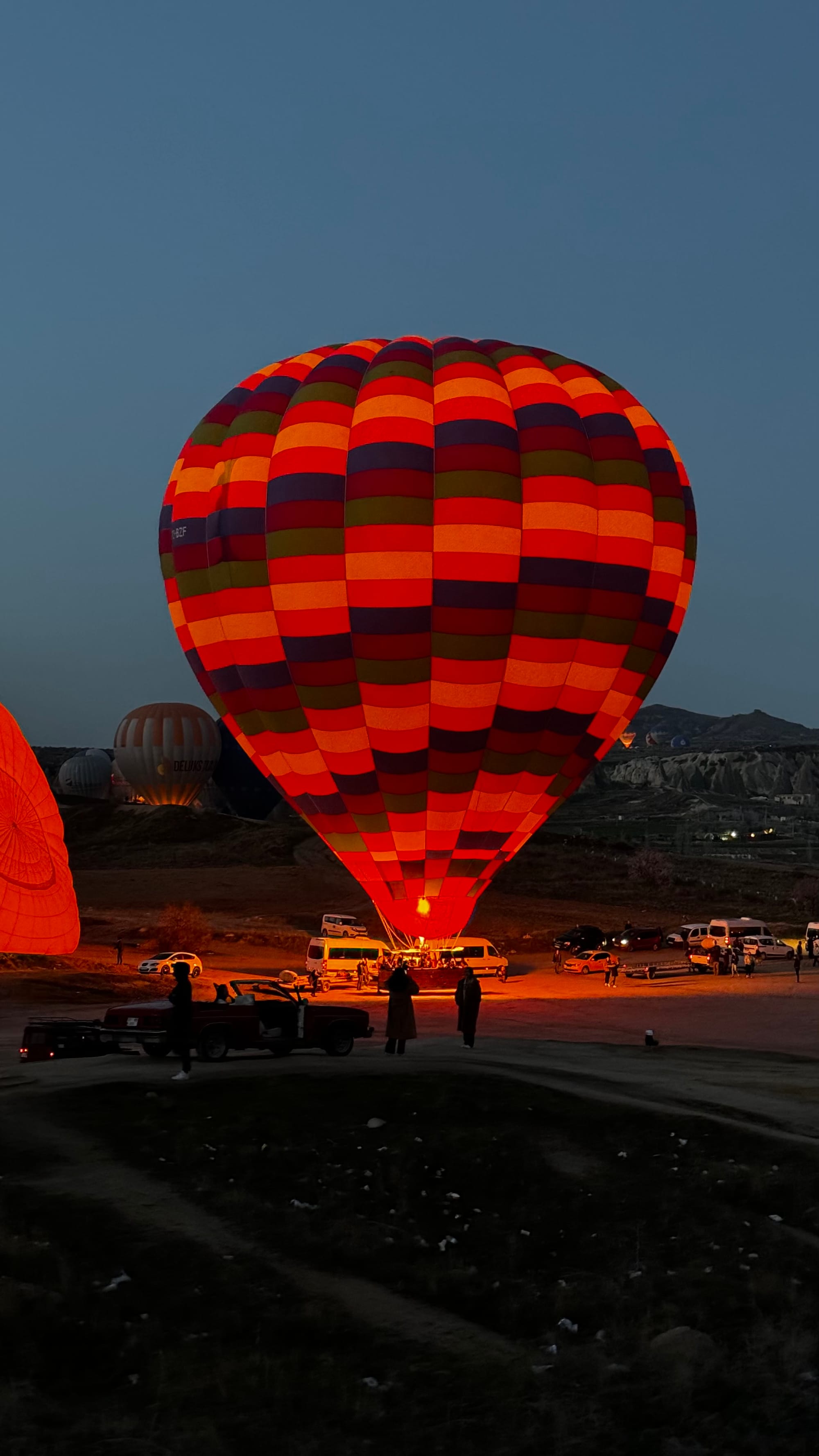
Balloons taking off.
What a magical experience. There are a few things I've done that have absolutely lived up to the hype, and this was one of them. It's not just that the environment is good to see from the air (it is); it's the sheer scale of the operation and the number of other balloons that are flying with you – we weren't sure just how many were in the air. Still, given in one photo I counted almost 100 other balloons, estimates of around 200 didn't seem unreasonable at all. It's crazy to think that we were in the air with roughly another 3,000+ tourists. Despite all that, it was sensational, and if you ever go, it's a must-do, in my view.
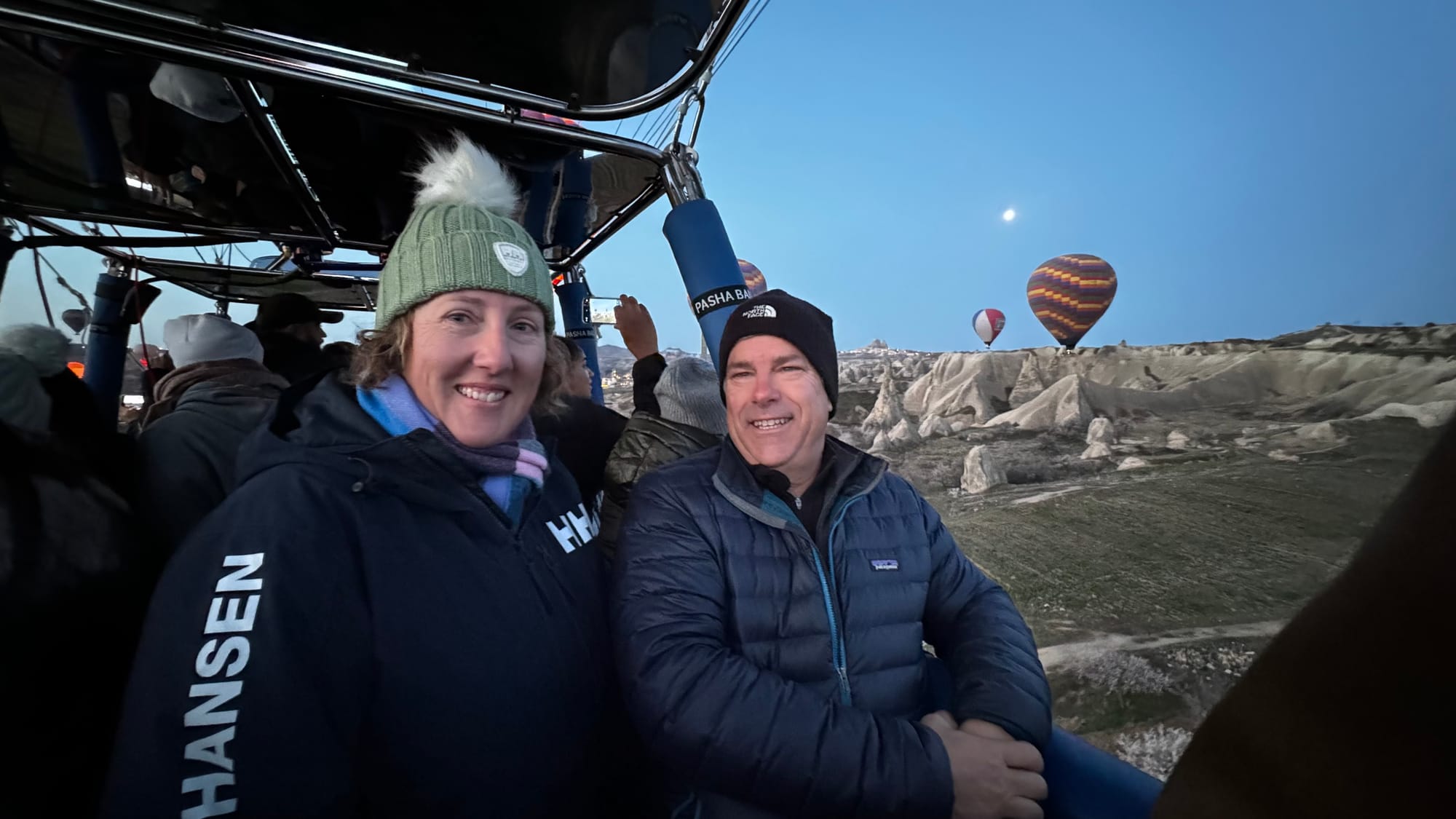
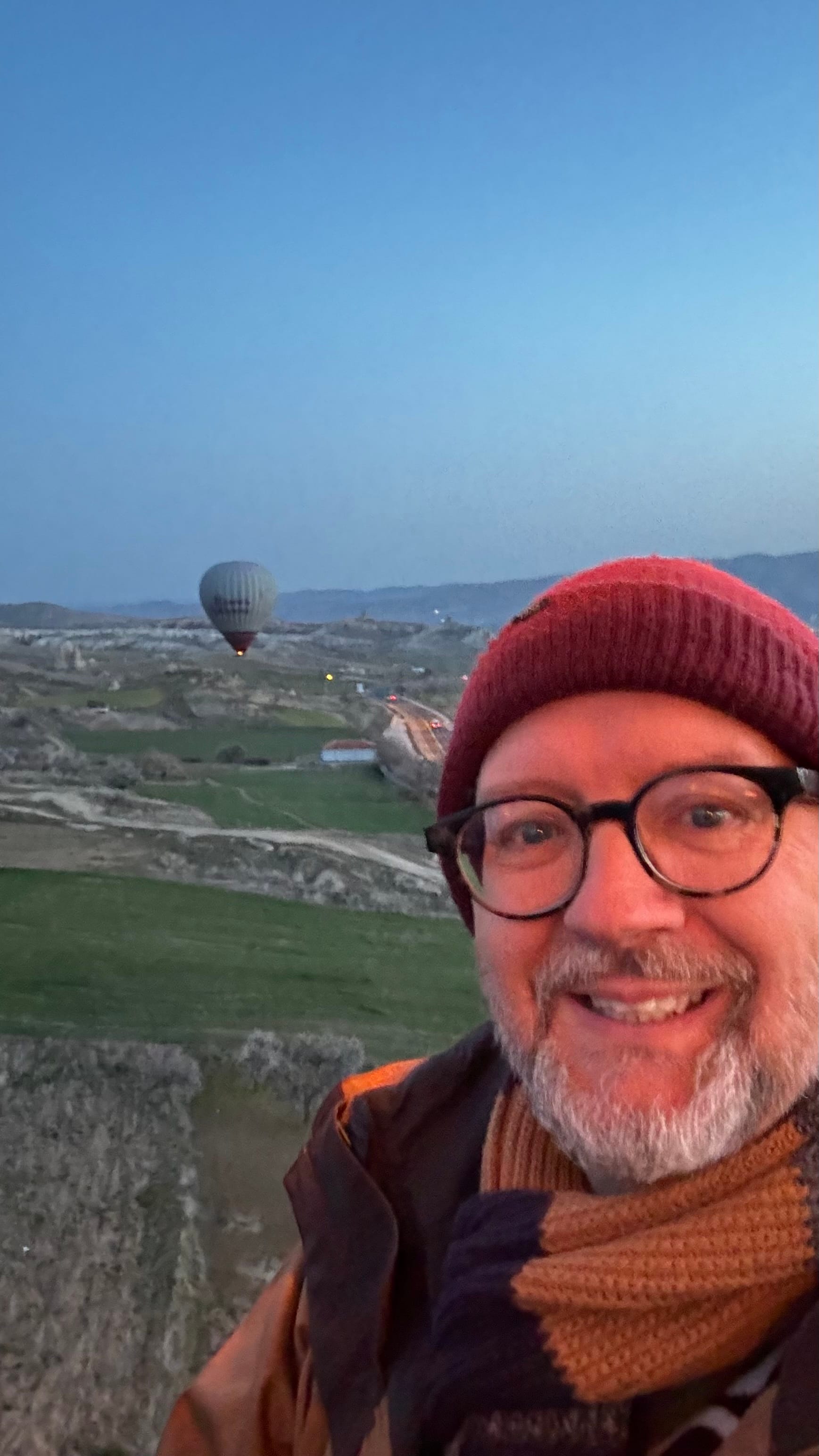
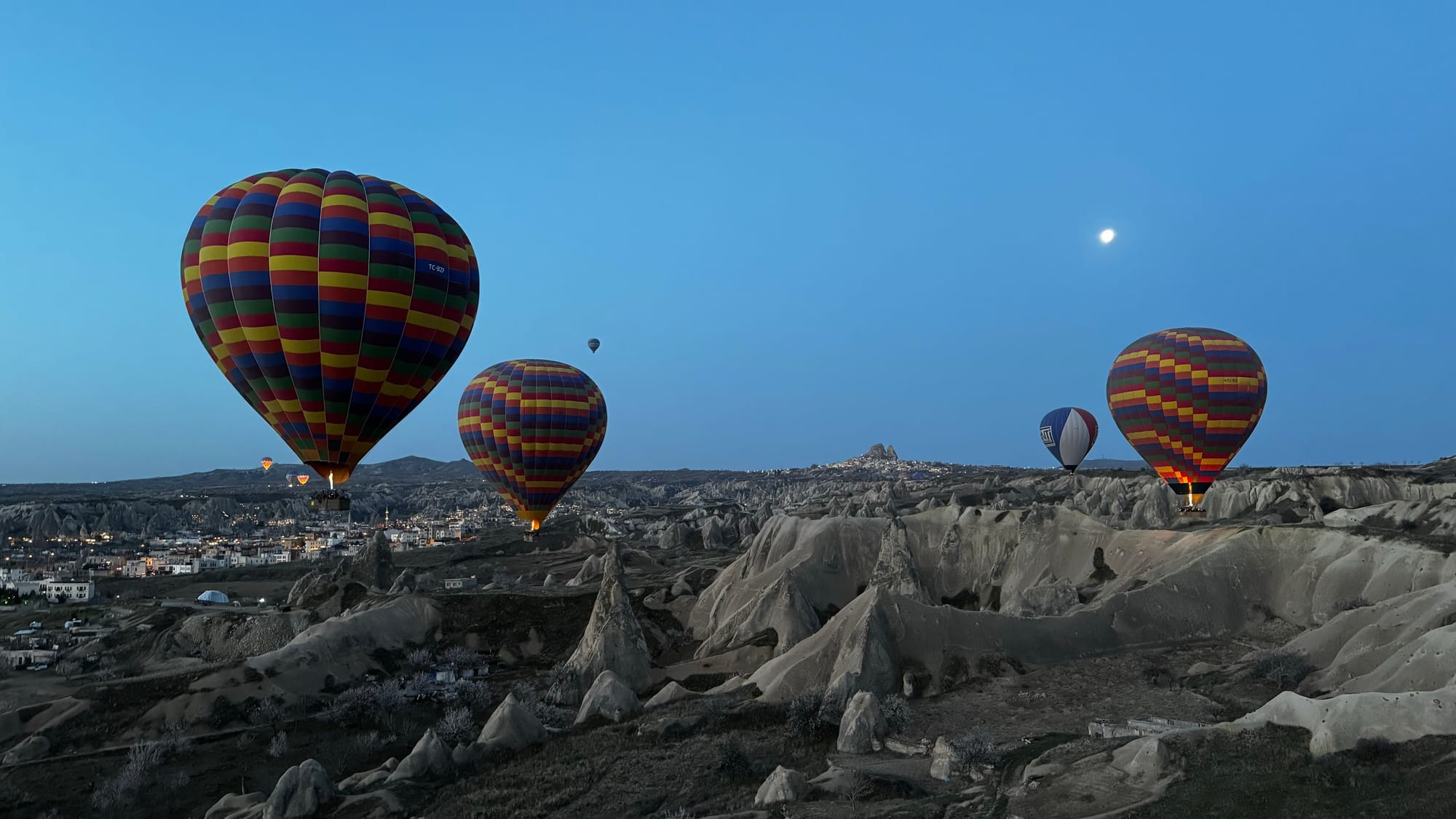
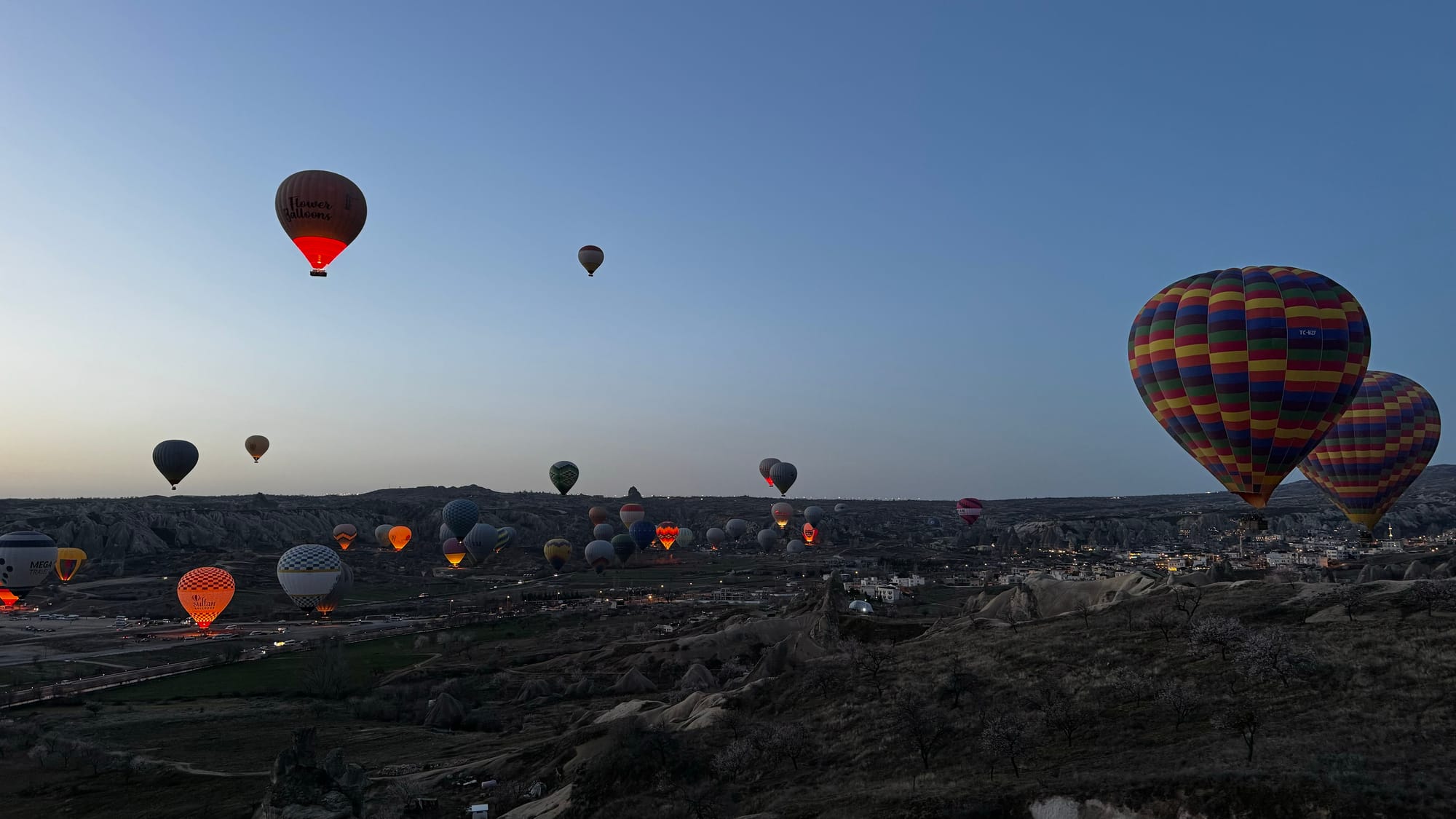
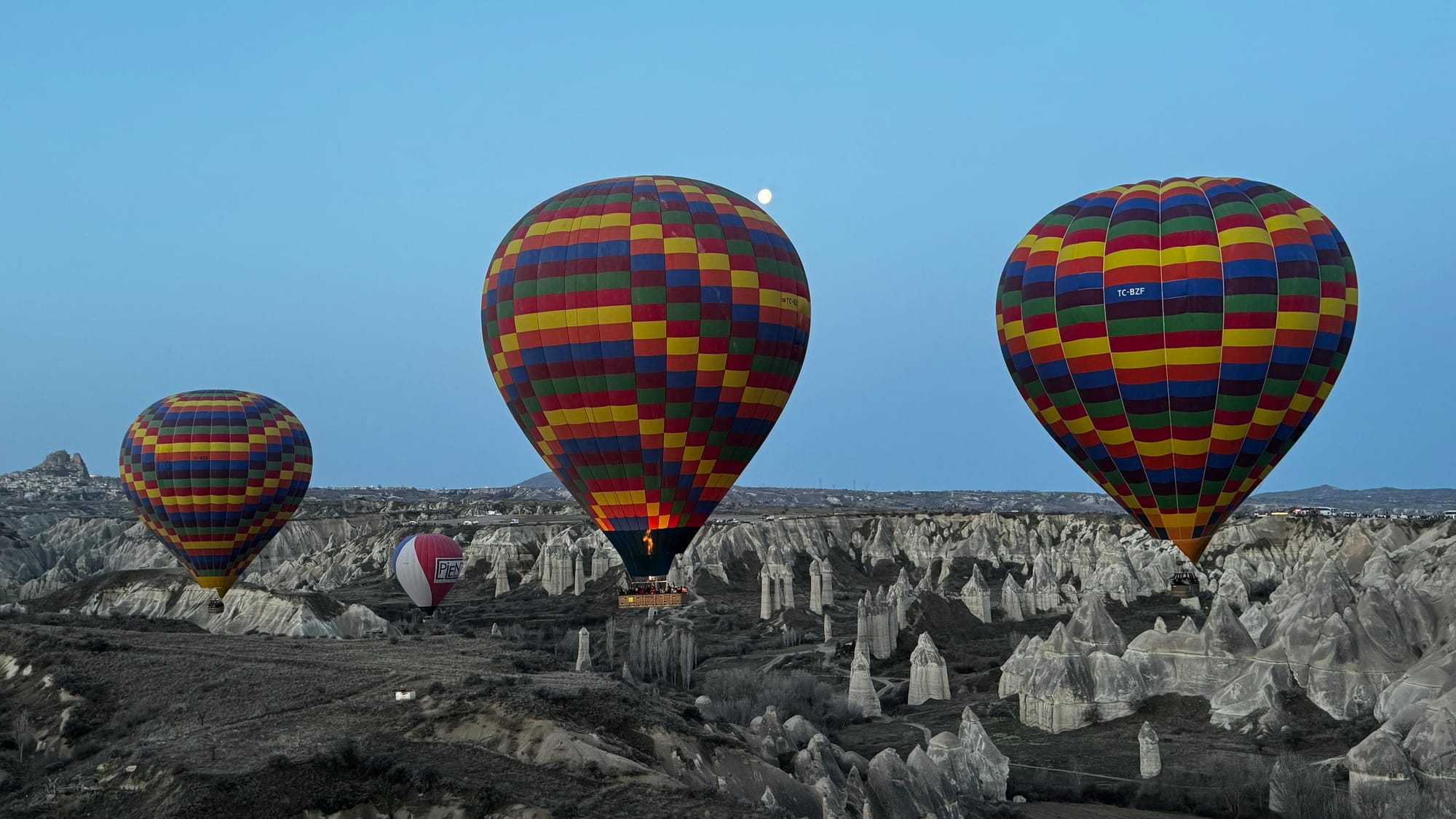
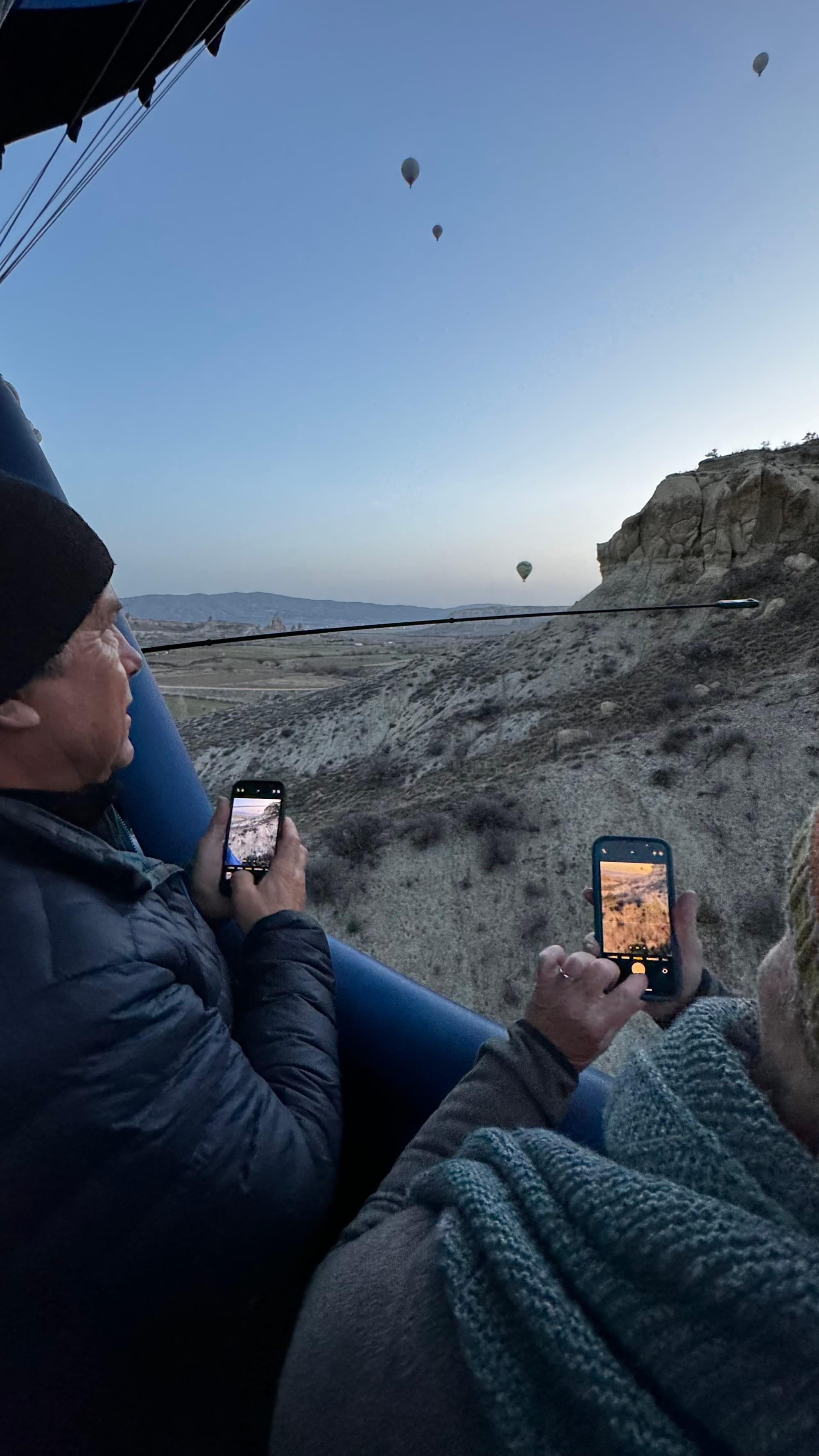
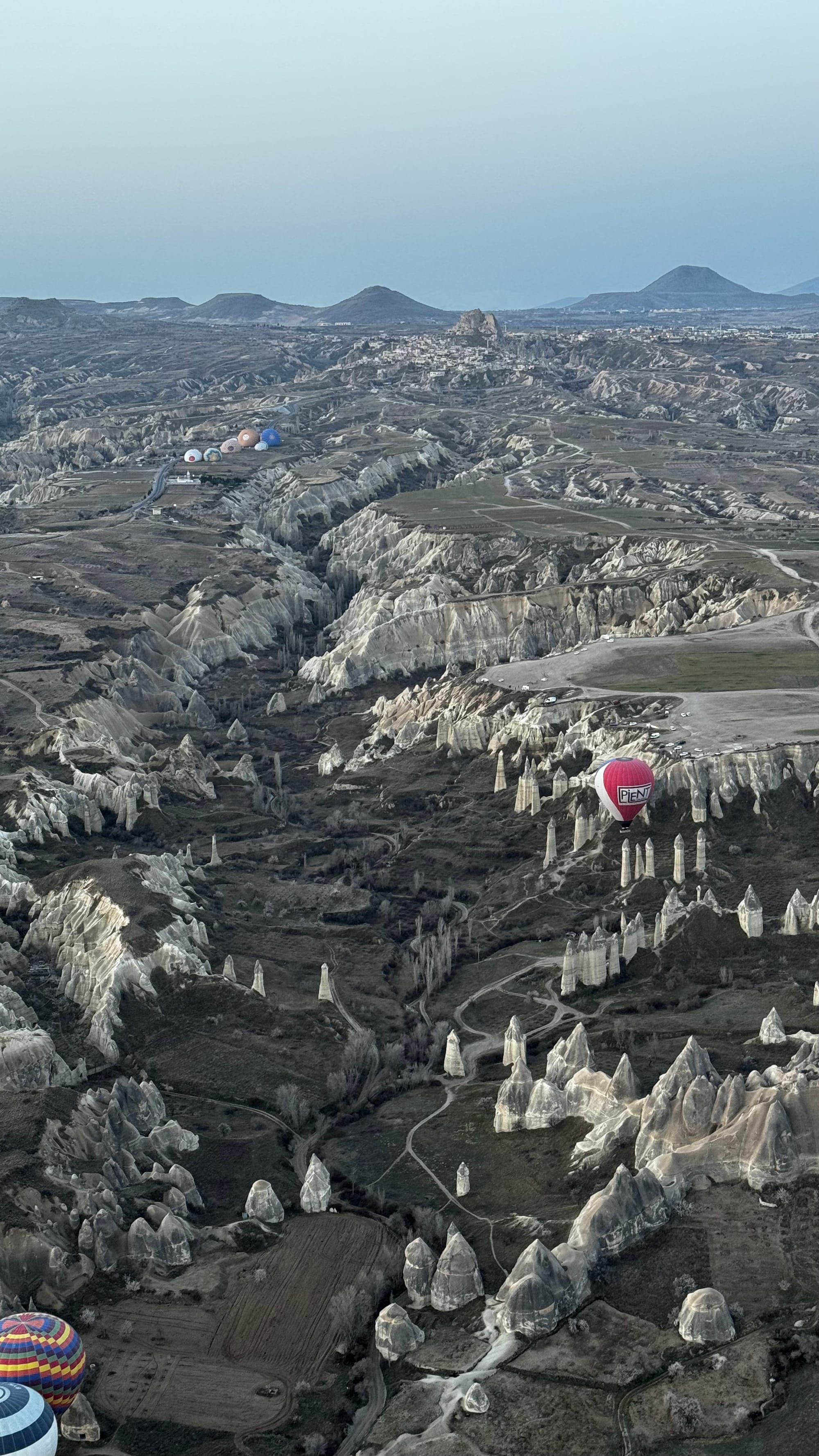
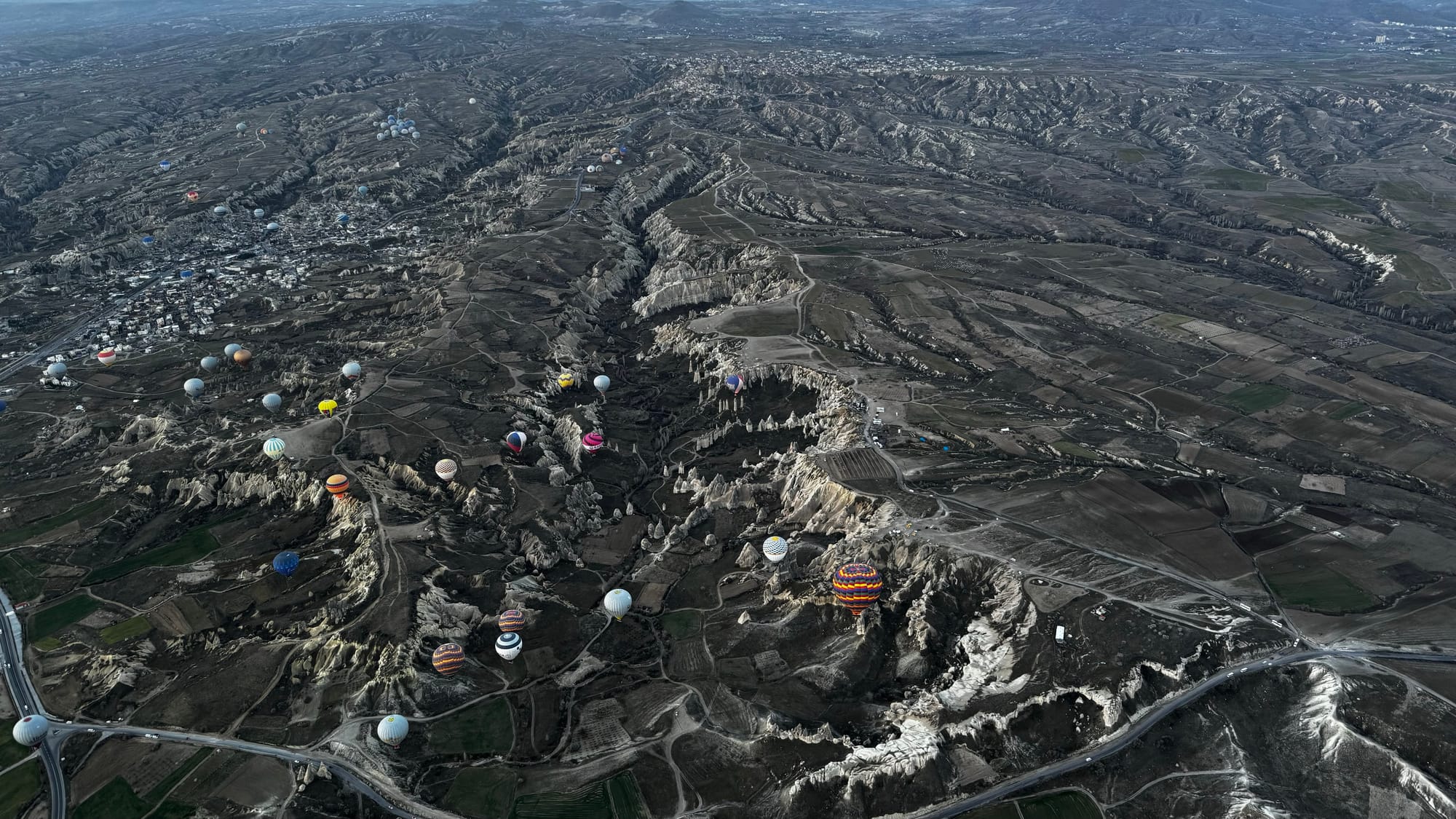
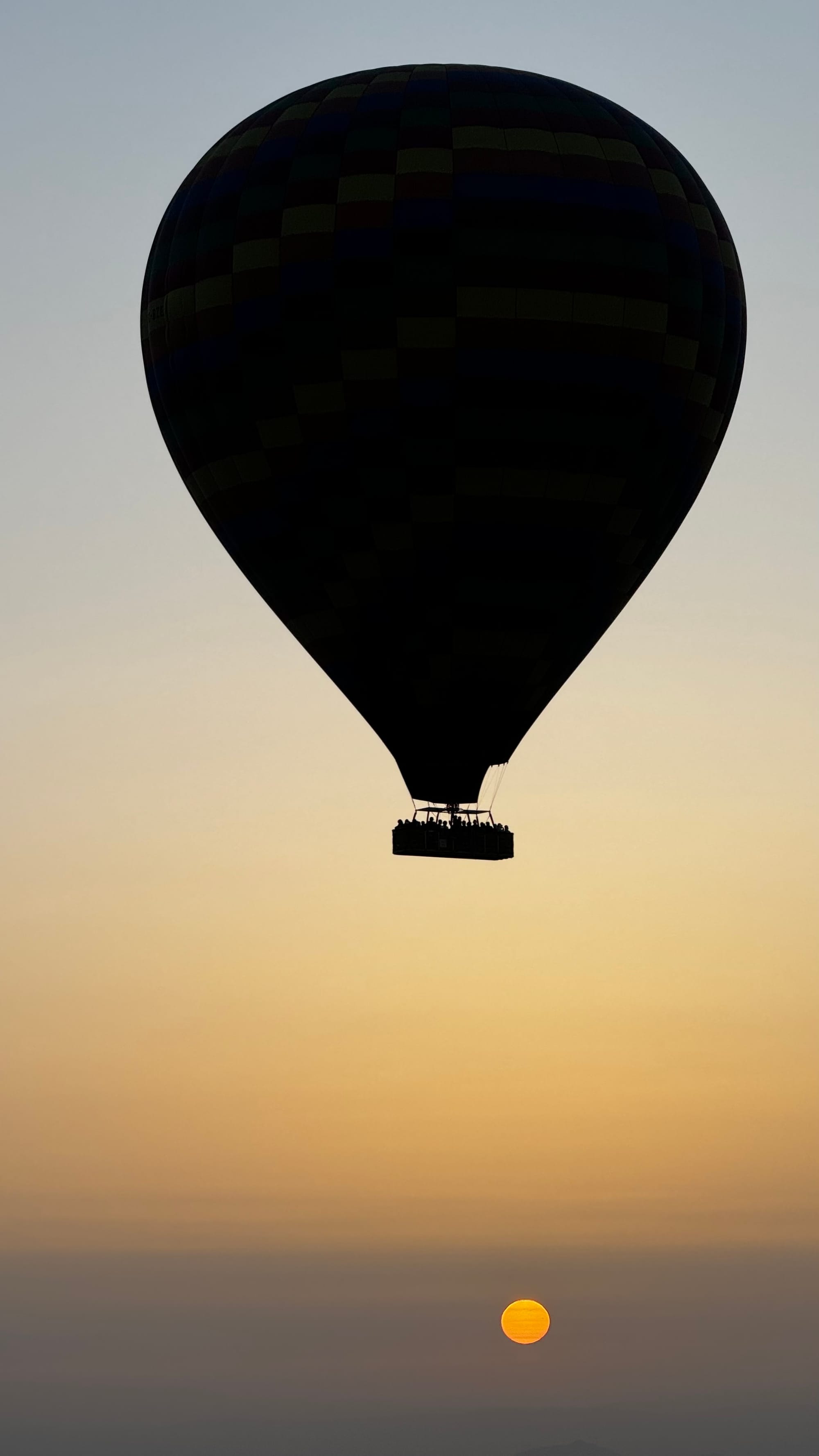
All aboard
With the balloon ride done and a final breakfast, it was time to hit the road again. We'd kept our plans flexible and decided the day before that we would go back to Pamukkale as it really is remarkable, and both Peter and Sarah had yet to experience it. It was a roughly seven-hour drive from Göreme to Pammukale, but we made good time again, thanks to the generally good roads everywhere. The interior of Türkiye is very agricultural, and it was largely endless farmland everywhere.
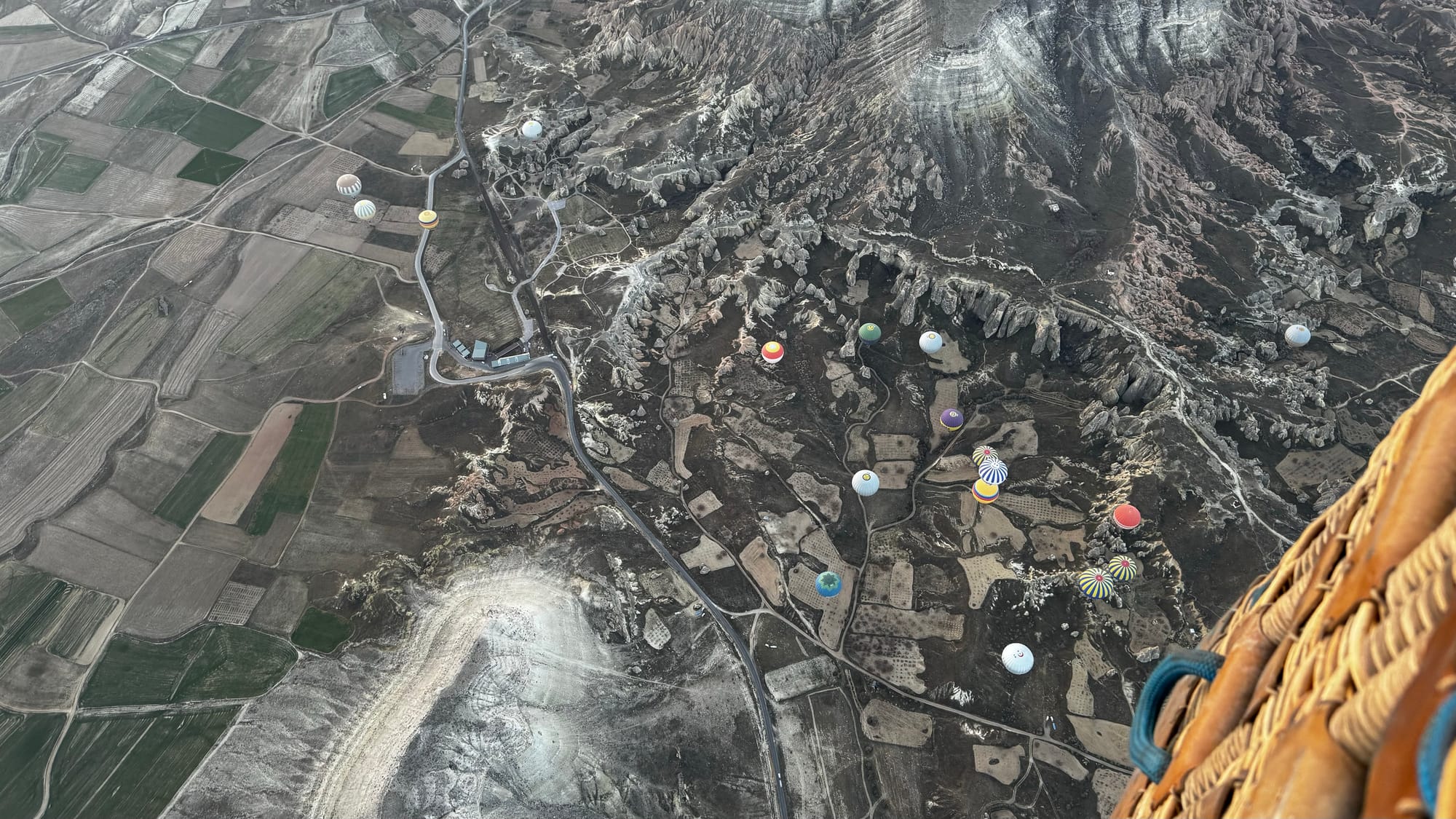
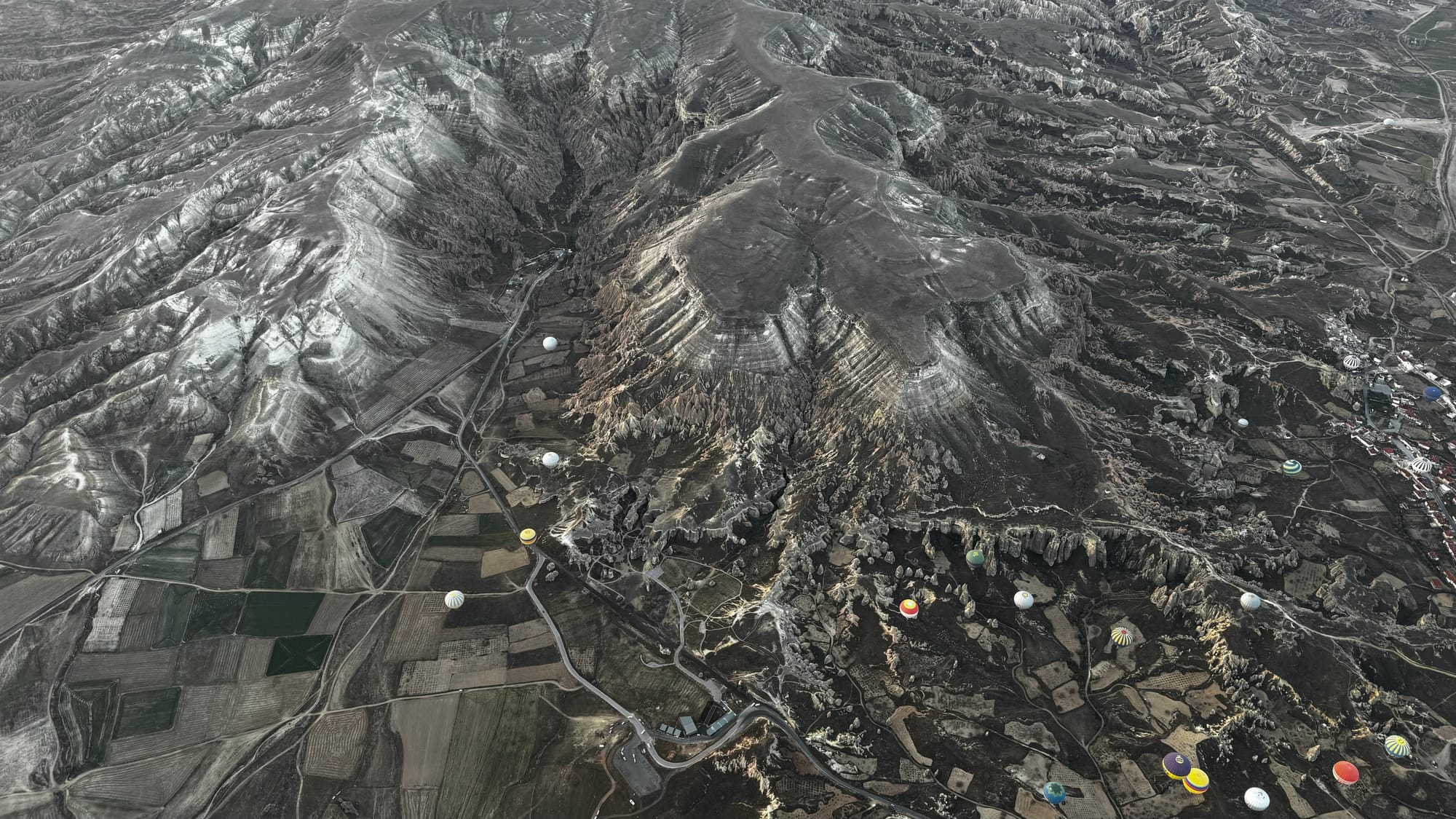

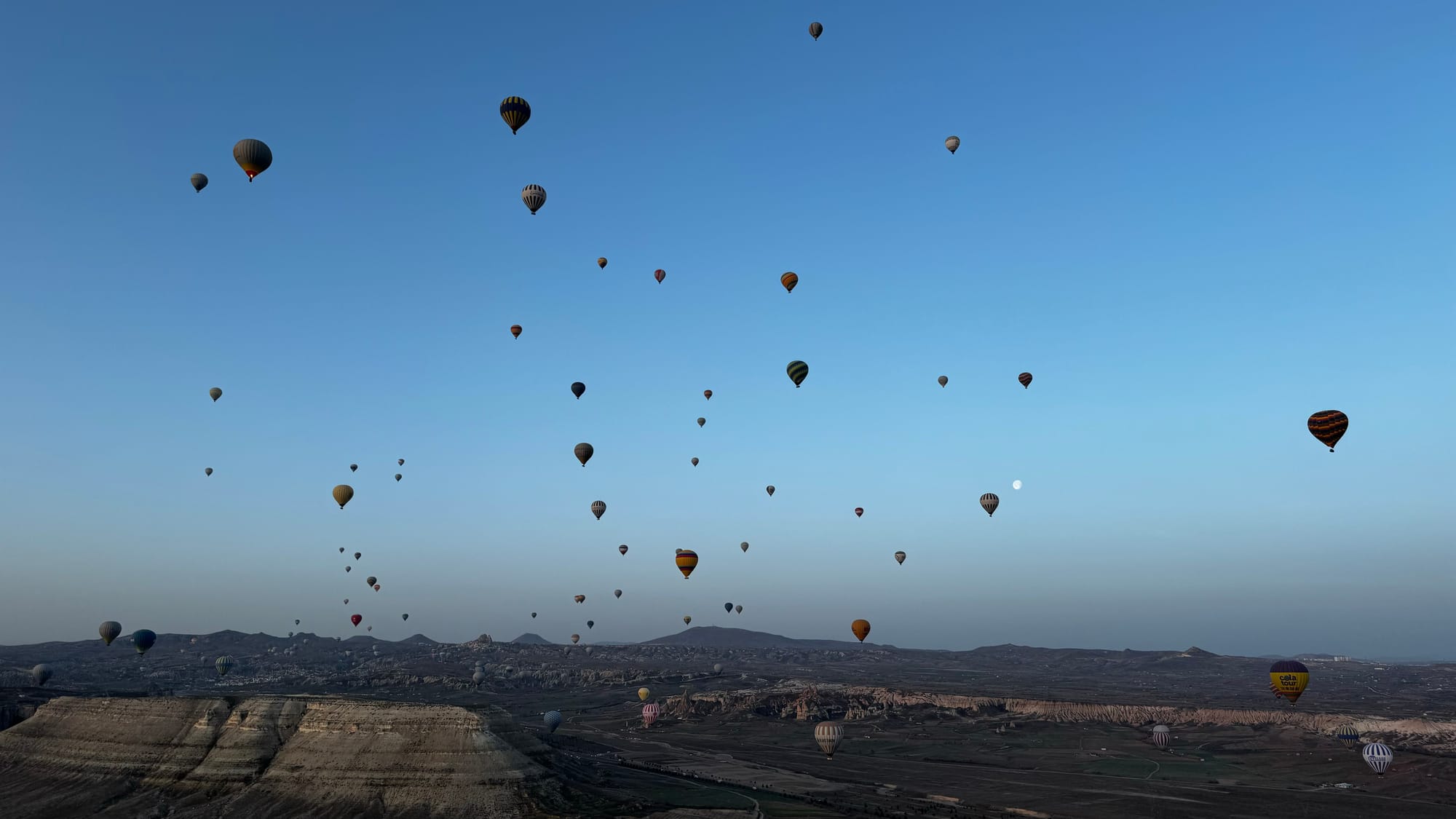
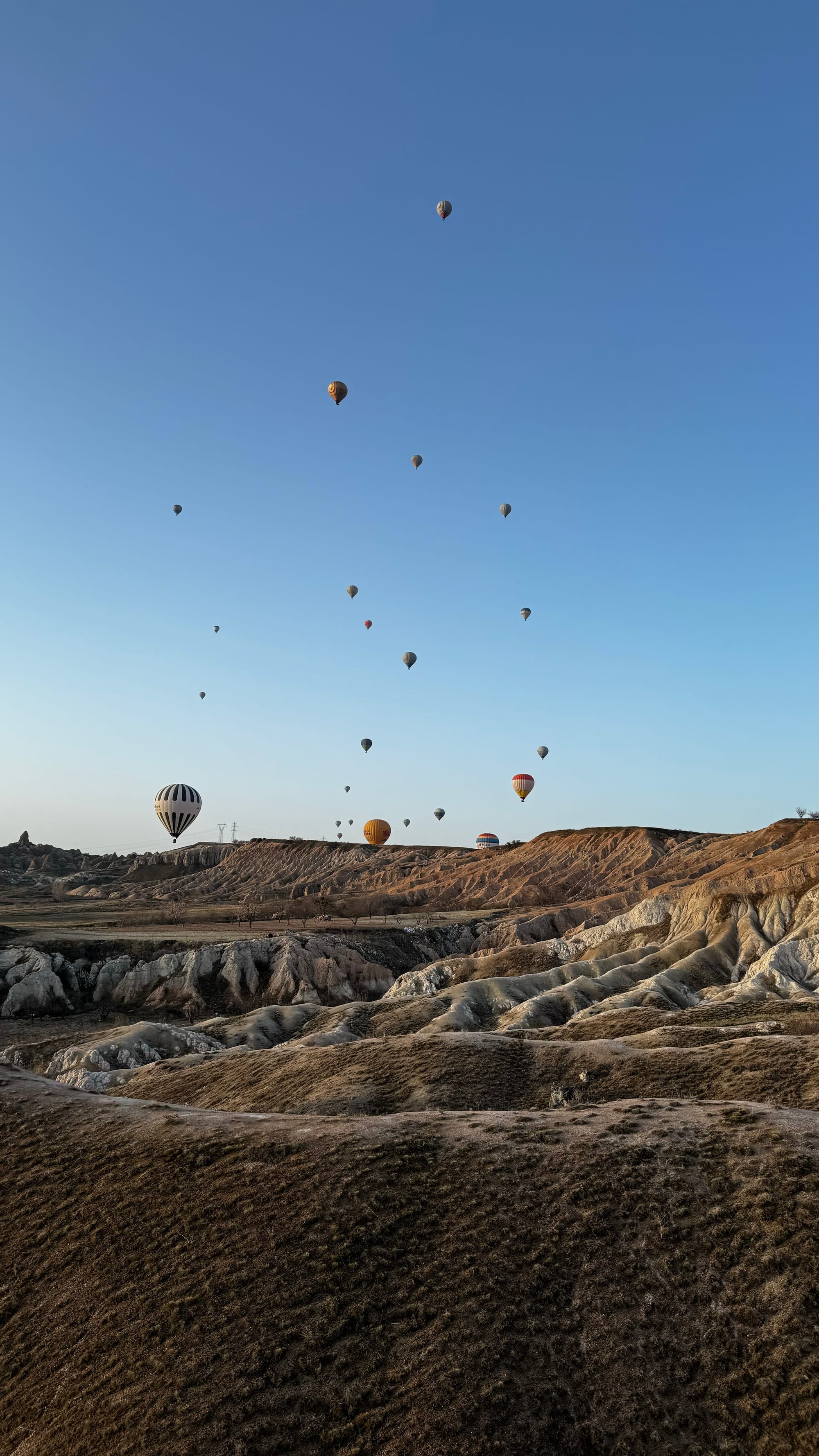
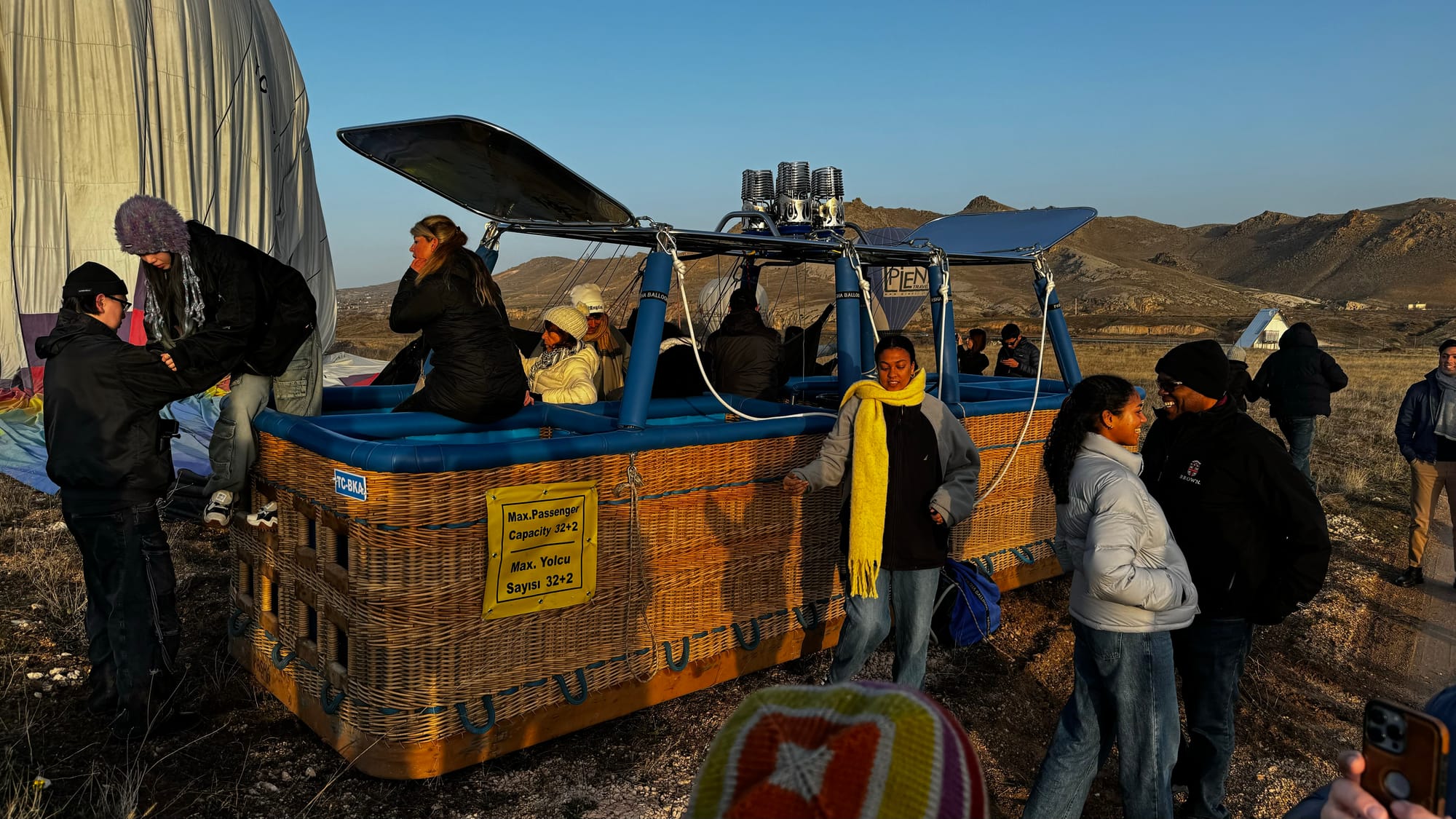
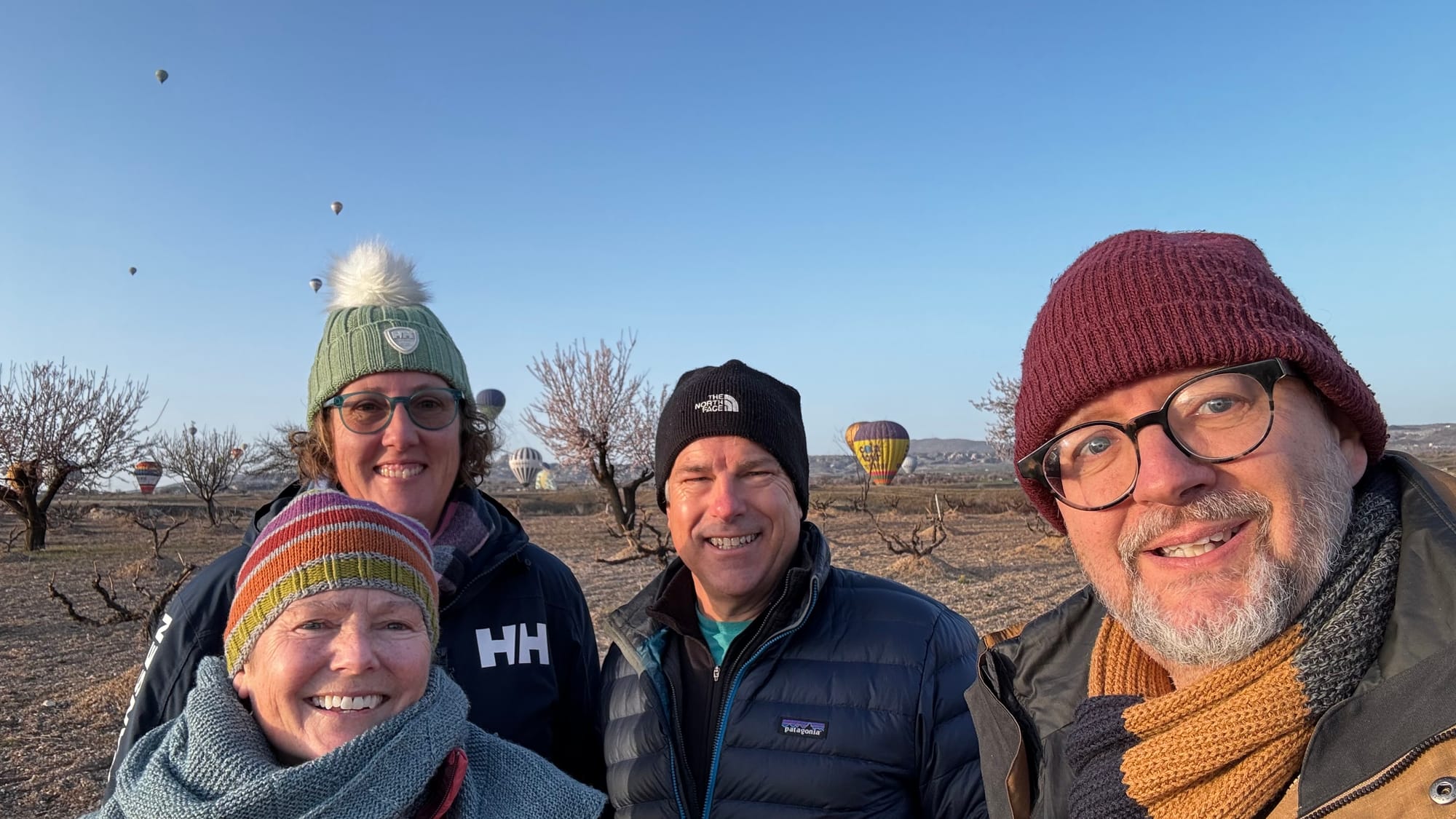
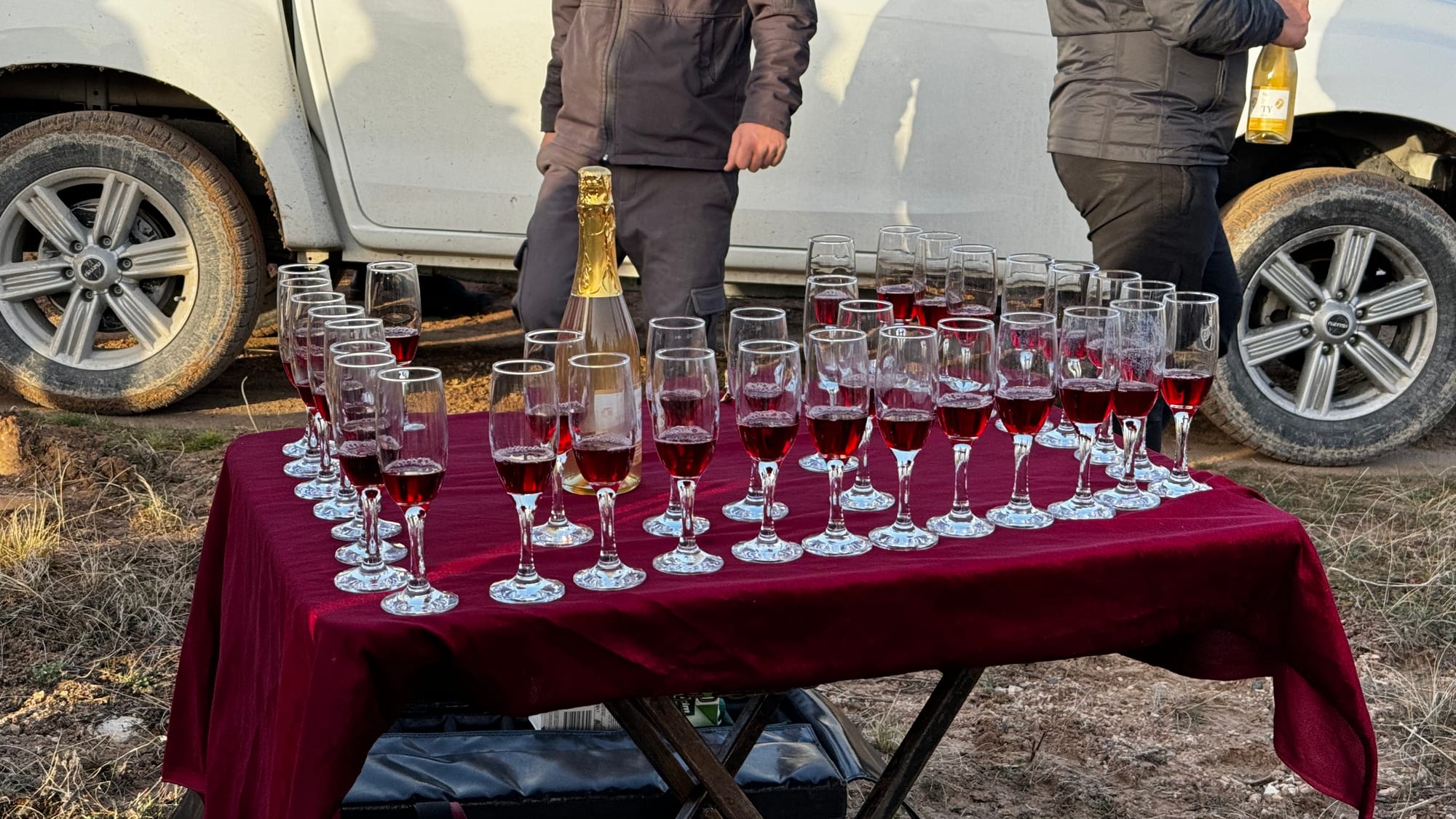
More scenes from the air and back on the ground again. Non-alcoholic champagne.
At Pammukale, we went for a walk, found a cocktail bar with the absolute worst cocktail I've ever had, and then collapsed into bed, exhausted after the early start.
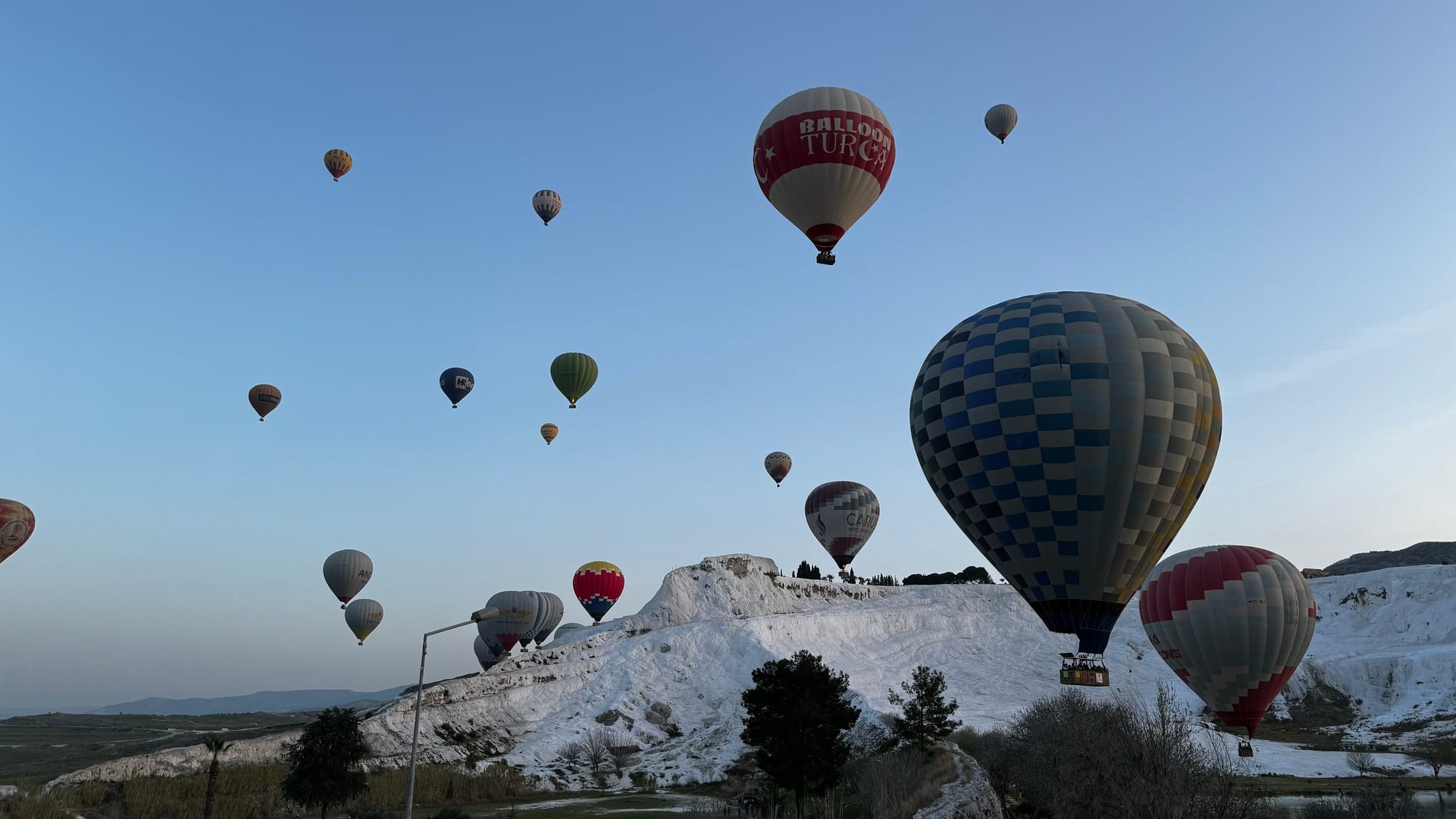
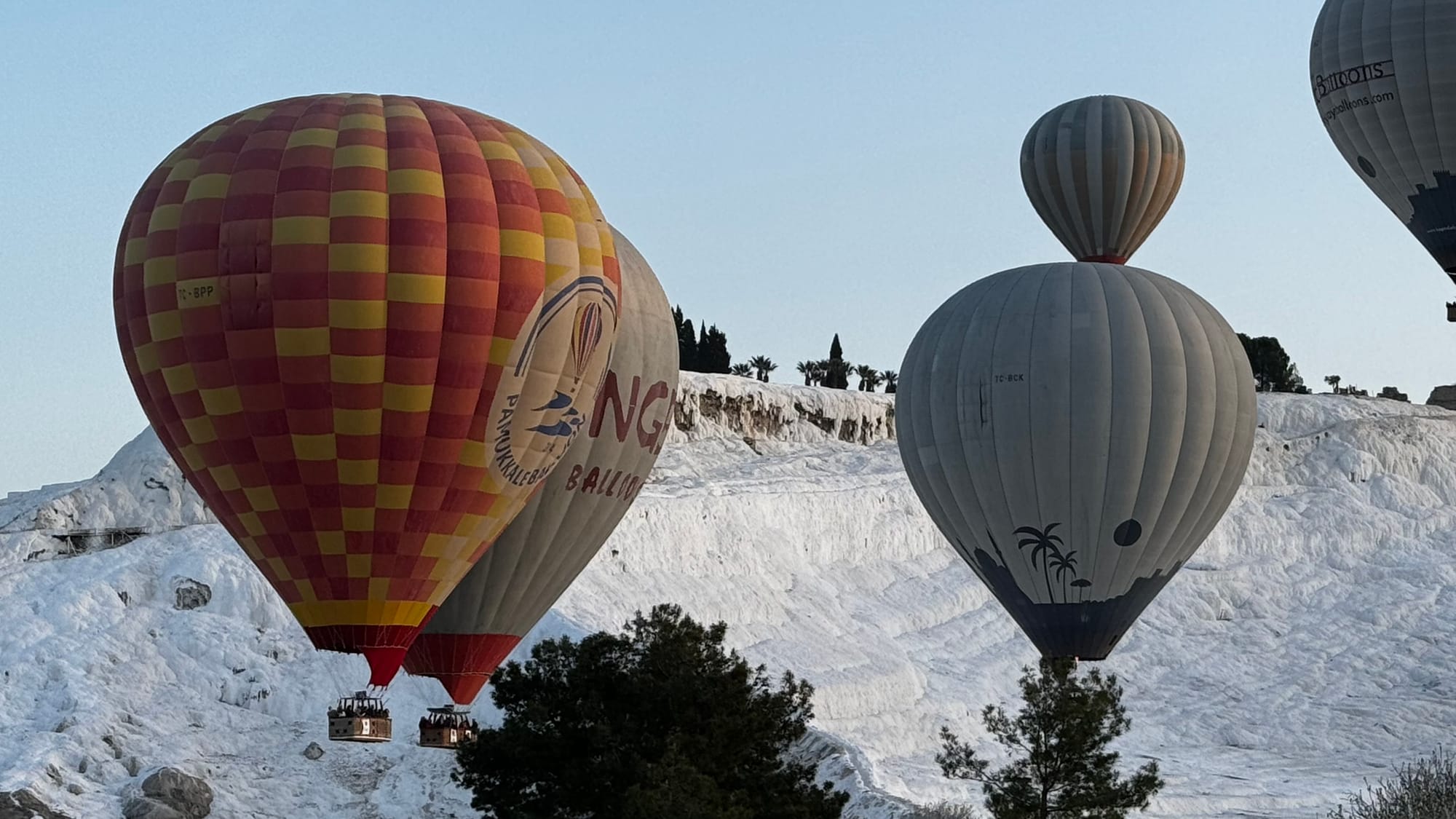
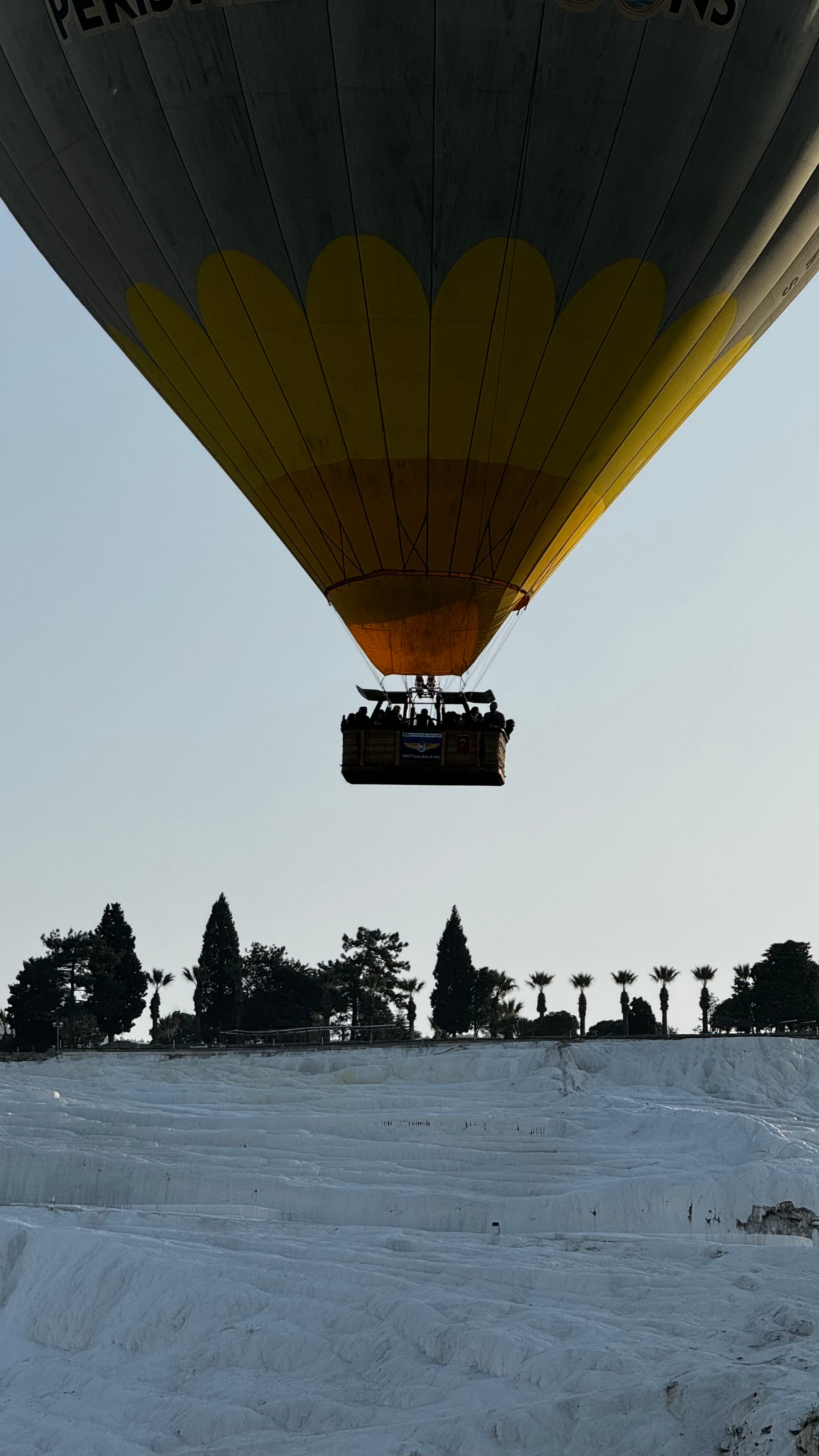
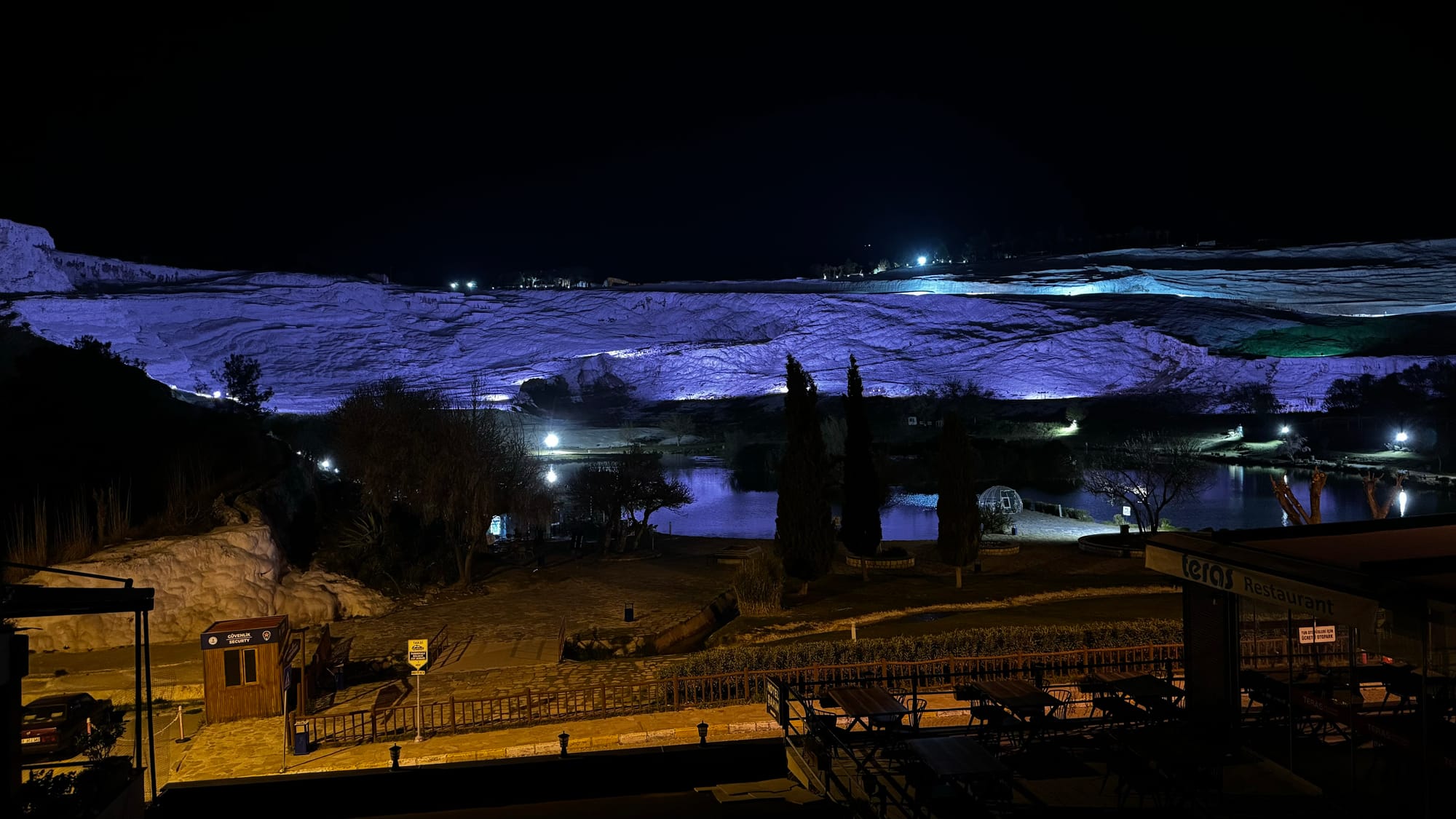
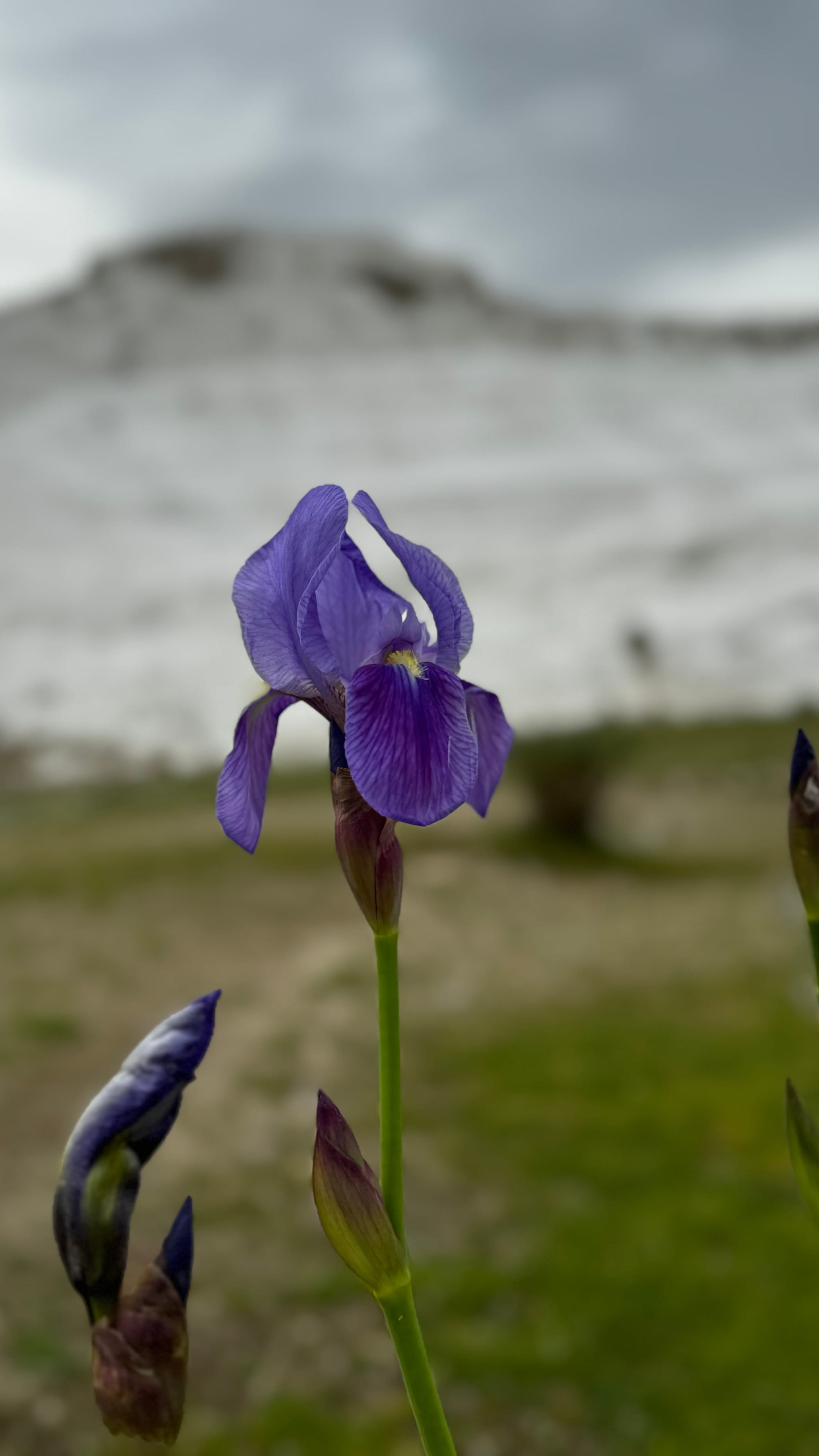
Pammukale and the travertines.
Friday morning, we were woken up by the sounds of balloons outside the hotel window, roughly 20 of them drifting past the marble travertines of Pammukale. After another consistently good Turkish breakfast, we were off to Hierapolis and the pools at Pammukale.
We learnt a bit more about Pammukale this time, it's a strange town – very run down and lots of old resorts. It seems that it's gone through various stages. In the early 1950s, it became a destination, and many locals took out loans to build hotels and resorts. As the Turkish government expanded the Aegean coast of Türkiye, the overnight visitors disappeared – instead staying on the coast and making a day trip. All the hotels collapsed and were shuttered. Then it was saved by Instagram, of all things!
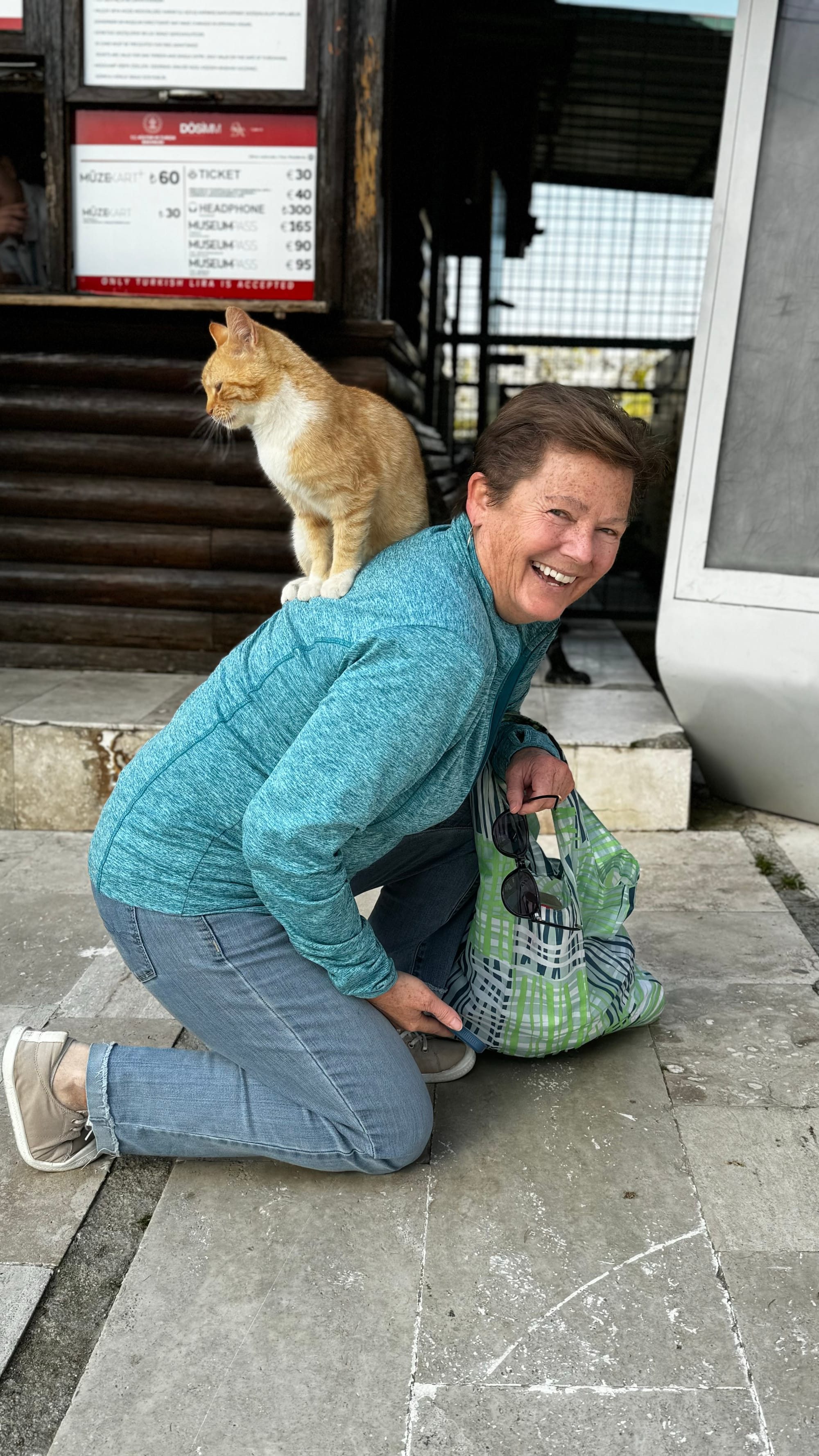
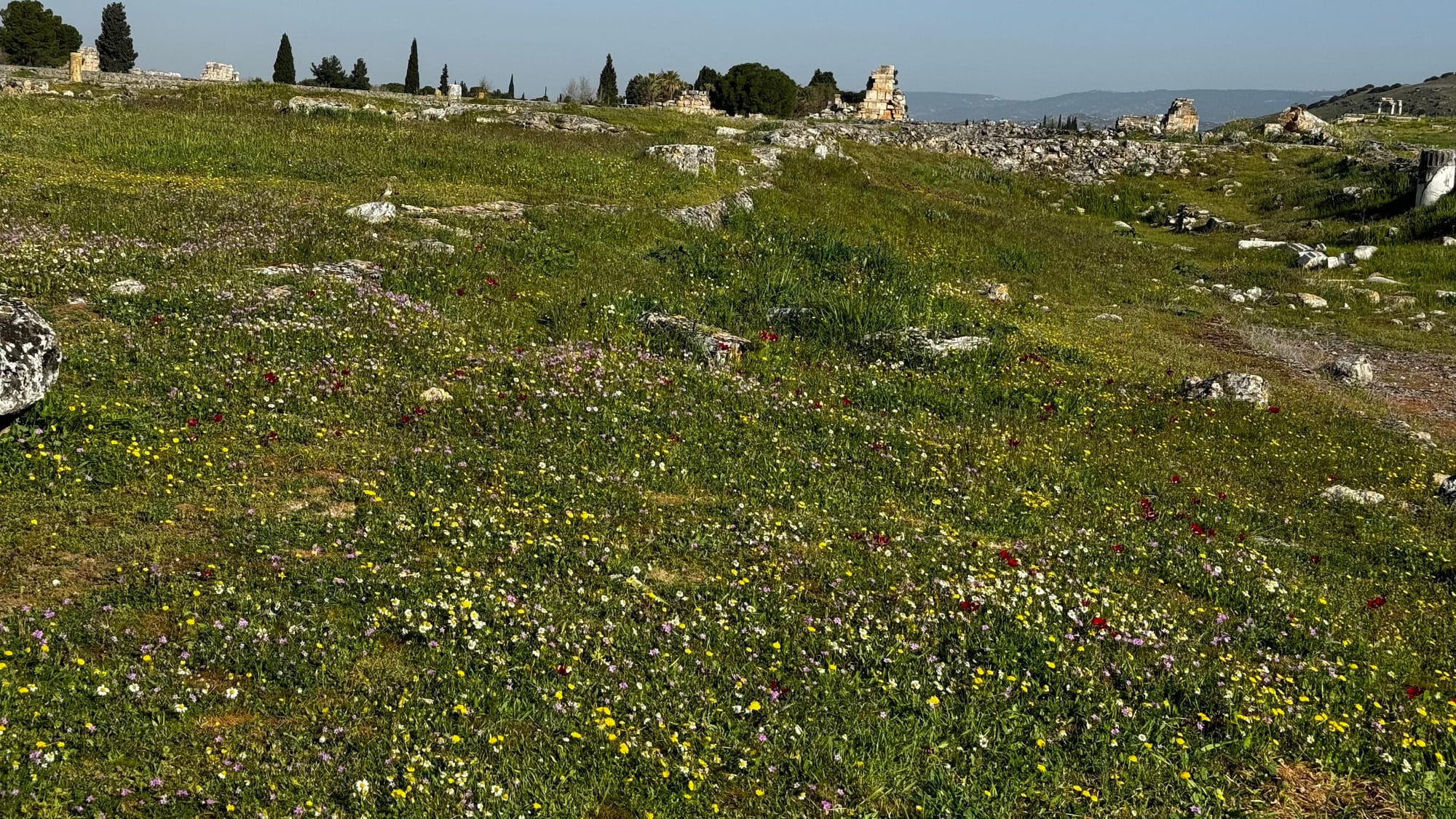
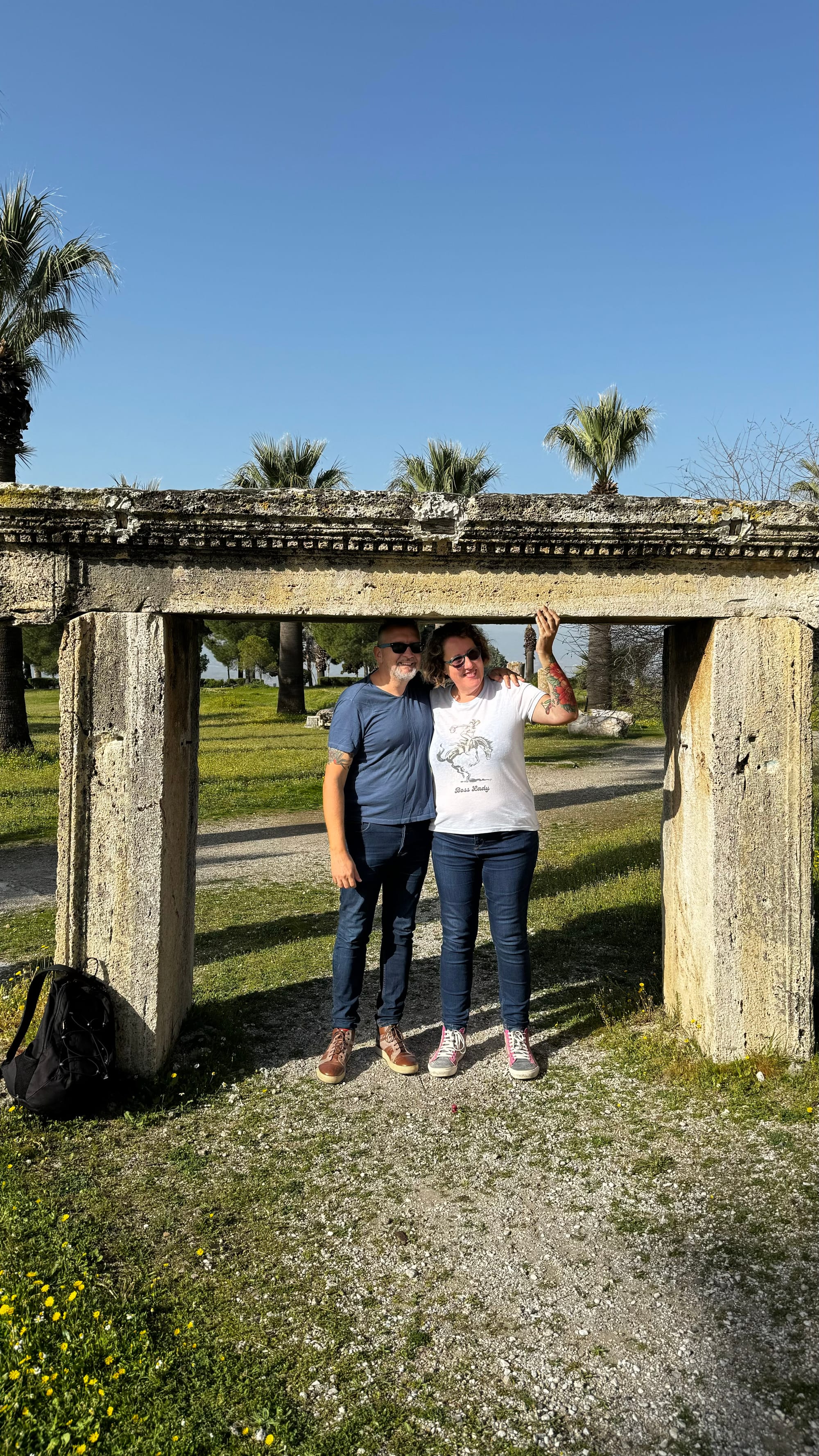
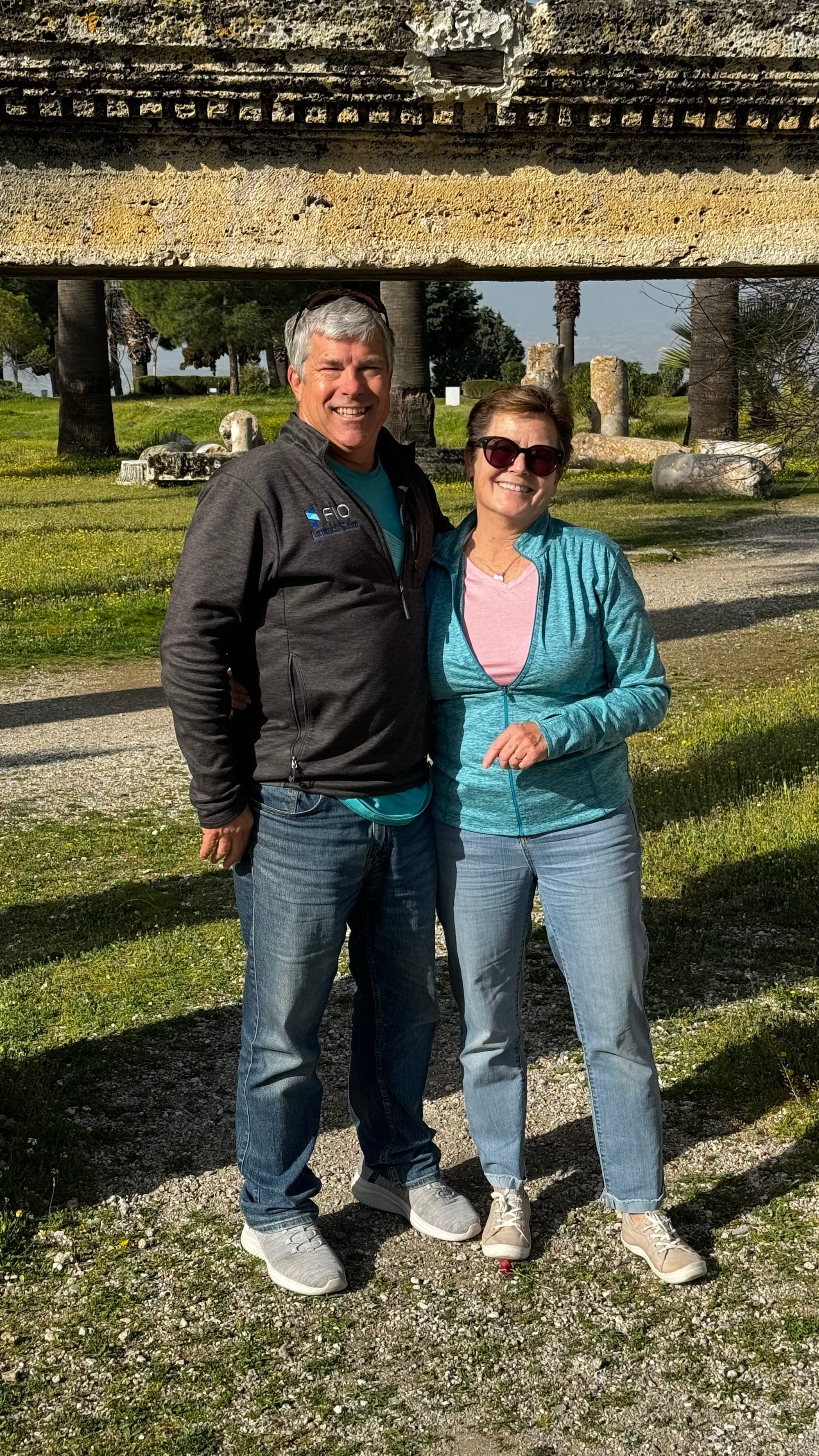
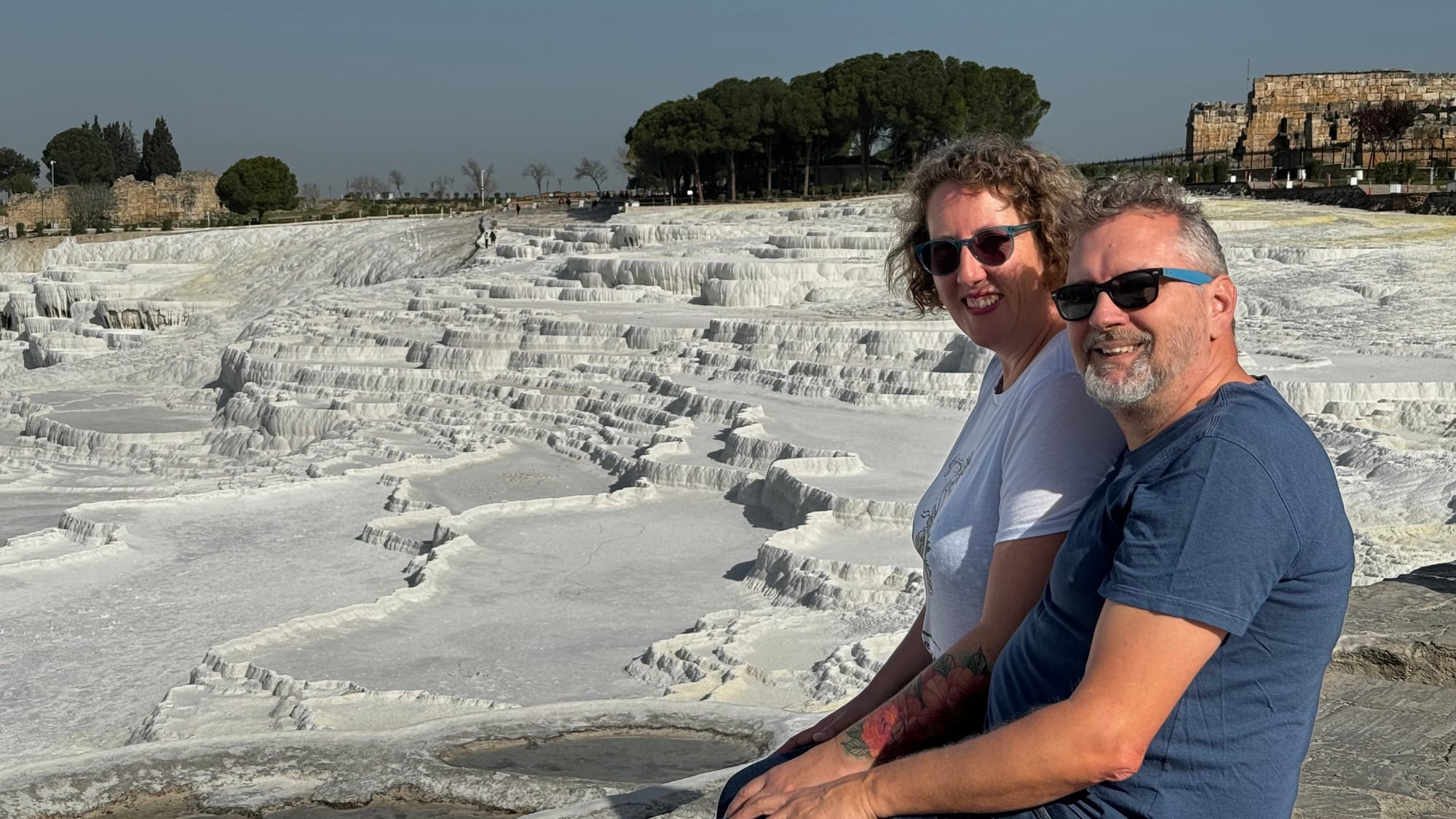
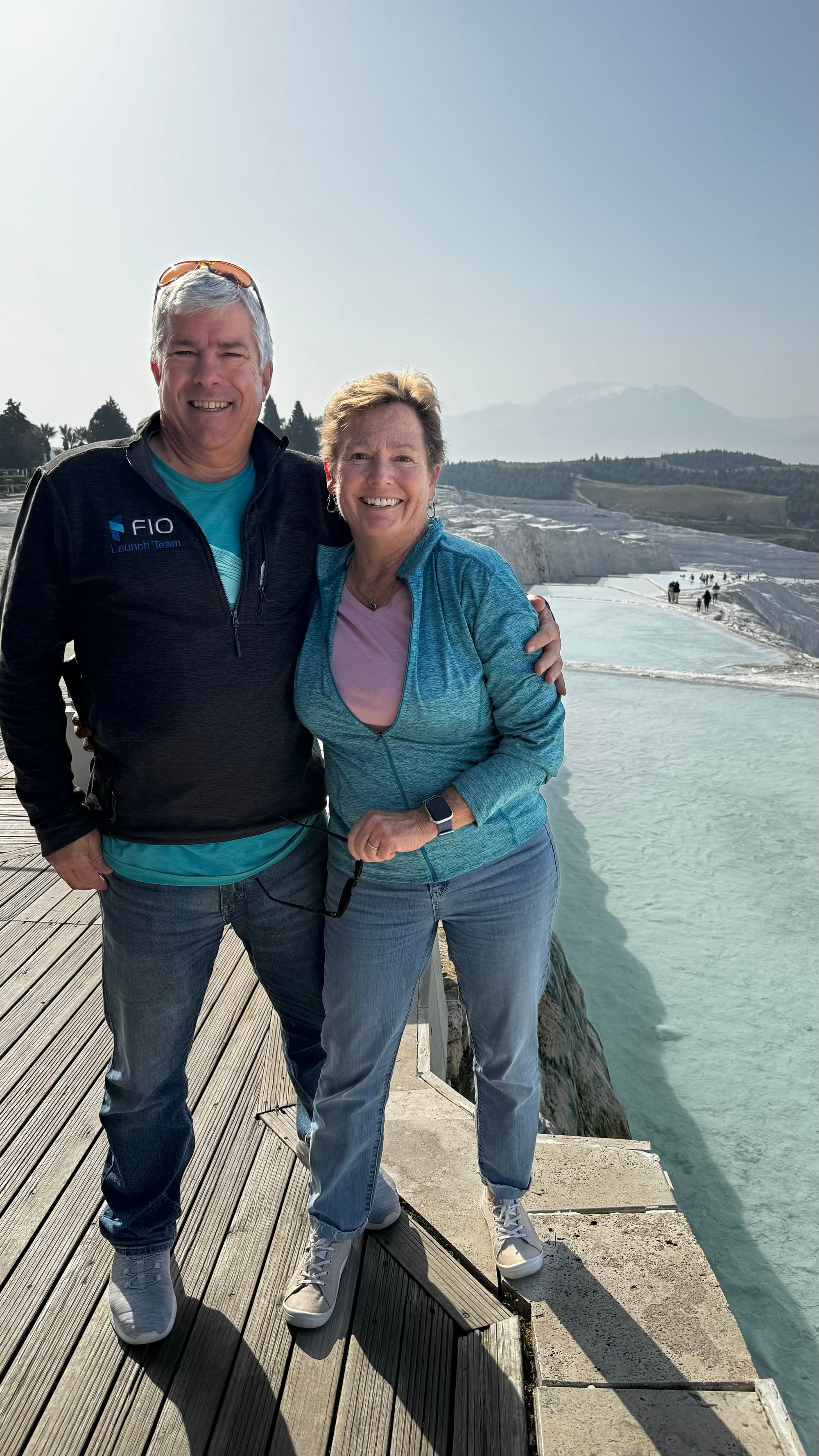
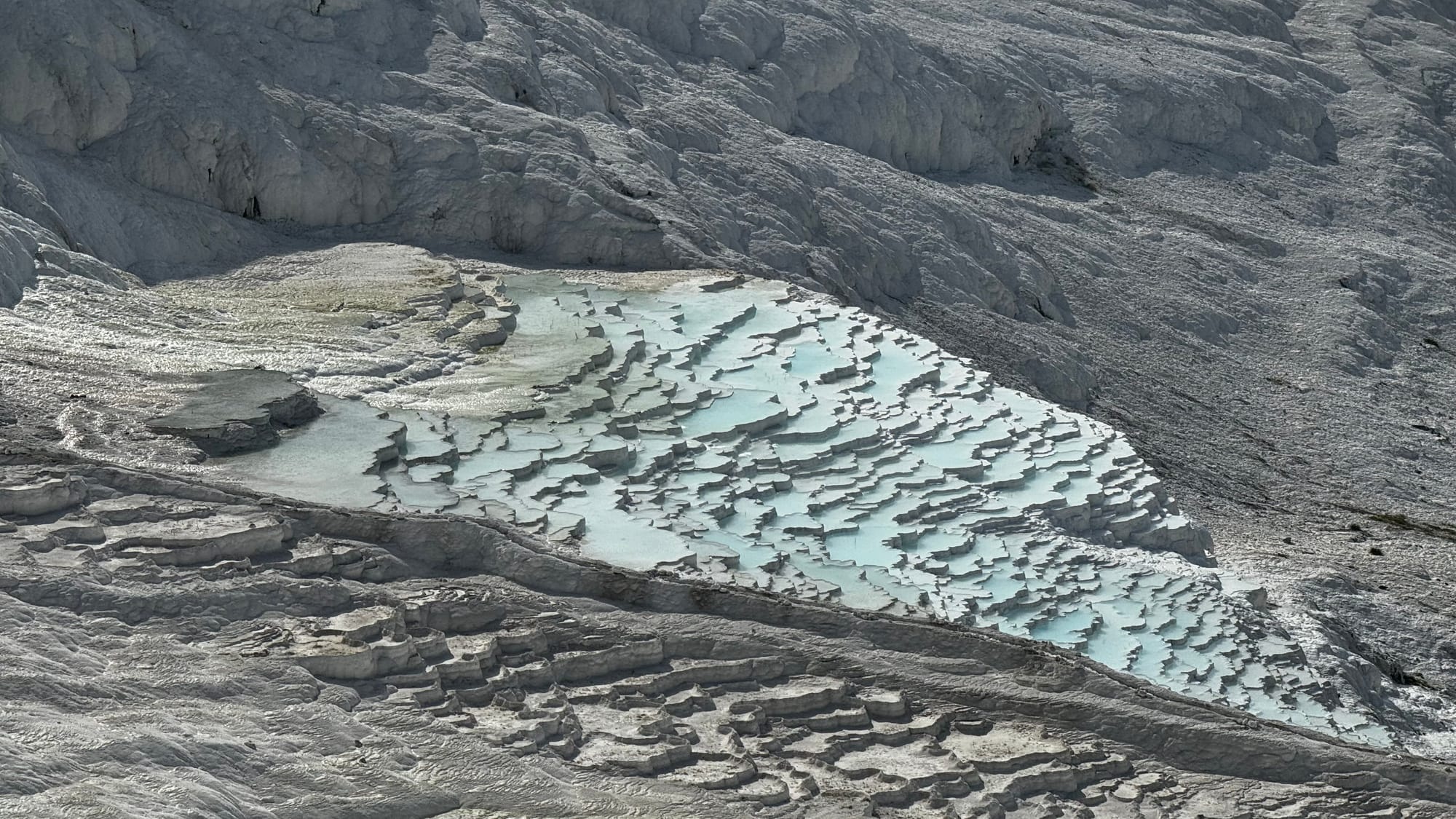
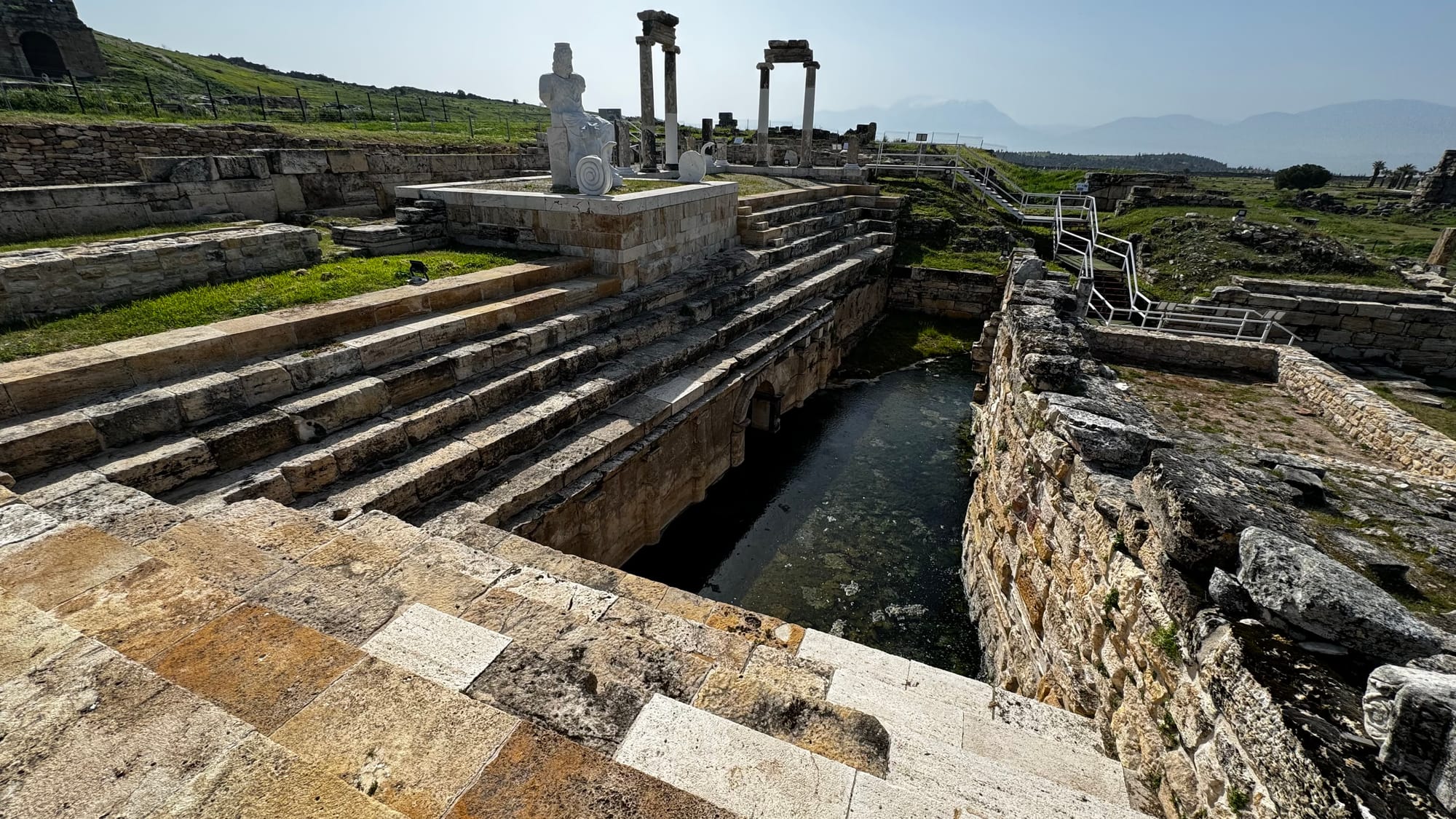
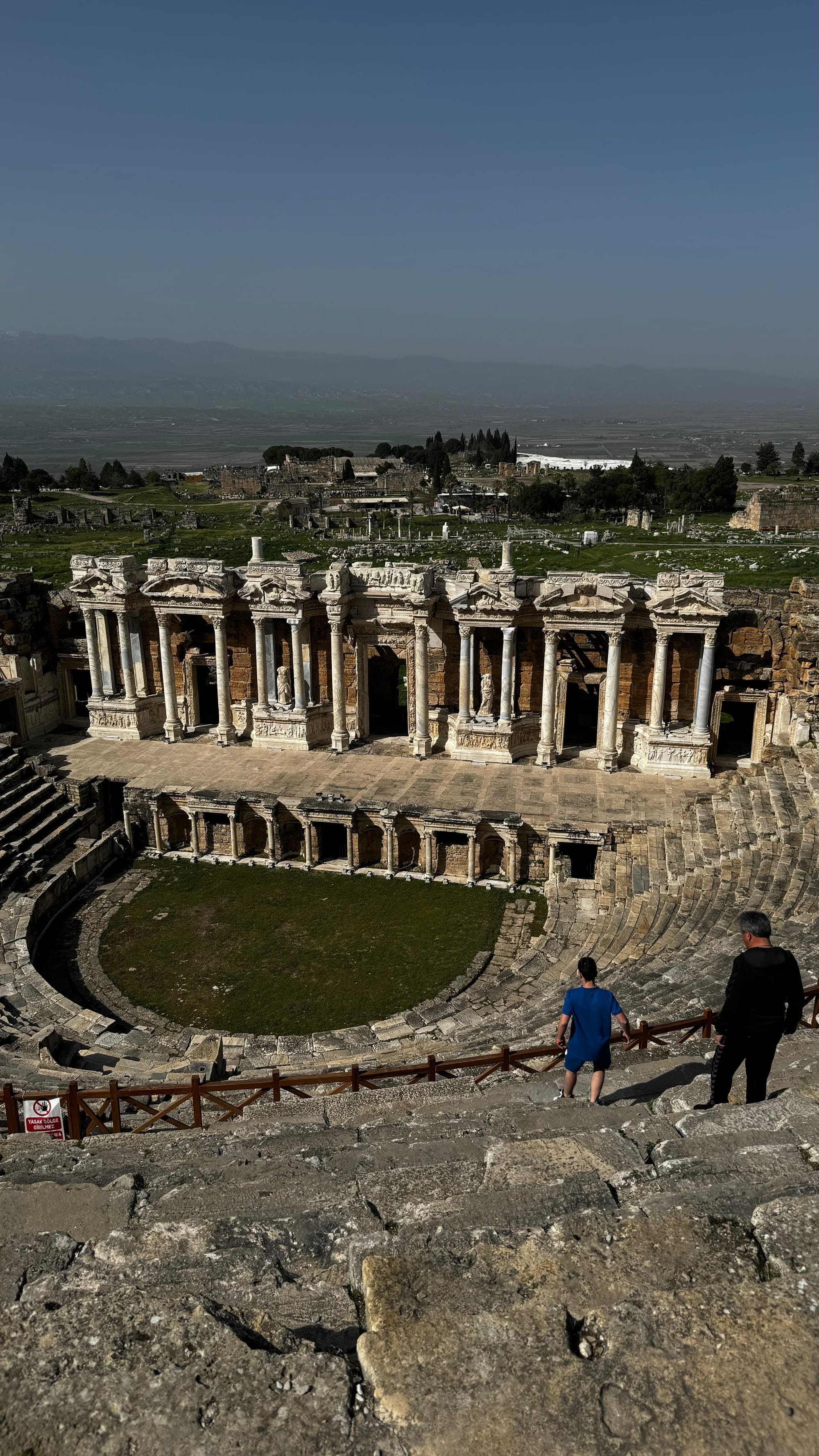
Visiting the travertines. Sarah bent down to pat the cat and it jumped on her back!
The images of people by the travertine pools became one of the "must visit" Instagramable destinations worldwide, and independent travellers again flocked to Pammukale. The hotels have slowly started to reopen as a new market has been discovered.
From the travertines, it was off to the ruins. My absolute favourite is the Plutonium at the Temple of Apollo and the spectacular amphitheatre. Once the walking was done, it was into the thermal springs to relax, then lunch and a drive back to Ayvalik.
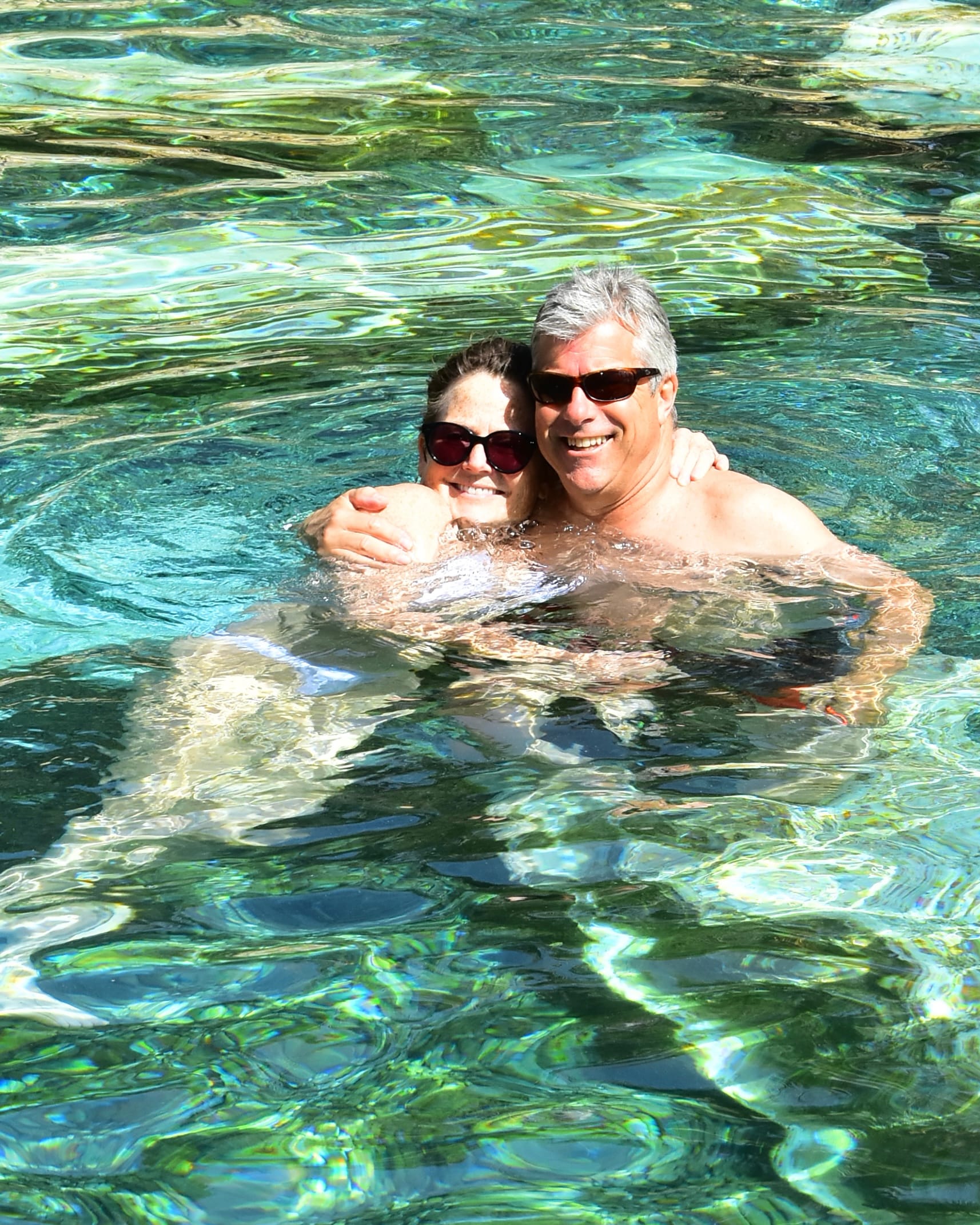
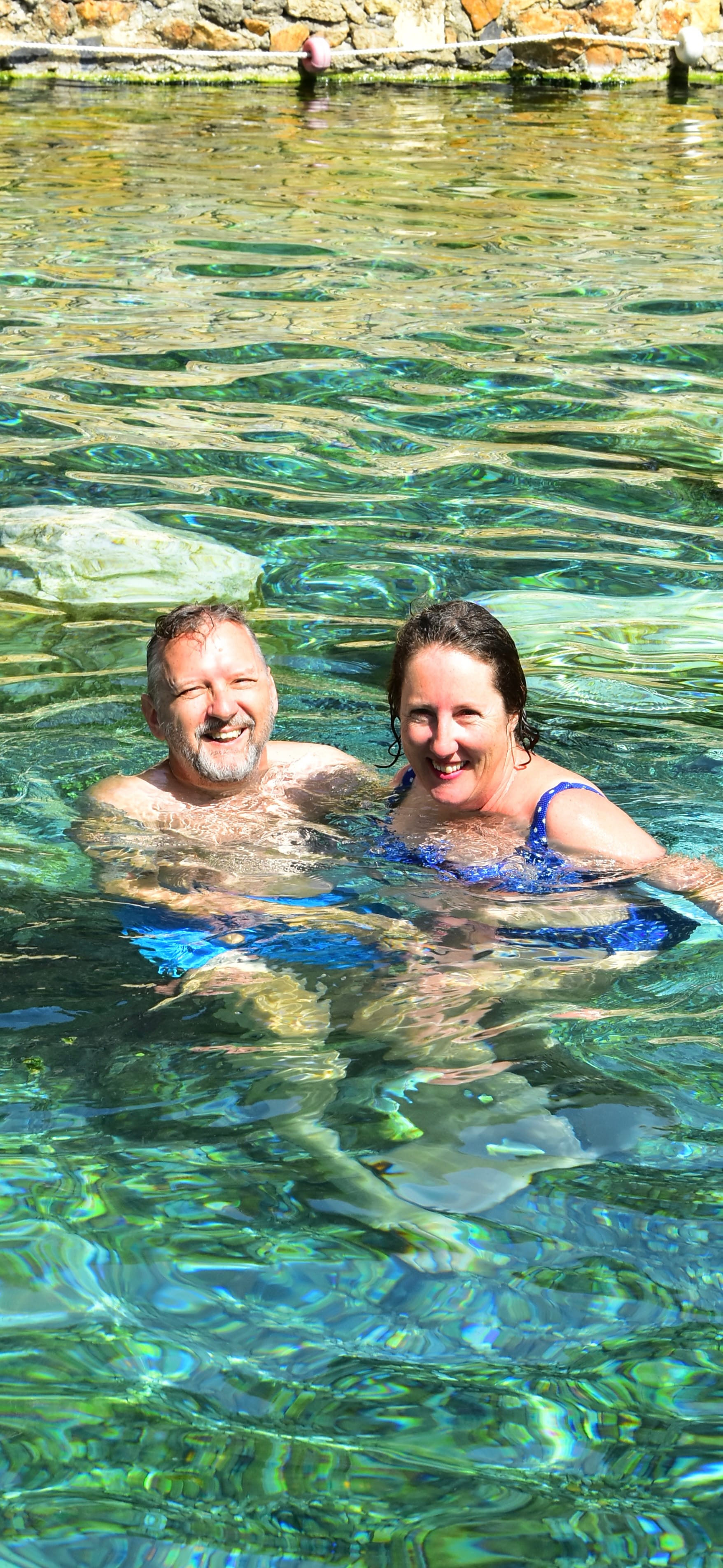
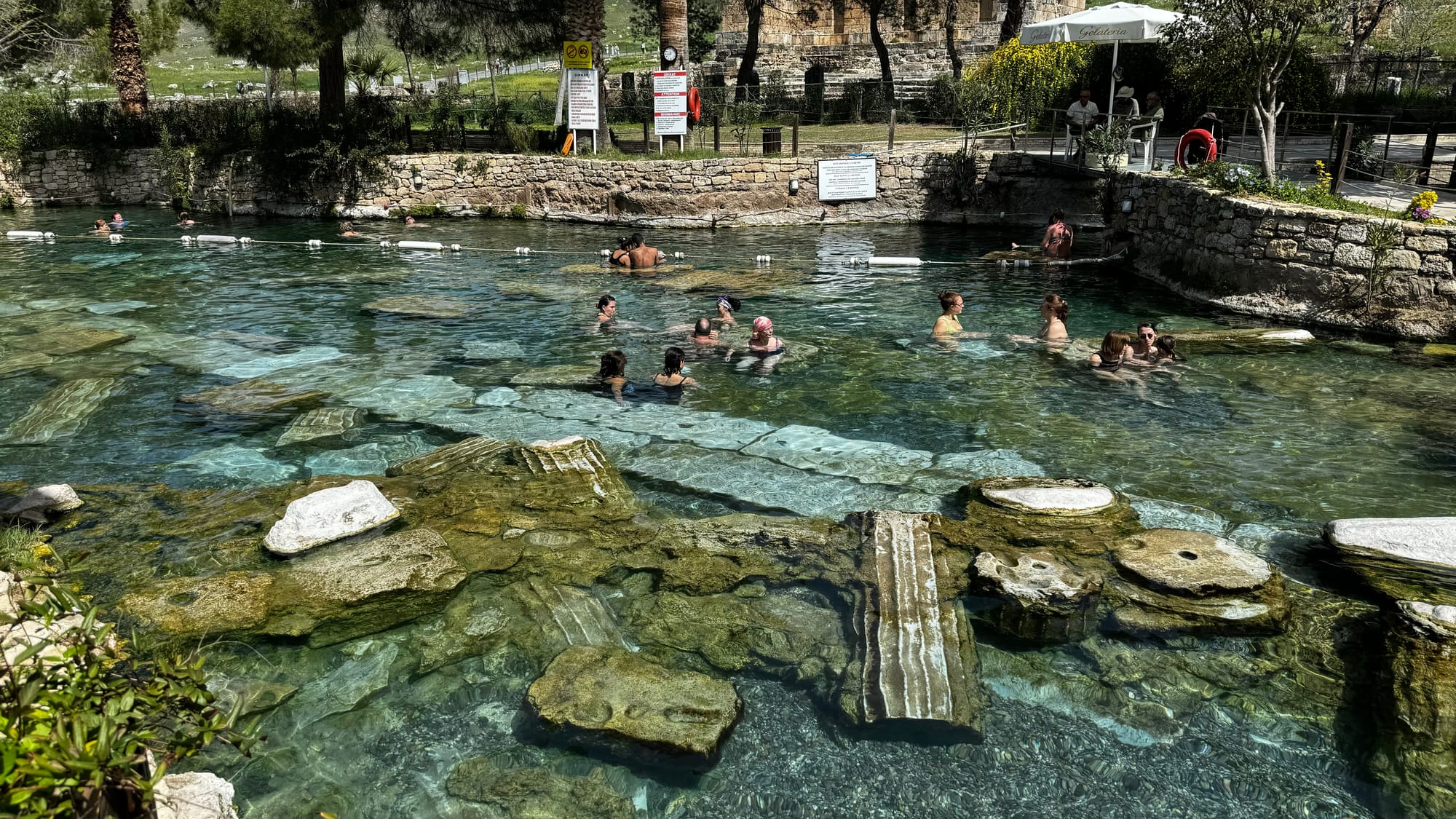
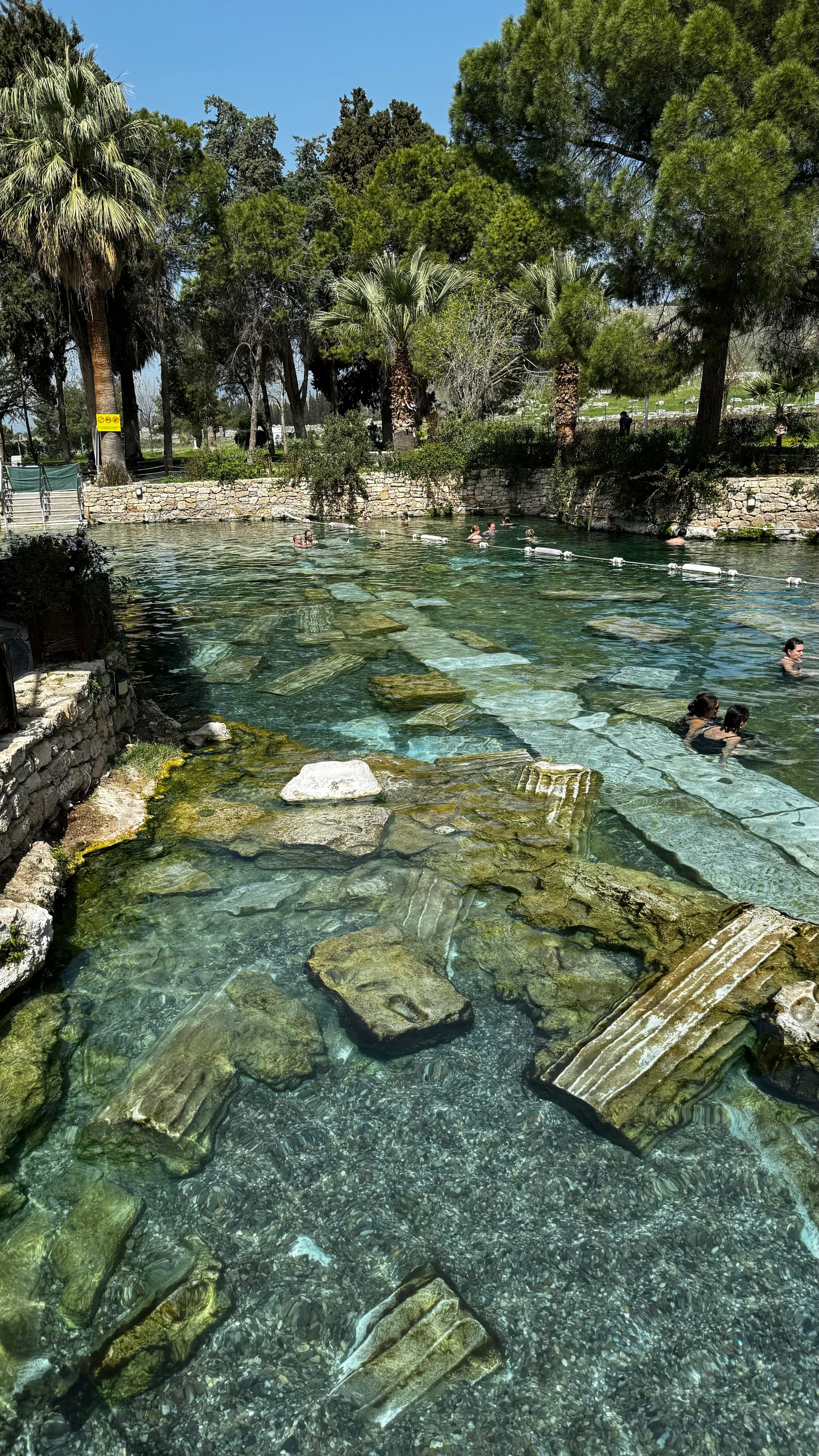
The Thermal Pools, one of our favourite things to do here.
We arrived back in Ayvalik around 18:30 and stayed in a surprisingly good hotel near the ferries. We sat out on the dock at the hotel bar, enjoying a drink and watching the sunset, and then, after a meal, it was off to bed early again. A final good breakfast, and on Saturday, we left the hotel around 8.45 am and were back at Mytiline Marina in Greece by 9.30 (about 1hr 45 minutes of travel door to door with the time difference). Amazing!
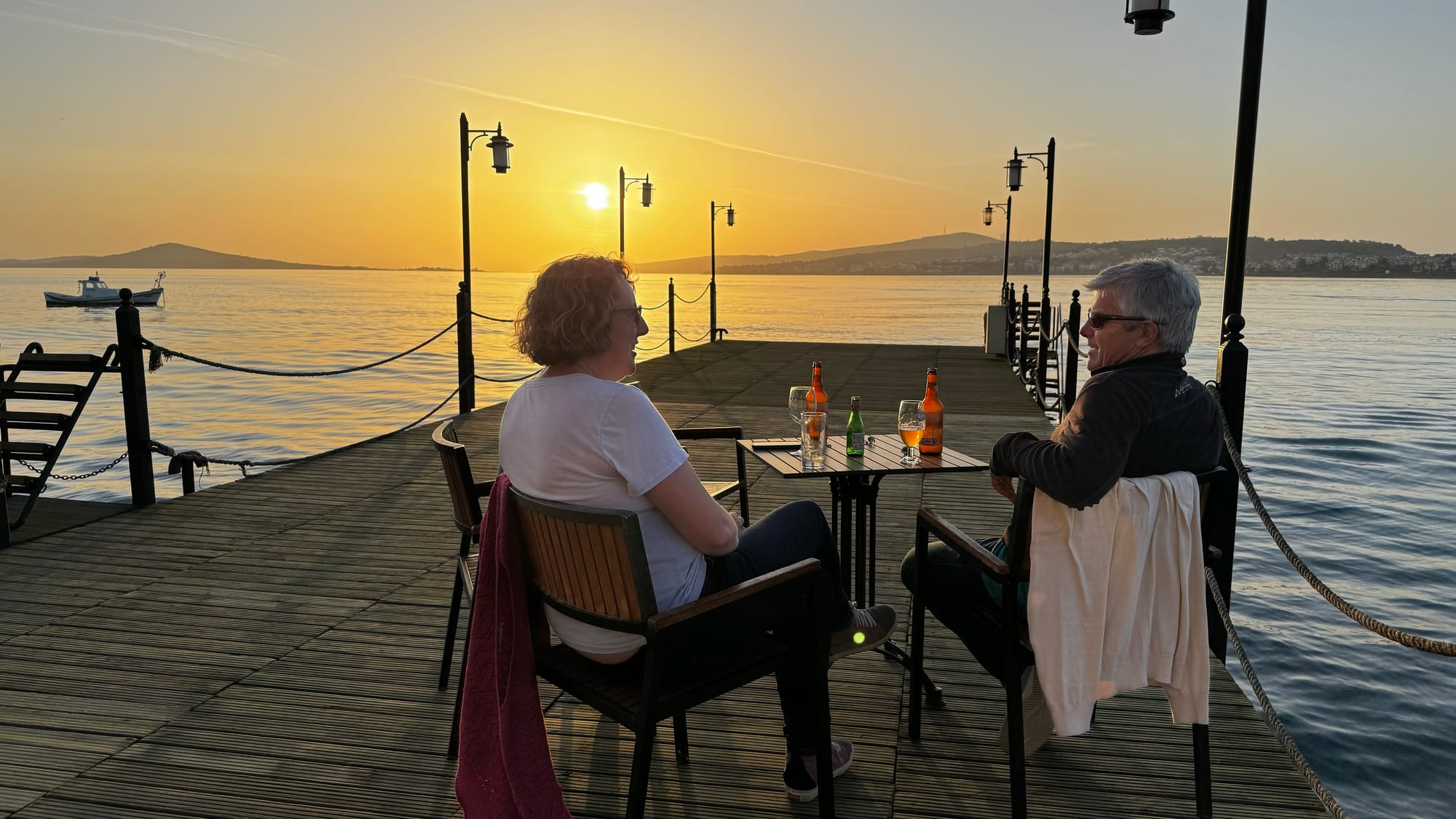
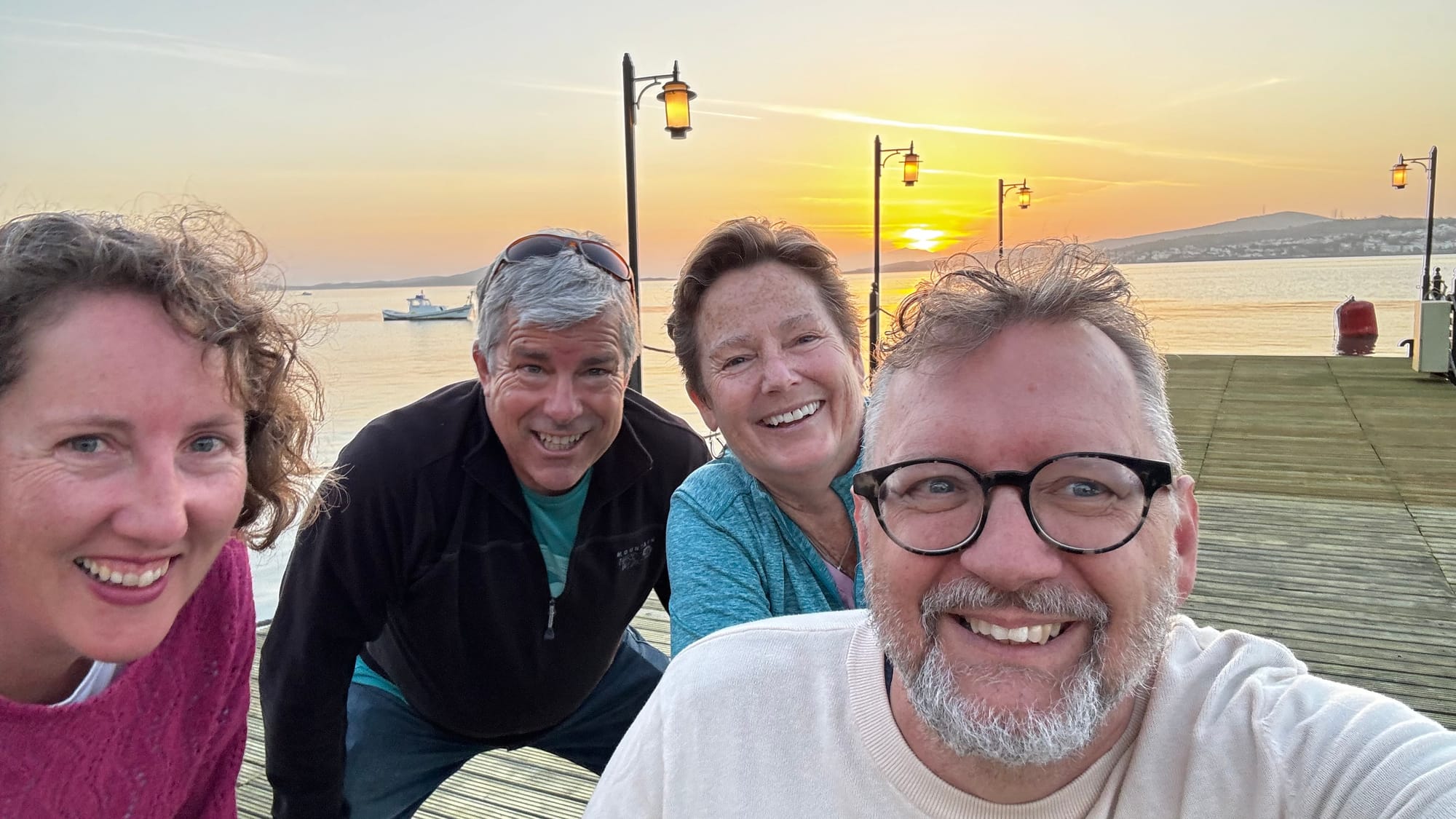
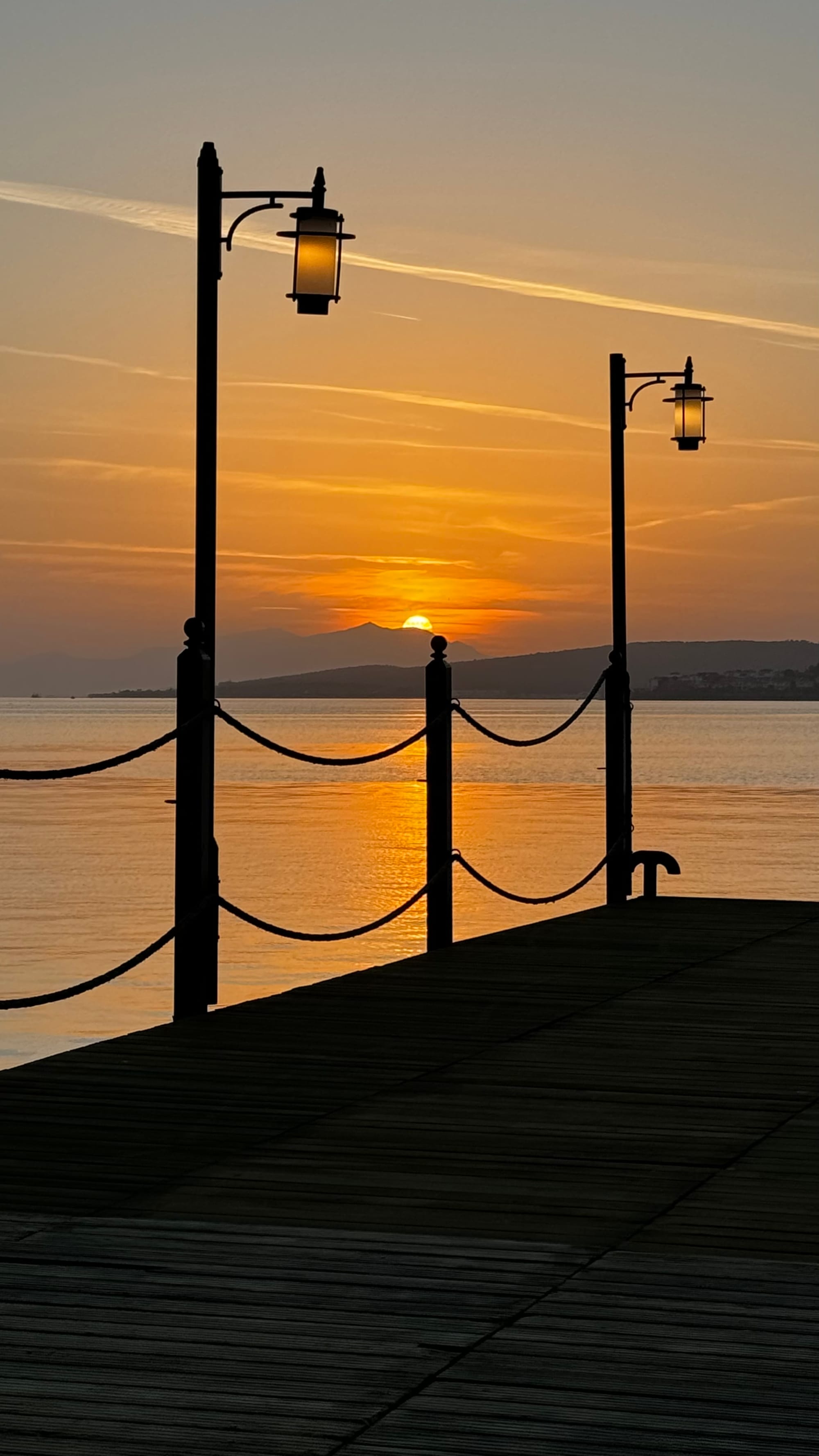
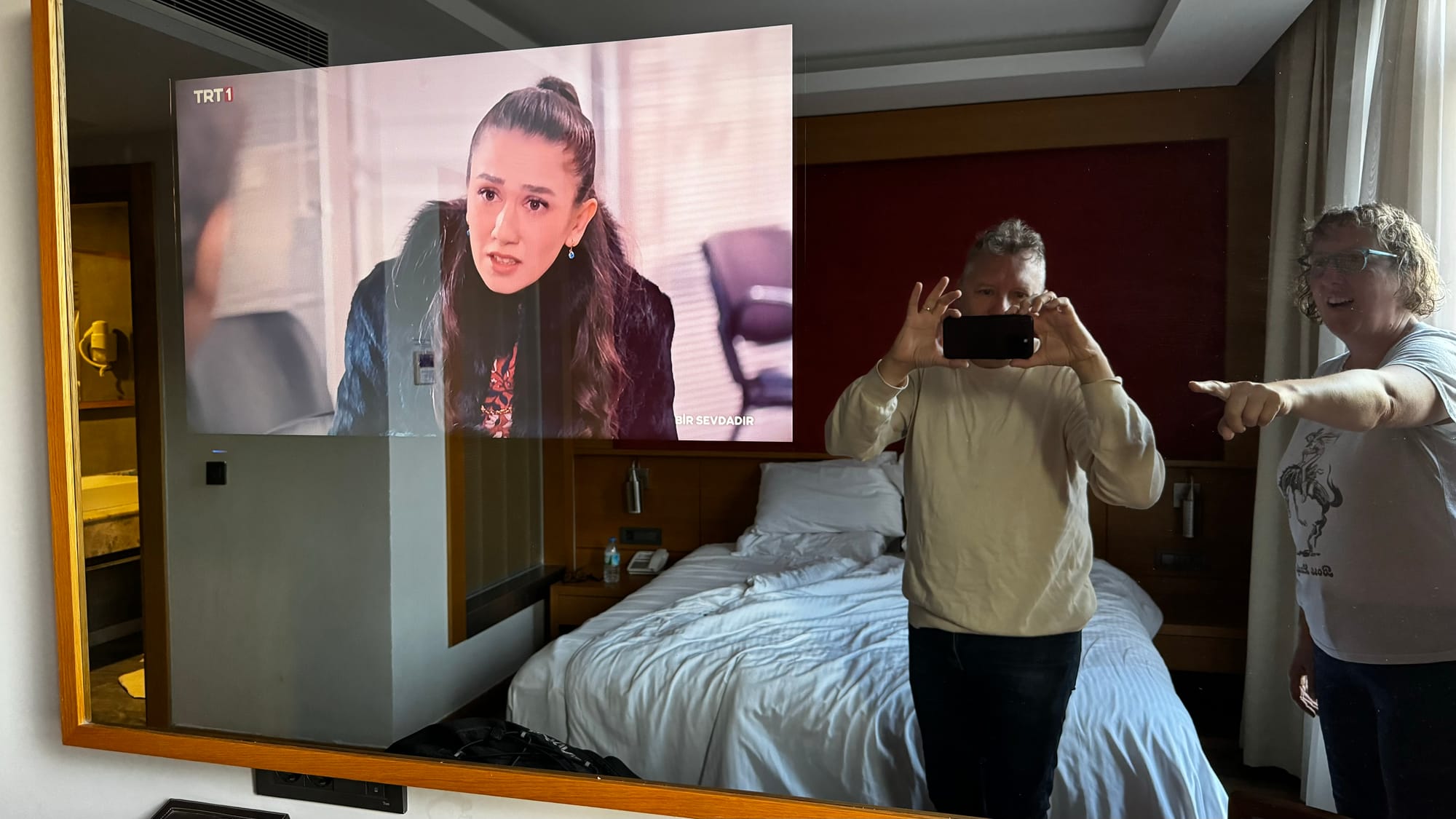
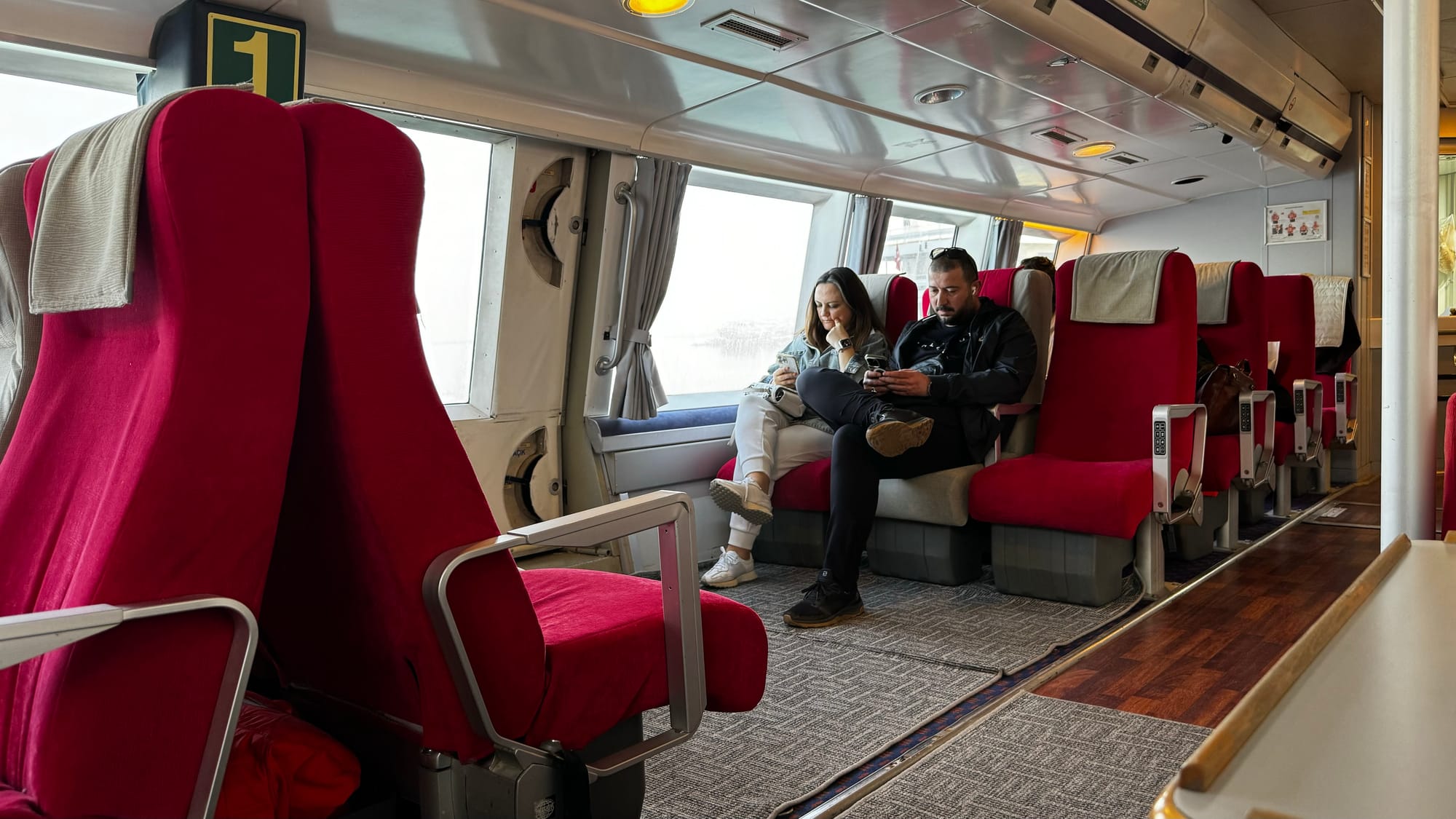
Back in Ayvalik on the last day. The hotel room had a TV behind a mirror! On the ferry back home.
Matilda is in good shape, although a big southerly storm has dumped red sand everywhere so she got a much needed wash this afternoon, and that's the week!
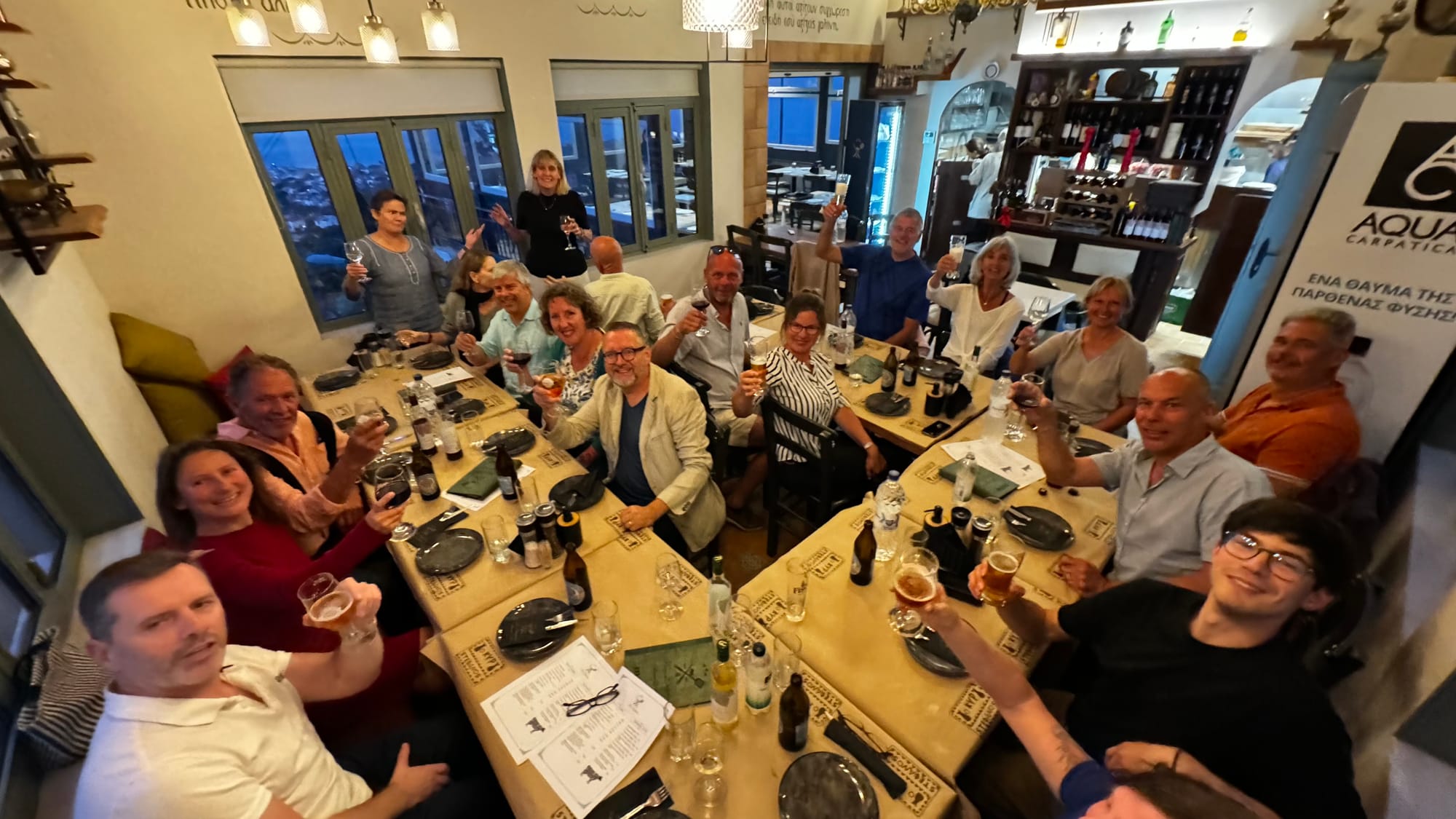
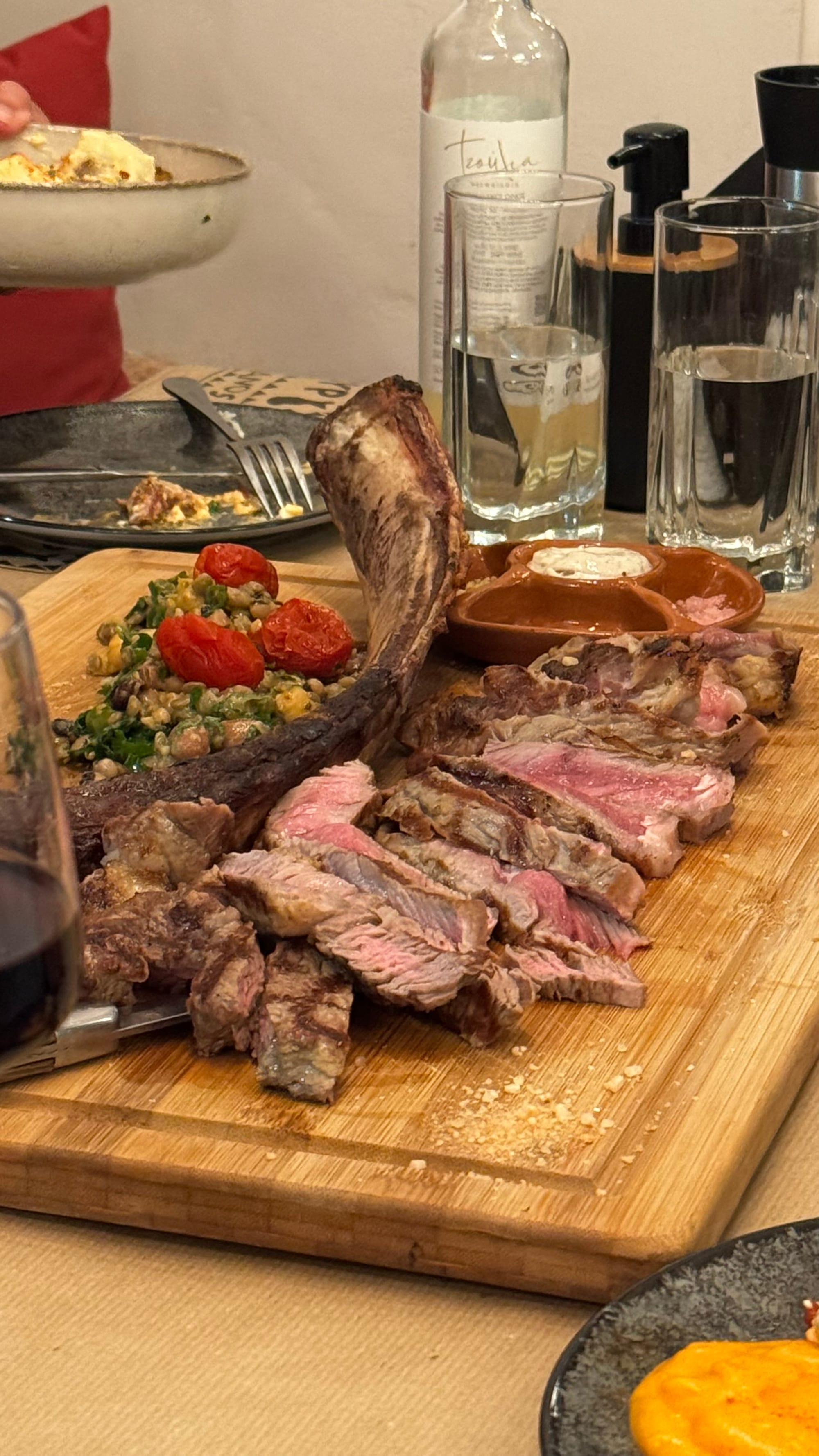
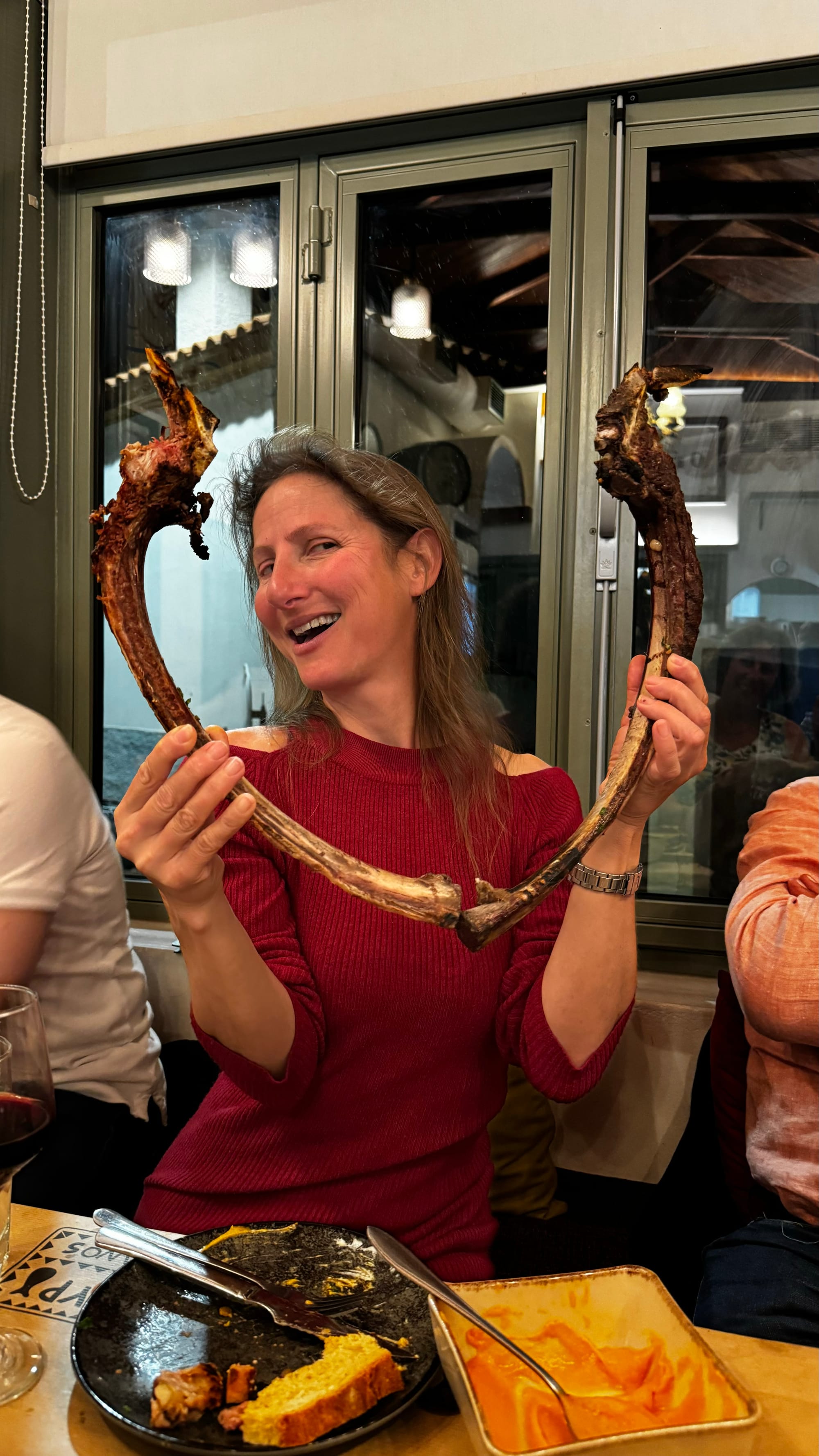
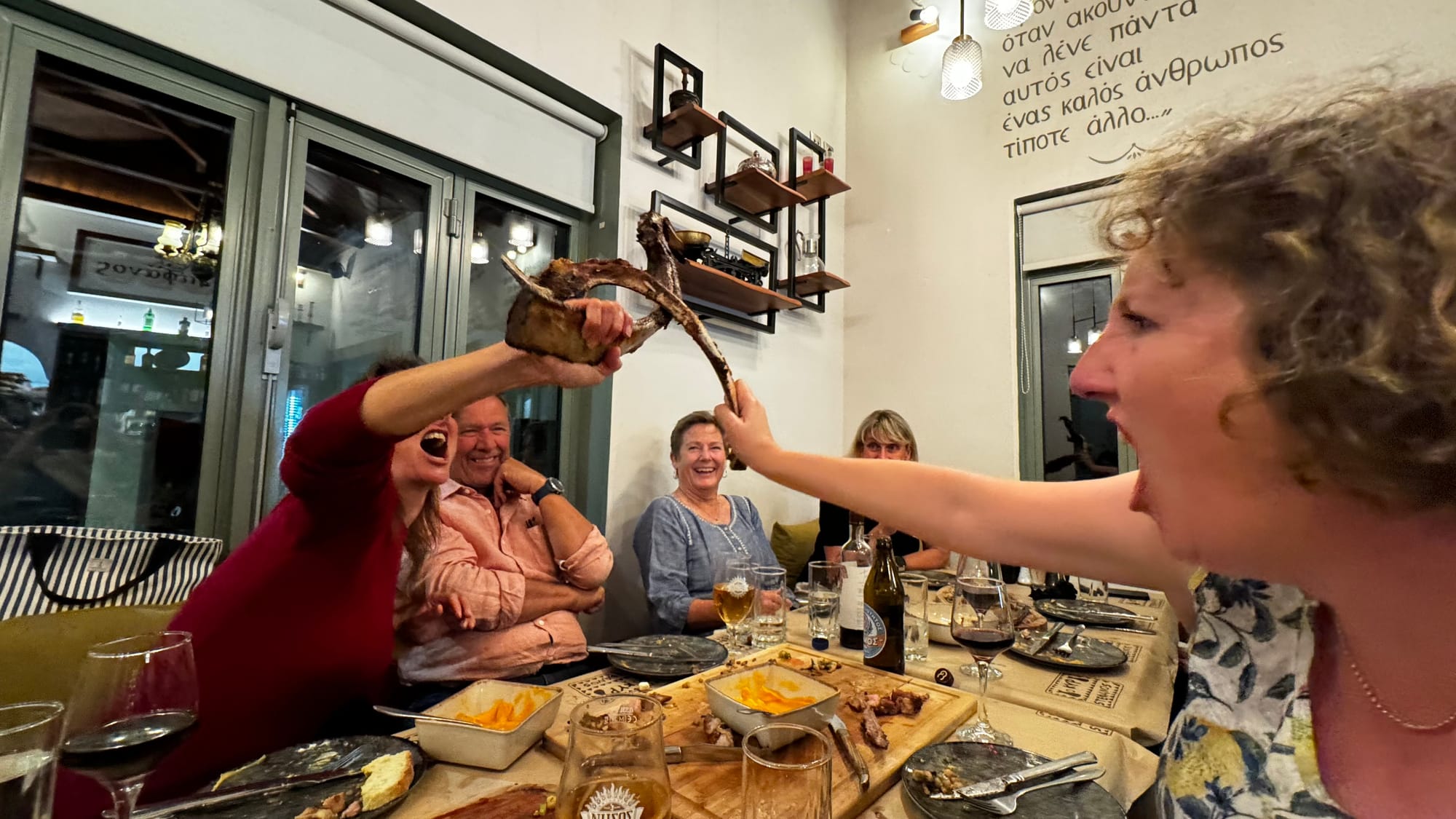
A great group of people and some very large Tomahawk steaks
The first of the other liveaboards is leaving the marina on Monday, so on Saturday night we had a dinner to wave farewell. It was at a steak restaurant high in the hills above Mytilini which is possibly one of the best we’ve been to in Greece. It was a great gathering of around twenty of us who have been here all winter. We won't be too far behind—the mechanic returns Monday for the final piece of work, and we'll be ready to start cruising ourselves.
Until next time,
Tim & Karina
